Le We Forget


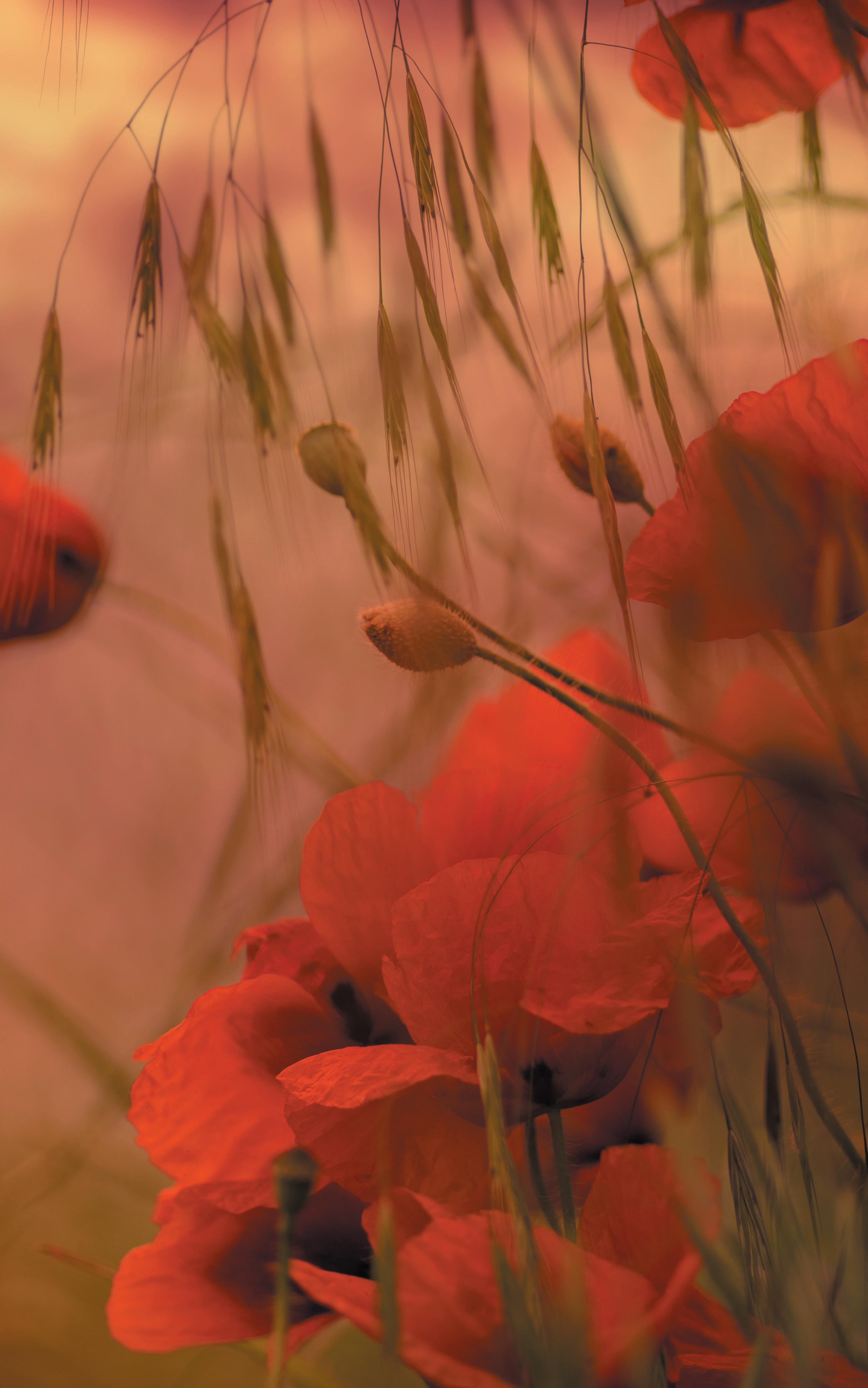

HOME OF THE FREE BECAUSE OF THE BRAVE WE REMEMBER THEM
2022
Since 2008 a publication of





104th YEAR REMEMBRANCE DAY SERVICE Friday, November 11, 2022 The Royal Canadian Legion, Branch 59 Moose Jaw 1919-2022 Service Conducted by Padre Rev Doug Sheppard 10:45 NATIONAL ANTHEM 10:47 Invocation: Padre Rev Doug Sheppard Scripture: Padre Rev Doug Sheppard Message: Padre Rev Doug Sheppard Prayers: Padre Rev Doug Sheppard Last Post: Capt (Ret’d) Rick Elmer CD Moment of Silence - Lament: Piper Michelle Gallagher Rouse: Capt (Ret’d) Rick Elmer CD Act of Remembrance: Padre Rev Doug Sheppard LAYING OF OFFICIAL WREATHS 1. Widows and Children of Veterans - Memorial (Silver) Cross Recipient 2. Government of Canada 3. Government of Saskatchewan 4. City of Moose Jaw 5. Canadian Armed Forces 6. Dragoons 7. 2DN Forces Flying Training School 8. 431 Snowbird Air Demonstration Squad 9. Veterans of Moose Jaw and District 10. Royal Canadian Mounted Police 11. Moose Jaw Police Services 12. Anavets Provincial Command 13. CAE Aviation Training 14. Moose Jaw Events Centre 15. New Southern Plains Metis Local 160 BENEDICTION Padre Rev Doug Sheppard ROYAL ANTHEM DEPARTURE OF COLOURS & GUESTS 104th YEAR REMEMBRANCE DAY SERVICE 1919-2022 The Service will be conducted by PADRE REV DOUG SHEPPARD The Royal Canadian Legion branch 59 will be open at 11:00 am ARRIVAL OF COLOURS AND GUESTS NATIONAL ANTHEM INVOCATION SCRIPTURE MESSAGE PRAYERS LAST POST MOMENT OF SILENCE ROUSE ACT OF REMEMBRANCE laying of wreaths ROYAL CANADIAN LEGION POPPY FUND COLLECTION choir selection BENEDICTION ROYAL ANTHEM DEPARTURE OF COLOURS AND GUESTS 10:45 The Royal Canadian Legion Branch 59 lounge will be open following the service. Lunch will be available. Adults only. PLEASE CONSIDER JOINING THE ROYAL CANADIAN LEGION. We appreciate your support
At this time of the year, we take time to ponder on the great sacri fices made by those who fought for our freedom during the epic bat tles fought in WWI and WWII. It is a sobering thought to reflect on just how much was lost by those valiant soldiers who served and all those that assisted in the war efforts, as well as con template on the life and freedom we still continue to enjoy, decades later. The cost of our freedom came with a bloody price and should never be taken for granted.
Threats of war and rumours of war have loomed overhead throughout the centuries, but we have not yet seen another world war declared since the end of WWII on September 2, 1945, although the escalation of tensions around the globe loom closer everyday.
It is just as imperative now to pay homage and give thanks to our war heroes, those that were lost in bat tle and those that still serve, as well as remember those who continue to serve others: our military, local police force, health care providers and emergency medical services. We appreciate your service for the betterment of us all.
In the pages of this Remembrance Day section, there are exceptional stories that speak of sacrifice and human loss, as well as many that highlight the resil iency of the human spirit. We would like to thank our journalist Jason Antonio for his well-researched and written contributions, as well as extend our apprecia tion to Richard Dowson and some of the other contrib utors for the content they have provided.
We could never forget to highlight the great work that our local Royal Canadian Legion Branch 59 does in their dedication to serving Veterans, including serv ing military and RCMP members and their families, to promote Remembrance, and to serve our community and our country.
Please remember to buy a poppy in support of our local Legion; donations collected during the Poppy Campaign go to Veterans and their families within our community and to help ensure Canadians ‘never forget’.
As well, make time to attend the Remembrance Day Service this year and support our local Legion. Lest We Forget! We Will Remember Them!
Joan Ritchie, Editor Moose Jaw Express/MooseJawToday.com

Marching Men
by Marjorie Pickthall
Under the level winter sky I saw a thousand Christs go by. They sang an idle song and free As they went up to calvary.
Careless of eye and coarse of lip, They marched in holiest fellowship. That heaven might heal the world, they gave Their earth-born dreams to deck the grave.
With souls unpurged and steadfast breath They supped the sacrament of death. And for each one, far off, apart, Seven swords have rent a woman’s heart.
In Flanders Fields
BY JOHN MCCRAE
In Flanders fields the poppies blow Between the crosses, row on row, That mark our place; and in the sky The larks, still bravely singing, fly Scarce heard amid the guns below.

We are the Dead. Short days ago We lived, felt dawn, saw sunset glow, Loved and were loved, and now we lie,
In Flanders fields.
Take up our quarrel with the foe: To you from failing hands we throw The torch; be yours to hold it high. If ye break faith with us who die We shall not sleep, though poppies grow In Flanders fields.
Tragic Irony of Navy Service in World War Two Two
Moose Jaw Sailors – Tragic ‘Firsts’ in WW 2
By Richard Dowson
The First Moose Jaw man killed in action in World War Two was Able Seaman Rodney Woodward who grew up on First Avenue and graduated Central Collegiate. A Royal Canadian Navy sailor. Rod ney was loan to the Royal Navy and served aboard the Fleet Tender, HMS Watchful.
Rodney and the HMS Watchful crew made several trips to the beach at Dunkirk between May 27 and June 4, 1940 saving solders.
Just six weeks later, on July 19, 1940, Able Seaman Woodward was killed when HMS Watchful was strafed by two German Messer schmit aircraft near Yarmouth, En gland.
The War Against Japan
Fireman Second Class, Roger J. Bergin, United States Navy, Killed


in Action December
7, 1941
The First Moose Jaw man killed in action against the Japanese in World War Two was Fireman Sec ond Class, Roger J. Bergin, Unit ed States Navy. Roger grew up on Lillooet Street, completed his el ementary schooling at St. Agnes School and attended high school in Detroit, Michigan. His brothers served in the Canadian Army.
Bergin died at Pearl Harbour when his ship, the USS Arizona was sunk by the Japanese Imperial Navy on December 7, 1941
Irony
Both were Moose Jaw sailors. Both were killed in action. Both died serving aboard a non-Canadi an ship.
MOOSEJAWEXPRESS.COM ✦ REMEMBRANCE DAY ✦ NOVEMBER 2022 • PAGE 3
Editor'sNote
Able Seaman Rodney Wood ward, Royal Canadian Navy Killed July 19, 1940
Boy Sailor Woodward, #2938, at Esquim alt, B.C. 1937
Petty Officer Second Class, Fireman Second Class Roger Joseph Bergin, United States Navy
Assiniboia airman’s 85 missions saw him bomb enemy bases, support liberated concentration camps
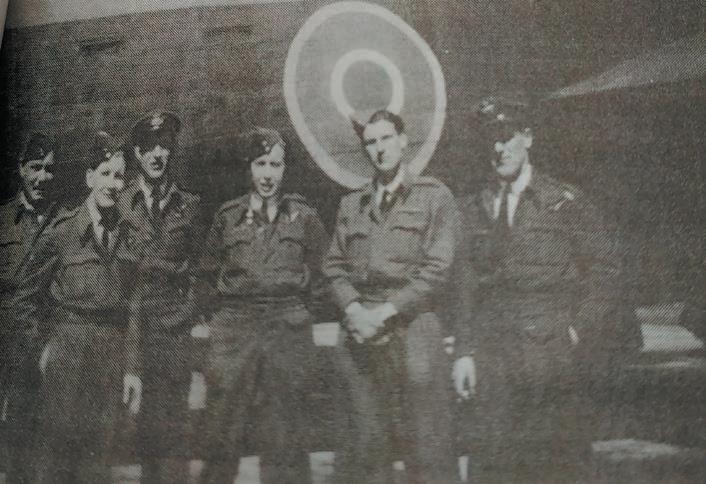
It was mid-1942 and Flight Lt. Ber nard (Bernie) Schauenberg and his crew were making their third raid into Germany when they found themselves in the crosshairs of ene my anti-air guns.
By Jason G. Antonio
This heroic effort to bomb the sub pens and help fly the damaged plane home earned Schauenberg the Distinguished Flying Cross (DFC). The airman received the medal in October 1942 from King George VI at Buckingham Palace.
Schauenberg’s first tour of duty ended that November and he cele brated flying 32 missions against German ships. He later became a flight instructor at RAF station Bassingbourn from November 1942 to June 1943.
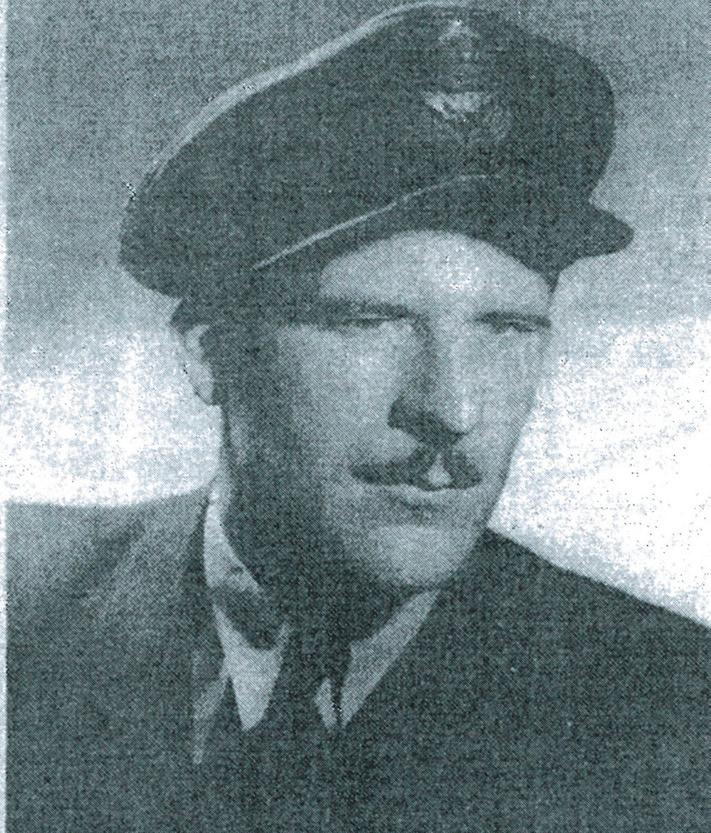
The itch for active duty was still present, so the RAF posted Schauenberg to No. 49 Squadron at Fiskerton, England, where he flew in four-engine Lancaster bombers. The aircraft enabled him to fly 22 mis sions against German targets.
Schauenberg later joined No. 167 B.D. Squadron, where one of his
ticed a girl at another table. He com mented to his friends about how beautiful the woman was and how he wanted to meet her.
The girl made a similar com ment to her girlfriends, and later, Schauenberg and Sheelagh Halligan spoke. She was from Manchester, England and worked in a factory supplying parts and equipment to keep the Allied forces rolling.
After only two weeks, he pro posed, and she accepted. Two weeks later, on Oct. 30, 1943, they married. By then, Schauenberg had complet ed his second tour of duty, adding another 31 missions in Lancaster bombers to his service record.
Schauenberg, then 22, was fly ing as a wireless operator/air gunner in a twin-engine Wellington bomb er with the Royal Air Force’s (RAF) No. 12 Squadron out of Binbrook, England.
His plane was loaded with a 4,000-pound bomb, ready to be dropped on the Germans’ subma rine pens at Brest, France. However, the base was protected like a fortress and bristled with guns.
The Germans shot up the Wel lington “pretty bad,” killing the nav igator in his seat and forcing the sec ond pilot to bail out. Yet, between the first pilot and Schauenberg, they flew the heavily damaged plane to England with enemy planes pursu ing them.

The Assiniboia-born airman was in some pain because he had been shot in the back by an anti-air craft shell the size of an index finger.
“It was the only time that I got shot during the war,” he said.

duties was to fly diversionary raids into Italy while other Allied bomb ers flew raids into France and Ger many.
“They (the other bombers) were the ones that flew over Germany and blew up dams and other sourc es of concern,” he said. “While they were doing that raid, our diversion ary raids into Italy drew the night fighters. These night fighters would be waiting for us on the return trip.”
While on one of his 10-day leaves in 1943, Schauenberg and his buddies were in a pub when he no
The military shipped the couple to Canada, where Schauenberg par ticipated in a heavy transport course in New Brunswick. He was later posted to Edmonton in November 1943 with No. 165 Heavy Transport Squadron, where he flew equipment to the North West Territories.
During one trip from White horse, Yukon, to Aishihik, NWT, Schauenberg recalled temperatures hovering around -61 Celsius, which forced the aircrews to cover the engines with tarps and run gas oil burners underneath all night long.
“The Americans began using the North West Staging Route to supply their posts in Russia and Alaska when German and Japanese submarines started hitting ships with supplies,” he recalled.
“The Russians needed aircrafts, so the Americans sent squadrons of fighters and light bombers all the way to Alaska and then floated them across the Bering Strait to Russia … .”
After Germany surrendered on May 8, 1945, Schauenberg was posted to Biggin Hill, England, to fly goods into the war-torn country and fly out displaced people. Many survivors needed food and med
icine — penicillin was a “wonder drug” — because Germany had very little.
Schauenberg’s crew also flew supplies into liberated concentra tion camps. The hollowed faces of prisoners, rotting bodies and smell of death stayed with him forever, as did the guards’ comments: “What did we do? We did nothing wrong. They are only Jews.”
“In some of those concentration camps … . Well, the rest of the war was nothing compared to that,” he added. “And I’ll never forget.”
Schauenberg was released from the military in 1946 and returned home to Canada with Sheelagh. They enjoyed 61 years of marriage; both died in 2004 and both at age 83.
The Moose Jaw Express thanks Bernard Schauenberg’s son, Kev in,
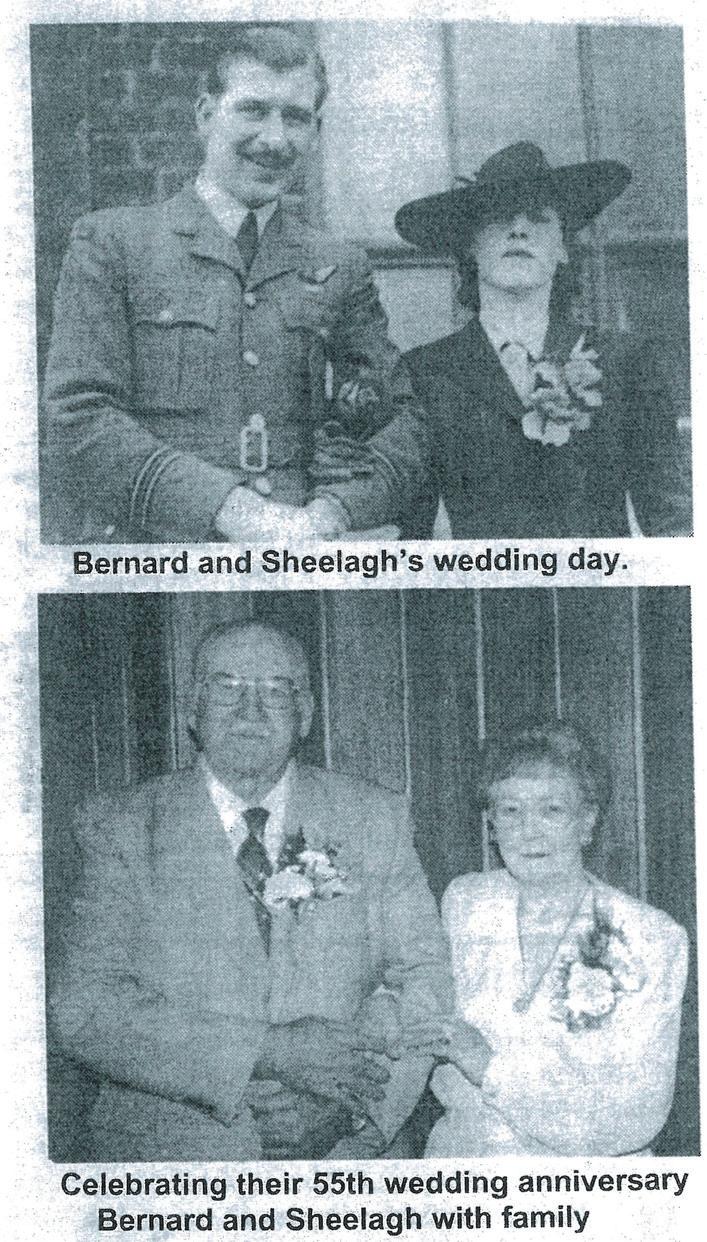
PAGE 4 • MOOSEJAWEXPRESS.COM ✦ REMEMBRANCE DAY ✦ NOVEMBER 2022
for providing this information about his father.
A photo of Flight Lt. Bernard (Bernie) Schauenberg during his time in the Sec ond World War. Photo courtesy Assiniboia Times
Schauenberg and his crew in front of their Lancaster Bomber with No. 49 Squadron. The Assiniboia native is third from left. Photo courtesy Assiniboia Times
W.J. Jones & Son Funeral Home and Crematorium We Thank You For those who bravely serve our country, 474 Hochelaga St W Moose Jaw SK |306-693-4644 or 306-694-5500 C . K . TR A N S P O RTAT I O N LT D. Kelly & Dawn Johnstone P.O. Box 1388 • Moose Jaw, SK • S6H 4R3 Bus: (306) 693-1284 Email: ckdispatch@sasktel.net
Bernard and Sheelagh (nee Halligan) Schauenberg on their wedding day in 1943 and, below, on their 55th wedding anni versary. Photo courtesy Assiniboia Times
Capture of Hill 70 was one of the ‘hardest battles’ Canadians fought in First World War
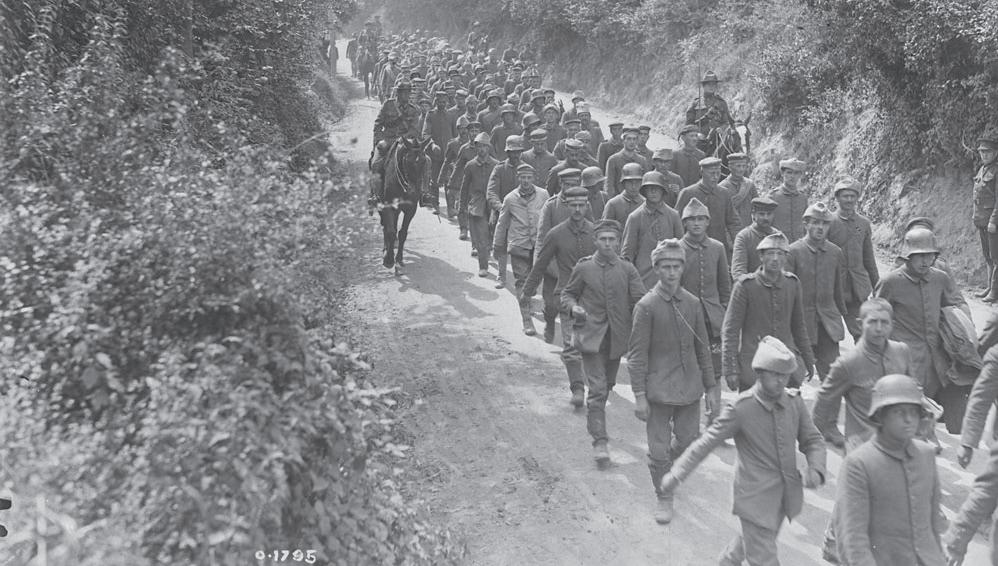
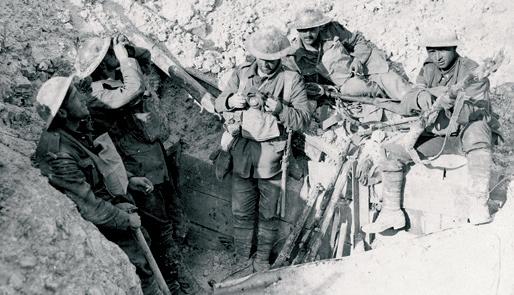 By Jason G. Antonio
By Jason G. Antonio
Canadian troops’ capture of Vimy Ridge required immense planning during the First World War, but grabbing Hill 70 several months later proved to be one of the “hardest battles” they fought. While a great victory 105 years ago this month, 23 men from the Moose Jaw area died during the battle. According to the Saskatchewan Virtual War Memorial, those men included:
• From Moose Jaw: Francis Buckley, Ernest Corbett, Francis Edmond Forth, William Stanley Harpham, Ormonde George Wil liam Hudson, Aubrey LeVern Lennox, Wil liam Andrew Currie McKie, Joseph Anthony Metcalfe, Charles Murray, Robert William Murray, George Henry Reeve, John Ander son Reid, Robert Alexander Scilley, William Taylor, Richard Southwell Urton, and Charles Williams.
• From Gilroy: Andrew Edwin Clancy
• From Mortlach: Henry Fewster
• From Glenside: Albert Harlock and Peter Simpson Moir

• From Crystal Hill: James Wesley Heslop
• From Dahinda: Henry Cecil Kingsley
• From Spring Valley: John Olofson
• From Pinto Creek: Richard Norman Watt
Allied command initially wanted the Cana dians to capture the occupied French city of Lens — north of Vimy Ridge — to draw attention away from another sector. However, newly installed Canadian commander, Lt.-Gen Arthur Currie, thought Hill 70 was tactically more important.
He believed a traditional, frontal assault on Lens would be futile if the Germans could shoot down from the commanding hills. So, Currie convinced his superiors to alter the plan by mak ing Hill 70 the Canadians’ main objective.
Currie believed capturing the point would provoke the Germans to leave their dugouts and attack, allowing the Canadians to kill many ene mies and drive them away.
Currie’s superiors told him the Germans would never let the Canadians keep the position because of its tactical importance, but he had al ready factored that into his plans.
“Vimy had been a ‘bite’ and ‘hold’ operation; at Hill 70, Currie planned for a ‘bite,’ ‘hold,’ and ‘destroy’ campaign,” historian Tim Cook wrote in
Legion Magazine.

“The Canadians would bite off Hill 70 and hold the new terrain, which would force the en emy to leave the safety of his trenches and attack over open ground into the mouth of their massed guns, where he would be destroyed.”
The battle launched with complete surprise at 4:25 a.m. on Aug. 15, 1917, when 10 front-line battalions — roughly 100,000 men — surged out of their trenches.
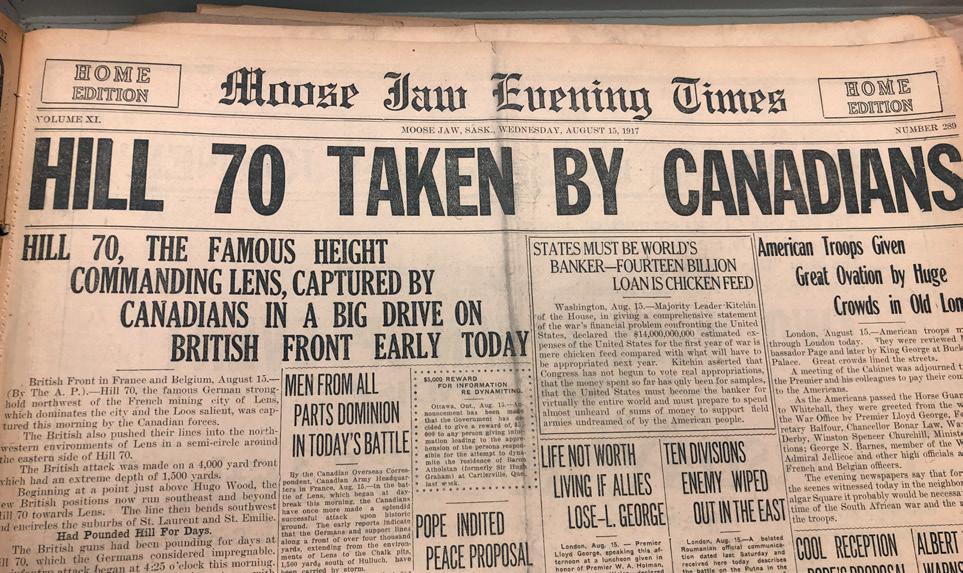
The Canadians captured the heights of Hill 70, but the cost was high. By the end of the first day, 1,056 Canadians were dead, 2,432 were wounded and 39 had been taken prisoner.
agents, leaving defenders and attackers to fight nearly blind as they peered through foggy res pirators. Despite bravery and stubbornness, the Germans were thrown back each time, and by Aug. 18, the Canadians had defeated 21 counter attacks.
“Shocked by the loss of Hill 70, the Germans immediately counterattacked. It was as Currie had predicted,” Cook wrote.

The Germans marched forward over open ground and into a prepared kill zone swept by over 250 machine-gun teams and artillery. The Germans threw their forces against the Canadian strongpoint for the next three days. Assaults were torn apart in the storm of steel and high explo sives, but some hand-to-hand fighting did occur.

Amid the slaughter, both sides used chemical
“Even hardened combat warriors were sick ened by the massacre, as torn and mangled Ger mans lay on the battlefield by the thousands,” Cook said.
The battle finished on Aug. 25. The Canadi ans lost 10,000 men dead, wounded or missing, a similar number as Vimy Ridge.
Allied General Sir Douglas Haig character ized Hill 70 as “one of the finest minor operations of the war.” Currie thought it one of the “hardest battles” ever fought by the Canadians but also “a great and wonderful victory” and “one of the fin est performances of the war.”
The enemy had been bled white, suffering an estimated 25,000 casualties, while the Corps lost over 10,000 killed and wounded when the pre-battle losses from raids and shelling were in cluded.
Attesting to the battle’s ferocity, six Canadians received the Victoria Cross, the Empire’s highest award for bravery.
MOOSEJAWEXPRESS.COM ✦ REMEMBRANCE DAY ✦ NOVEMBER 2022 • PAGE 5
A clipping from the Moose Jaw Times-Herald, August 1917. Photo courtesy Moose Jaw Public Library archives
Canadians in captured trenches on Hill 70. Photo courte sy Library and Archives Canada
A clipping from the Moose Jaw Times-Herald, August 1917. Photo courtesy Moose Jaw Public Library archives
CHURCH & HALVERSON ACCOUNTING LTD. #3 - 15 Lancaster Road, Moose Jaw, SK | 306-691-6633 Accounting & Income Tax Services We Remember LOCATED IN SHOPPERS DRUGMART STRIP MALL 710H Main St. N. | 306.693.4455 Lest We Forget
German prisoners captured by Canadians on Hill 70. Photo courtesy Library and Archives Canada
Royal Canadian Air Force – 407 Demon Squadron, WW 2 – Eighty Years Ago
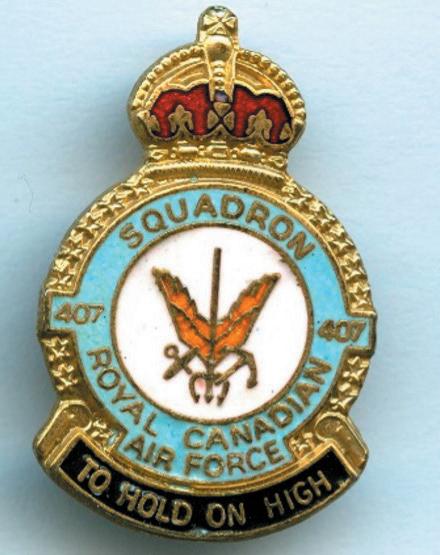


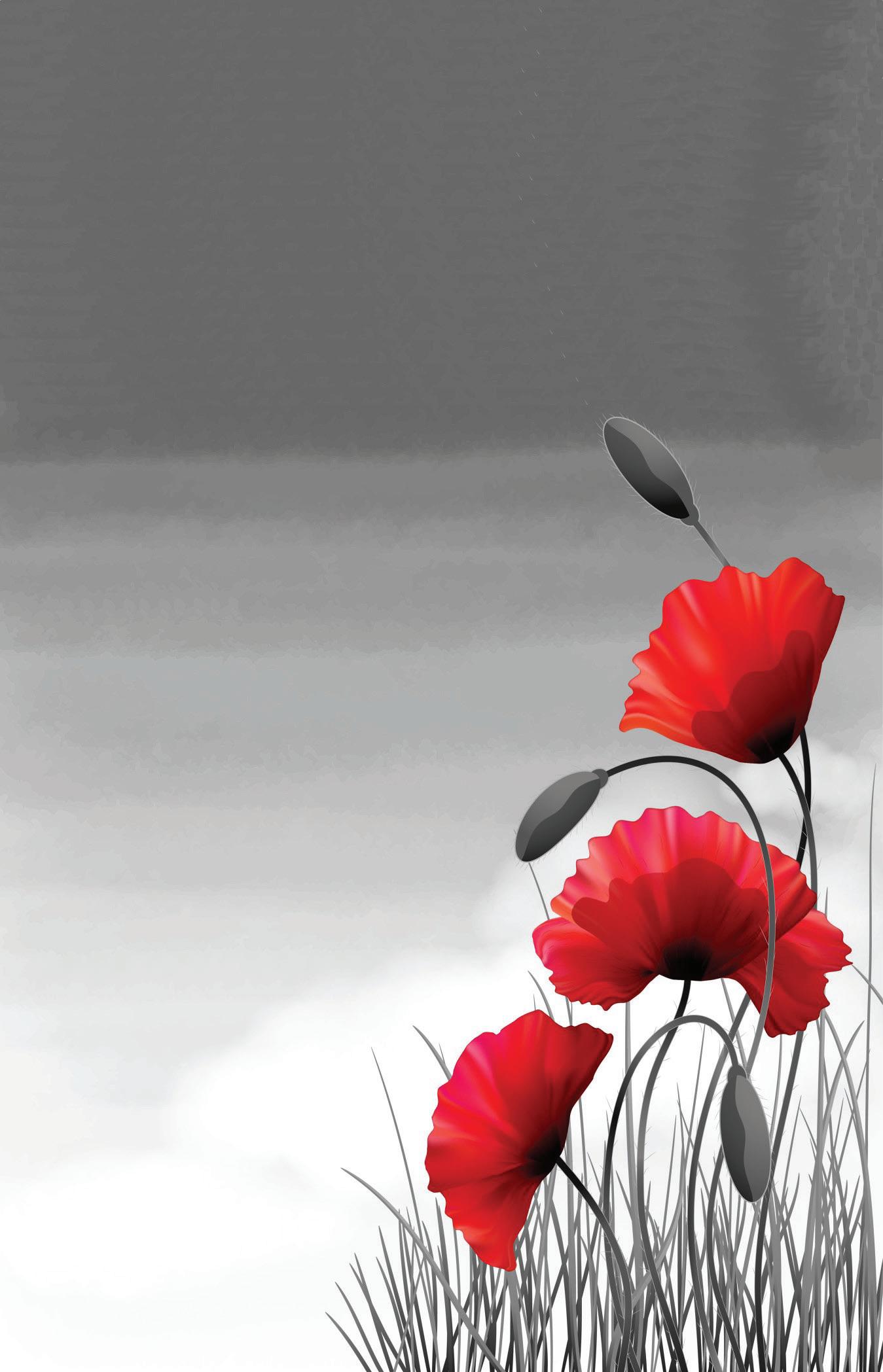 By Richard Dowson
By Richard Dowson
Articles like the following were meant to boost morale. After two years of fighting, with little success, Govern ments needed to create the impres
, and AC2 A. H. Sunley, Fort San; AC2 J. A. Stewart, Daysville and AC2 G. B.
ber and name of the squadron in the original article. In December 1941, four-man crews flew Lockheed Hudson bomber aircraft on Coastal Patrol and carried either bombs or

The men whose name appeared in this article, all survived the War except Pilot Roland Edison Dann (J/4327) from Portage La Prairie,
tage la Prairie was killed in a horrific
PAGE 6 • MOOSEJAWEXPRESS.COM ✦ REMEMBRANCE DAY ✦ NOVEMBER 2022
FOR THOSE WHO LE AVE NEVER TO RETUR N. FOR THOSE WHO RETURN BUT ARE NEVE R THE SAME. we r emember THERE IS NO GREATER SACRIFI CE THAN THAT FOR ANOTHER...THANK YOU.
Three local airmen participated in famous Dambusters Raid 79 years ago during WWII
The skies were quiet over Germany on May 1617, 1943, as 19 Lancaster bombers crewed by Ca nadians, Brits, Aussies and Kiwis participated in a daring nighttime raid codenamed Operation Chastise — or as it was later famously known, The Dambusters Raid.
The goal was to blow up three river dams in Germany’s industrial heartland in the Ruhr Val ley. It was hoped this would disrupt water supplies for industrial production and divert resources from other aspects of the German war effort.
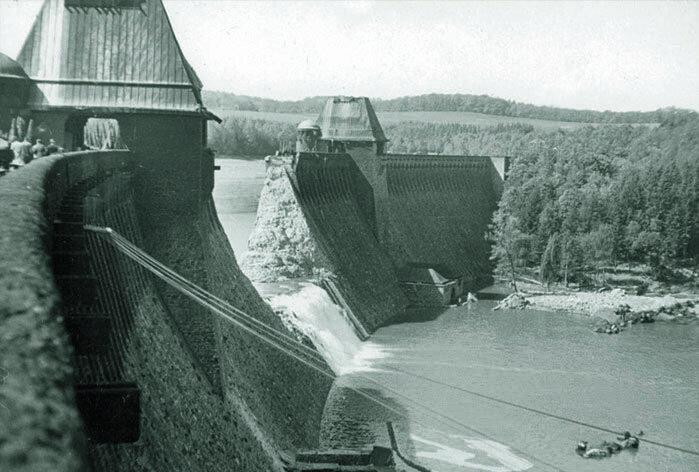

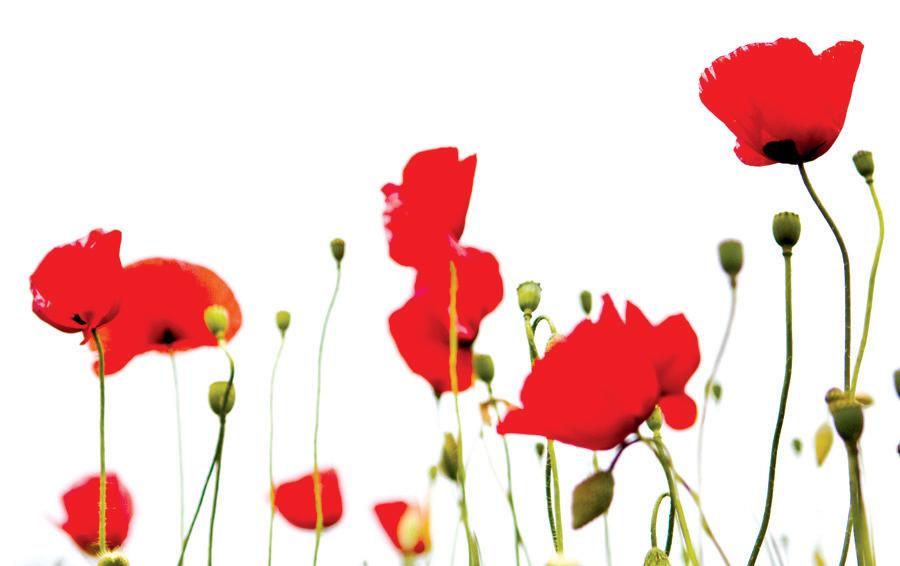

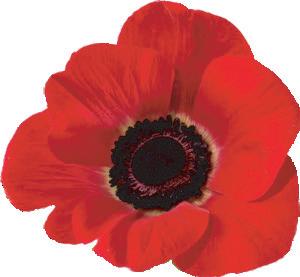
Of the 133 airmen who flew that night, 30 were from the Royal Canadian Air Force, includ ing three men from the Moose Jaw area: Flying Officer Robert Alexander (Turk) Urquhart, Pilot Officer Ken Brown and bomb aimer Sgt. Stefan Oancia from Stonehenge southwest of Assini boia.
The operation was of great difficulty, de manding very low flying and a high degree of skill, courage and close co-operation among the crews.
By Jason G. Antonio
sidual spin would drive the explosive down the dam’s wall and explode at its base.
Led by famous 24-year-old Wing Command er Guy Gibson, the squadron left its base at 9:28 p.m. By 12:28 a.m., the planes had breached the Möhne and Eder dams but failed to destroy the Sorpe.
During the raid, 53 men were killed and three became prisoners of war. On the ground, almost 1,600 people were killed in the flooding. Although the effect on Germany’s industrial pro duction was limited, the raid boosted morale in Britain.

Moose Jaw’s Ken Brown, 22, received the Conspicuous Gallantry Medal (CGM) after the battle, only the second-ever Canadian to receive that award. He survived the raid and died on Dec. 23, 2002.
Alberta’s Fred Sutherland was the last Cana dian veteran from the Dambusters Raid to die; he died at age 95 in 2019.
Deadly stuff,” recalled Brown.
At one point, Brown avoided a nearby plane that had exploded into an orange fireball by div ing and following a heavily treed road.
“Then much to my consternation, that damn road led right into a castle, and I’ll never forget that castle door. We had to dip and the left wing went between two turrets as we went through the castle,” he said.
Objective complete
Brown’s objective was the Sorpe Dam, but the fog made that difficult. However, they dissipated the fog by conducting several runs against the dam and then dropped their payload.
“… we were pleased with it, and as far as the explosion was concerned, the waterspout went up to about a thousand feet, and so did we. I think we ended up about eight hundred.”
Although Brown and his crew faced enemy planes, searchlights and anti-aircraft fire on the way home, they returned safely.
Meanwhile, Stefan Oancia survived the raid and the war and received the Distinguished Fly ing Medal (DFM). However, Robert Urquhart was shot down and killed during the mission.

Mission fail


Urquhart was in the second Lancaster to at tack the Eder Dam. However, during the attack run, the plane dropped its bomb too late. It struck the upper part of the dam and ex ploded, damag ing the aircraft.


A bouncing bomb


The mission was difficult because the dams were solid; the Möhne dam alone was 33 metres thick at the base. Furthermore, they were fierce ly protected, with torpedo nets stopping under water attacks and anti-aircraft guns defending against enemy planes.


The answer for 617 Squadron lay in an inno vative but complicated weapon: the 5,000-pound bouncing bomb. Developed by British engineer Barnes Wallis, the drum-shaped bouncing bomb needed to be dropped from 18 metres (60 feet) and at a ground speed of 374 kilometres per hour (232 miles per hour) — while flying straight for seven seconds.

The bomb would spin backwards across the water’s surface before reaching the dam. Its re
Memories of the raid
“That night, we were perched out on the grass. It was a beautiful night, clear sky, no cloud, waiting for the buses to take us out to the aircraft. John Burpee, a Canadian — Pilot Officer Burpee — came over to me and thrust out his hand and said, ‘Goodbye, Ken,’” Brown recalled on July 13, 1993 during a 50th-anniversary commemoration event.
“I said, ‘Goodbye, John.’ I didn’t expect he’d come back. You see some people feel that way.”
Brown’s feeling proved accurate, as Burpee was shot down and killed over the Netherlands flying toward Germany.
The pilots had to be aware of high-tension wire strung between poles since it was the great est danger. If the moonlight highlighted the wire, the pilots had to fly either under or above it, de pending upon where it was.
“It was that quick. We lost two aircrafts to those wires. They merely slapped into them.
The pilot nursed the Lan caster back to ward England, flying at 50 feet. Unfortunate ly, they clipped electrical trans mission lines, sustained more damage, strayed over defended oil plants at Emmer ich am Rhein, and were shot down. The crash killed all on board.
The crew was buried in the Reichswald Forest War Cemetery, Germany, after the war.
Urquhart, 23, posthumously received the Distinguished Flying Cross.
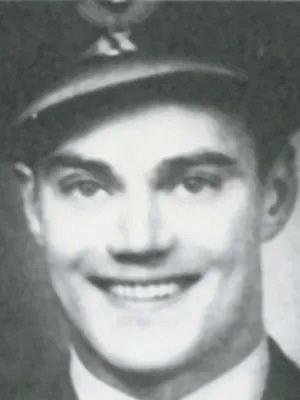
MOOSEJAWEXPRESS.COM ✦ REMEMBRANCE DAY ✦ NOVEMBER 2022 • PAGE 7
From the top of Möhne Dam, with the reservoir still in full spill and roaring down the valley to the Ruhr indus trial region. The two direct mine hits resulted in a breach around 250 feet wide and 292 feet deep. Photo courtesy Vintage Wings Canada
Flying Officer Robert Alexan der Urquhart. The airman died during raid on three German dams. Photo courtesy Bomber Command Museum Canada
ank you to the brave men and women for their sacri ces Lest We Forg AALADIN, GRASSHOPPER, GRUNDFOS, JACOBSEN LEST WE FORGET CL ARK’S SUPPLY & SERVICE LTD. 1650 Stadacona St W Moose Jaw, SK w w w.clarks-supply.com | 306-693-4334
Ken and Beryl Brown, during a 50th anniversary event of The Dambusters Raid in 1993 in Alberta. Photo courtesy Bomber Command Museum Canada
Scottish village honours Moose Jaw soldier who died during the First World War
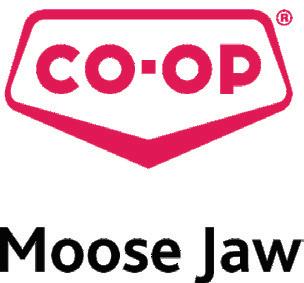

A Scottish community has honoured a Moose Jaw soldier who fought during the First World War and received the Victoria Cross — the high est military medal — posthumously for his efforts during the Battle of Vimy Ridge.

The Village of Cambusnethan, a suburb of the town of Wishaw in the province of North Lanark shire, held a ceremony on June 1 to honour Pte. William Johnstone Milne.

Biographical details
Milne — born in the village on Dec. 21, 1892 — emigrated to Moose Jaw in 1910 and worked on a farm near Mortlach. He later enlisted in Moose Jaw on Sept. 12, 1915, and was assigned to the 46th Battalion before being transferred to the depleted 16th Battalion.
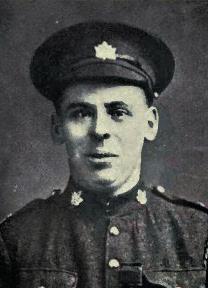
He fought at Vimy Ridge on April 9, 1917, where he single-handed ly knocked out two heavily defended machine-gun posts. However, he was killed later that day and buried in an unmarked common grave.
News of his death was published in the Wishaw Press on June 15, 1917, with the headline, “Our first VC, Posthumous honour, Wishaw-Ca nadian’s Wonderful bravery.” The article noted that a soldier told Milne’s parents that he was a “good soldier” who showed “splendid devotion to duty.”
The Commonwealth War Graves Commis sion could not locate Milne’s body afterward, so his name was commemorated on the Vimy Ridge Memorial in France. He is also honoured on the Cambusnethan Landward War Memorial, the Coltness Memorial Church Plaque, has a street named after him and has a special paving stone next to the village memorial arch.
Milne was the first man from the Wishaw area to receive the Victoria Cross.
By Jason G. Antonio
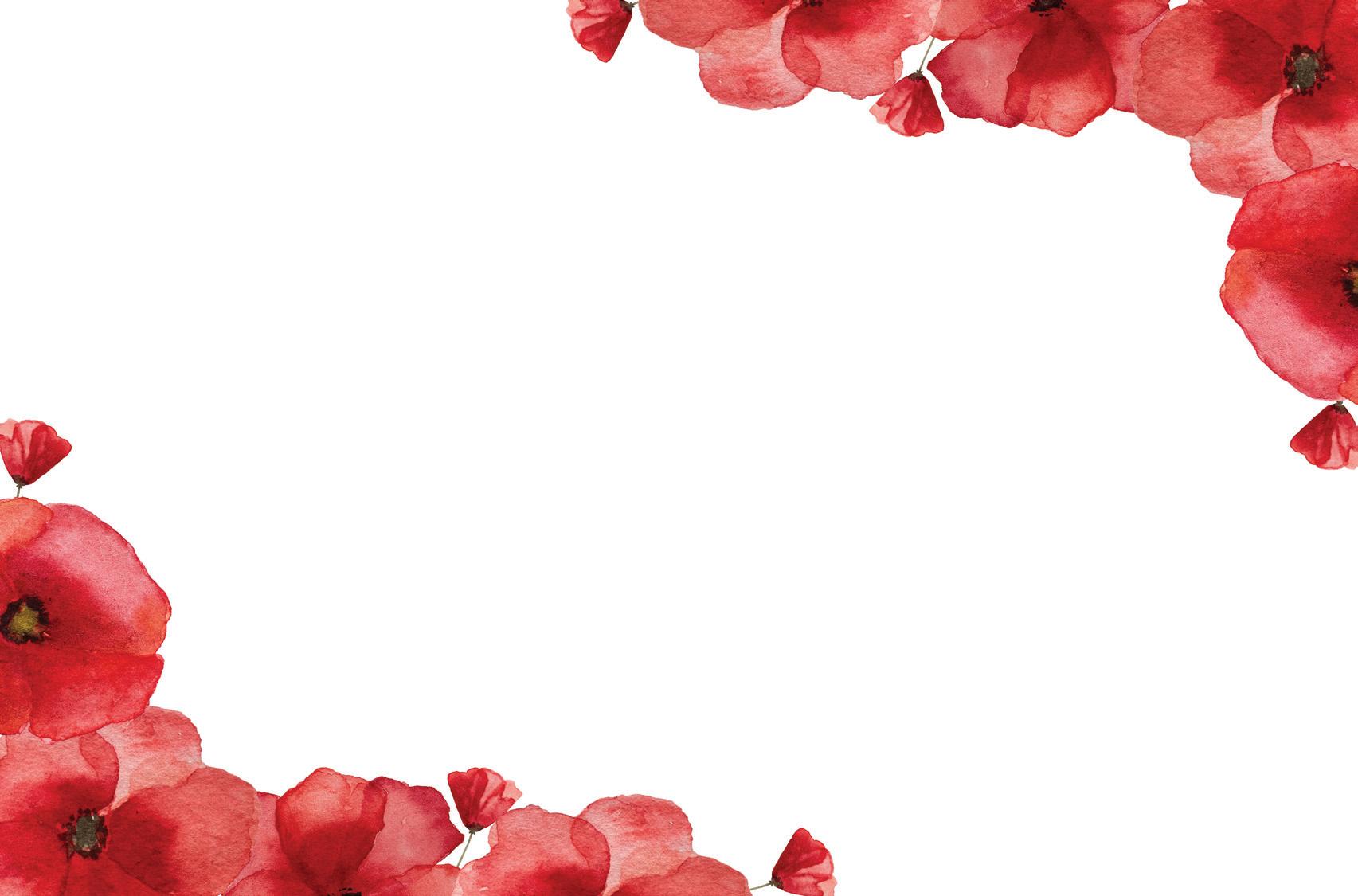

Family connection
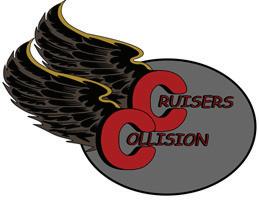
More than a century later, Milne’s cousins, Nancy Watford and Mary Watford Armes, trav elled to Scotland from the United States — their mother was Canadian — where they laid wreaths at the Newmains War Memorial.

and became an apprentice moulder at the Colt ness Iron Works, the historian explained. How ever, he later became a farm labourer at Herdhill Farm, then emigrated to Canada and enlisted in the army.
Past and present recognition
In 2017 the North Lanarkshire Council com missioned stones for all the area VC winners, while there was a presentation at Cambusneth an Old Parish Church that honoured Milne, said Allan.
“I met Derek Milne there, a descendant of Pte. William Milne. I was thinking about that the other night and I managed to get hold of some one who had a phone number for him and he was delighted to come along today with his sister,” the historian added.
“We always went to Canada to see family and this is like connecting with family. It’s such a priv ilege to do this … ,” Armes told Scotland’s Daily Record newspaper. “We were just going to stop by and lay a wreath, but it’s fantastic with the rep resentatives from the Legion and the school (and a representative for Mary Duncan, the honorary consul for Canada to Scotland).
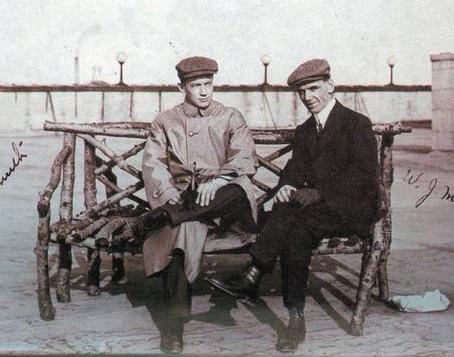
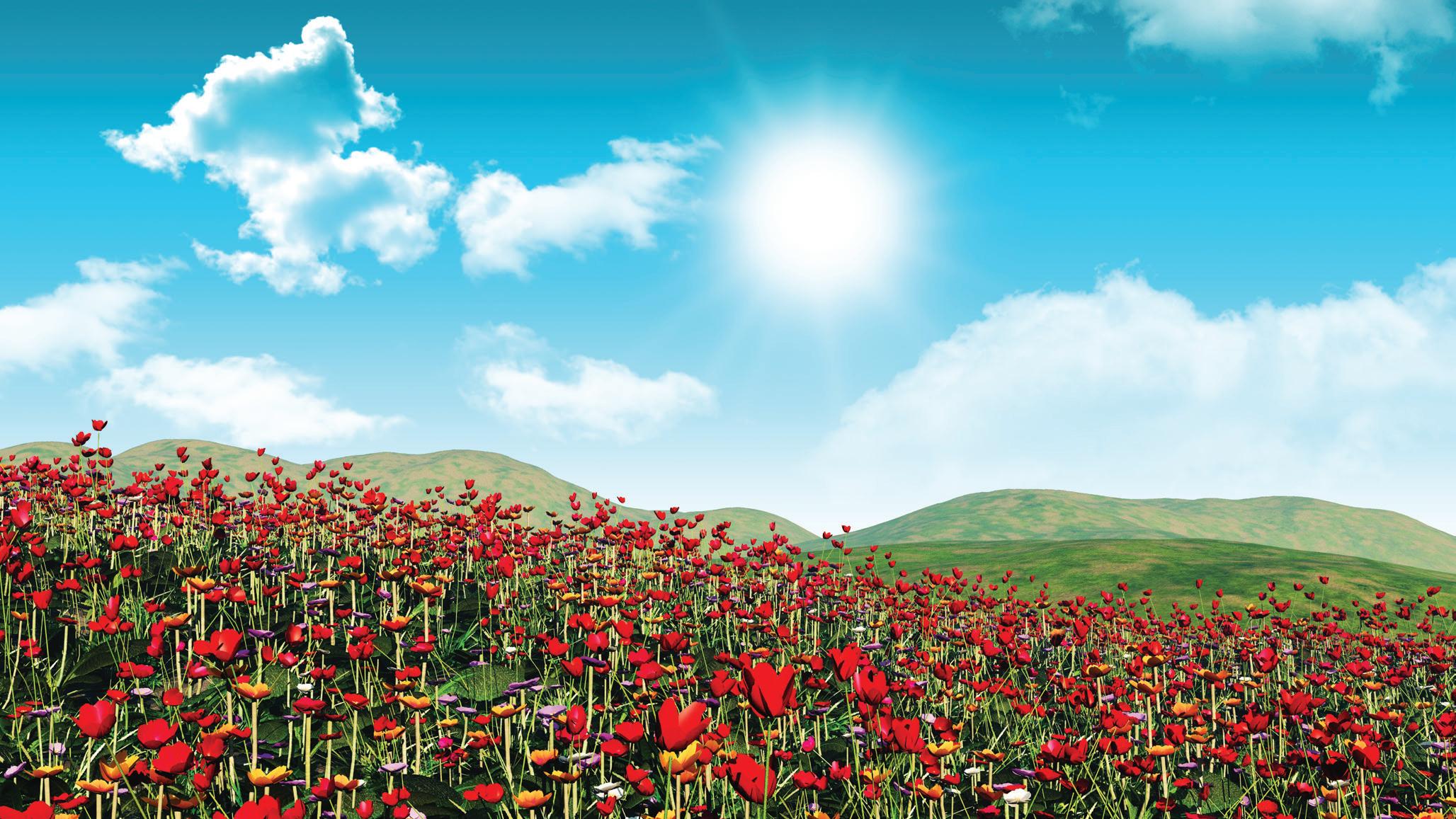
“I think it’s great the attention that’s been giv en.”
The sisters’ interest in Milne first arose af ter seeing an old black and white photo of their mother’s uncle, W.S. Smith, sitting on a bench in Moose Jaw with Milne before he enlisted.
“We really feel it was an important thing to do, to recognize him …,” said Watford. “They were the same age and we thought there must be a big connection between them, so we started to research and found out he and my grandma were cousins, and their grandmothers were sisters from Aberdeenshire.”
Alistair Allan, with the Lanarkshire Histori cal Society, also attended the event. He has writ ten 16 books about the First World War — Milne appears in “A Village that Went to War” — and knows the soldier’s story well.
Milne was born 200 yards from where Allan lives and attended Newmains Primary School
In attendance at the ceremony were members of the British Army, British Legion, and the head teacher of Newmains Primary. Attendees toured the school after the wreaths were laid.
Larry Roeder, Watford’s husband and a for mer U.S. diplomat — he contacted the Moose Jaw Express about the ceremony — told the Daily Re cord that everyone should continue to remember those men who died during war.
“If we expect future generations to serve in battle, we must honour those who defended de mocracy in the past, especially now when that concept is under such serious threat in places like Ukraine,” he added. “ … such events are a neces sary societal service.”
PAGE 8 • MOOSEJAWEXPRESS.COM ✦ REMEMBRANCE DAY ✦ NOVEMBER 2022
Sisters Nancy Watford and Mary Armes pose with a wreath at the Newmains War Memorial, which they placed to honour their cousin, Pte. William Johnstone Milne. Photo courtesy Daily Record
William Milne (right) pictured in Moose Jaw with his uncle, W.S. Smith, prior to signing up for war. Photo courtesy Daily Record
We Will Remember They Liveth Forever
Pte. William Johnstone Milne. Photo courtesy Vimy Founda tion
Soldier avoided bombs and bullets during invasions of Sicily, Italy in WWII
Lance-Cpl. Gilbert John Hyde’s unit faced little enemy opposition after landing on Sicily’s beach es three days after the Allies’ main assault on the Mediterranean island, but the terror of war grew the farther inland they went.
Hyde, then 23, was the driver of a Bren Gun carrier in “A” squadron with the 4th Princess Louis Dragoon Guards (PLDG), a reconnais sance regiment. The Moose Jaw native enlisted on Oct. 18, 1938, at age 18 and spent several years training in England before his unit sailed for the “underbelly of Europe” with the famed British Eighth Army.
Late arrivals
The Guards were supposed to hit the beach on July 10, 1943, as part of Operation Husky and reconnoitre the area with the infantry. However, by the time the squadron arrived — at only half strength — on July 13, the fighting had moved in land while a weak Italian coastal division offered no resistance.



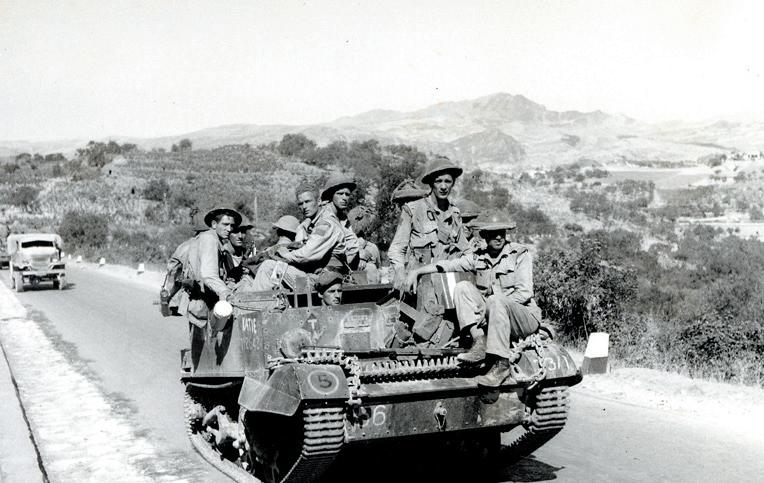



“I think they were just glad to give up. … we off-loaded our vehicles and went about two or three miles inland and my introduction to war was that night,” Hyde recalled.
The unit bivouacked — or camped — behind a hill, and since it was pitch black, they didn’t know where they were.
Night terrors
“And about three o’clock in the morning, holy smokes we heard these guns going off, and this is the first time I’d really, you know, I’d heard artil lery fire before because we’d done reconnaissance work … ,” he said.
A battery of 155-millimetre howitzers began shooting over their heads, but the soldiers real ized it was friendly and was shooting toward the enemy. Hyde thought this was still scary, con sidering it was 3 a.m. and they were in a foreign country.
Reconnaissance begins
Hyde and his squadron packed up the next day and caught up to the advancing infantry, where his unit was instructed to inspect a nearby village. This mission was successful without casu alties, but they wouldn’t all be like that.
A week after arriving, members of Hyde’s unit became casualties after German machine gun
By Jason G. Antonio
and mortar fire hit them.
“… I, myself, was still back with the com mander,” recalled Hyde. “So, although we heard the shells and machine guns and that, we weren’t really under fire ourselves.”

would happen to us,” the Moose Javian said.
Ten minutes later, German Messerschmitt
109s planes flew overhead and waggled their wings before flying off. Hyde believes the aircraft didn’t attack because they likely believed the unit was German.
Little Stalingrad
After several months of fighting, the Cana dians arrived at Ortona, halfway up Italy’s east coast. There they participated in the Battle of Ortona — known as Little Stalingrad for its fero cious fighting — from Dec. 20-28, 1943.
A stalemate made reconnaissance unnec essary. However, Hyde recalled two memorable events that occurred in the area.
Moving to Italy
After six weeks in Sicily, the PLDG crossed the Strait of Messina to mainland Italy.

Another infantry unit had landed before the Guards and cleared the way, which meant Hyde’s unit faced little opposition after landing at Reggio di Calabria on Sept. 3, 1943, on the west coast of Italy.
They then travelled south and up the east coast to Locri, where they ran into thousands of Italian soldiers intent on surrendering.
“… we see these guys coming out full march ing order, swords, bayonets, flags, bands, a whole division coming down the road to us,” said Hyde. “And the general’s in front leading the parade, with all his medals and sashes and God knows what, and we just sort of waved them on, ‘Keep going boys, we can’t, we can’t do anything for ya.’”
Friendly fire
The Guards continued travelling north, with mountains on their left and the Ionian Sea on their right. At 10 a.m., a squadron of Allied Kit tyhawk fighters screamed overhead and “strafed the living jee-zus” out of the unit.
The planes continued to strafe the Canadians for 10 more minutes despite the latter shooting flares to call off the attack. The attack destroyed two Bren Gun carriers, two armoured cars, killed two men and injured five.
“We just dove under our carriers and trucks and just prayed to God that, you know, nothing
One was participating in standing patrols, where soldiers dug foxholes and spent many nerve-wracking hours listening for enemy pa trols.



“When you’re standing out there until four o’clock in the morning just before dawn, it’s cold, (it’s dark), it’s wet, you’re miserable, you got to pee, and every little sound, you, you swear to God it’s an enemy moving,” Hyde said. “You know, it might even (be) just a rabbit or might be any thing … .”









Another artillery scare



The second experience again involved artil lery. The Canadians and Germans exchanged volleys throughout the day, prompting Hyde and his unit to convert a chicken coop into a shelter where they could watch the action safely on a hill.
During one artillery exchange, the unit heard a German shell come screaming in like a “damn freight train.” Hyde saw the shell go over the shed’s roof, “about three feet above my head.” The men rushed outside to find their armoured car upside down on a pile of dirt six feet high.
The shell had gone under the vehicle but failed to explode.
“And I watched it, you know, just sit there,” added Hyde, “and that’s what I remember about Ortona.”
Hyde and the Princess Louis Dragoon Guards ended the war in The Netherlands. He later served in the military until 1974.
MOOSEJAWEXPRESS.COM ✦ REMEMBRANCE DAY ✦ NOVEMBER 2022 • PAGE 9
Lest We Forget D.&D. Quality Care Inc. 306-691-0300 428 Main St N. ddqualitycare@gmail.com 39 Thatcher Dr E, Moose Jaw SK | 306-692-9274 | devoscarwash.com 8 BAY SELF SERVE CAR WASH | U-FILL WATER & ICE | DOG WASH
Canadian troops ride in a Bren Gun carrier in Sicily. Photo courtesy Canadian Military History
June 6, 1944 – D-Day and the Royal Canadian Navy

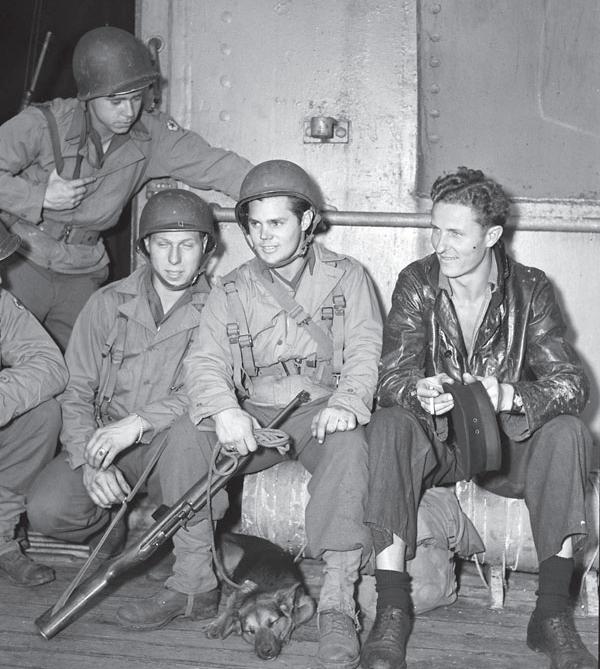
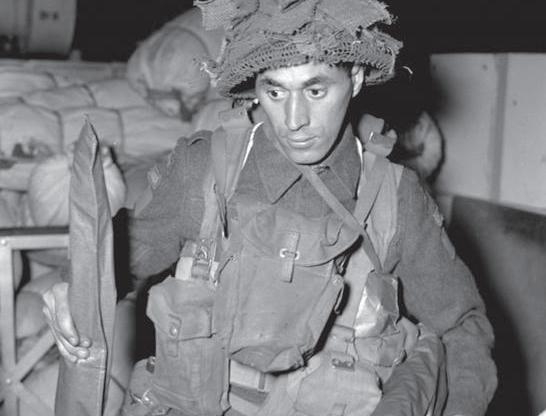

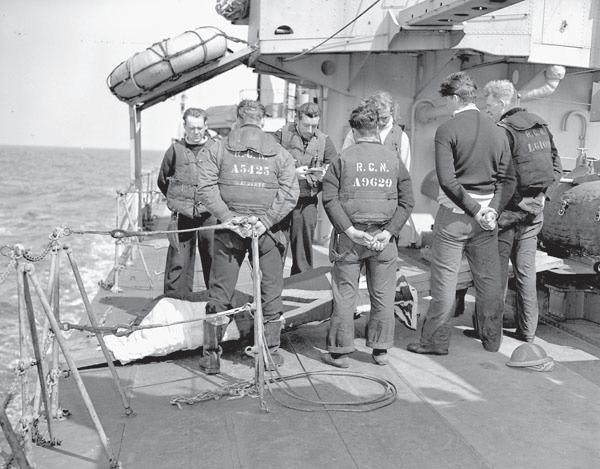
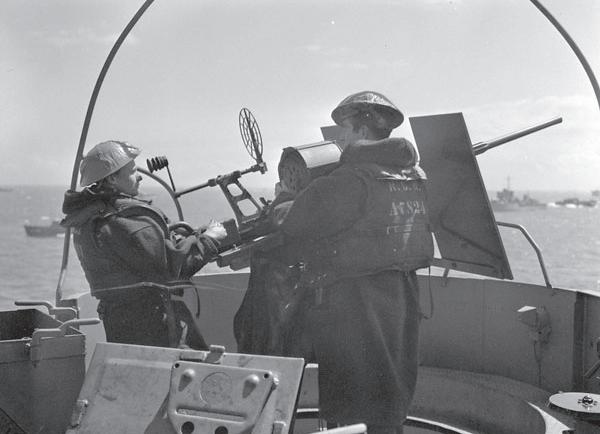

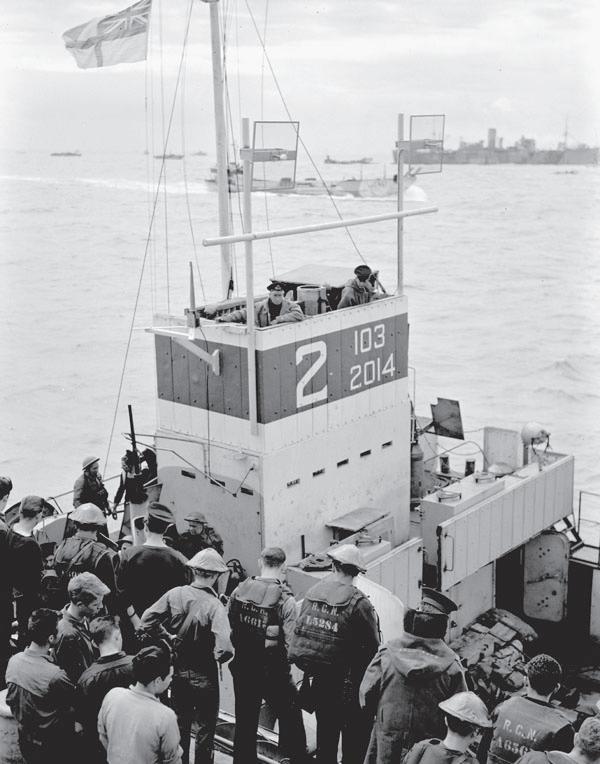

June 6, 1944 was D-Day, and marks invasion of Normandy, France and the push east to destroy NAZI Germany. These photos are from Library and Archives Canada. They are public domain. I often over look the role the Royal Canadian Navy played in World War Two. But you could not get from England to France without some damn good boats.
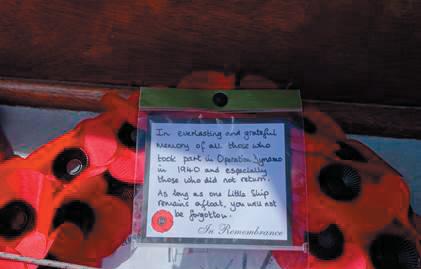

This is little pictorial look at events on June 6, 1944. The Regina Rifles “went in” on D-Day. They lost 66 men killed that day.
Of Note: The first Moose Jaw man killed in action in World War Two was WOODWARD, Rodney T, Able Seaman, 2938 (RCN), serving with the Royal Navy at the time of his death on July 19, 1940.
Rodney was serving aboard HMS Watchful. He’d participated in the evacuation from Dunkirk and was remembered by the Association of Dunkirk Little Ships. I received this letter from the Commodore:
Richard, I wanted to send you a picture of the wreaths we laid recently at our Commemorative Cruise. I hope you regard the words as a fitting tribute to Rodney Woodward.
The wreaths are now dedicated and retained within the Sailors’ Church, Ramsgate where the Association Hon Chaplin, Rev Gordon Warren, presides. By copy of this email I am requesting that Gordon remembers Rodney in prayers said at the Sailors’ Church.
As long as the Little Ships sail on, Rodney and his ilk will not be forgotten.
Best regards, Ian Gilbert, Commodore, Association of Dunkirk Little Ships
By Richard Dowson
PAGE 10 • MOOSEJAWEXPRESS.COM ✦ REMEMBRANCE DAY ✦ NOVEMBER 2022
Wreath in Memory of those who participated in the evac uation of Dunkirk.
A Landing Craft Tank (LCT) bringing casualties out to H.M.C.S. PRINCE DAVID from the Normandy beach head, France, 6 June 1944 MIKAN Number: 3202203
Able Seaman Freddy Derkach (right) with personnel of the 65th Chemical Company, U.S. Army, aboard H.M.C.S. PRINCE DAVID off Omaha Beach, France, 5 July 1944. (Dog is a mascot) MIKAN Number: 3525871
An unidentified infantryman of Le Régiment de la Chau dière preparing to disembark from H.M.C.S. PRINCE DA VID off the Normandy beachhead, France, 6 June 1944. MIKAN Number: 3202207
Infantrymen of the 1st Battalion, The Canadian Scottish Regiment, embarking in a Landing Craft Assault (LCA) alongside H.M.C.S. PRINCE HENRY off the Norman dy beachhead, France, 6 June 1944. MIKAN Number: 3396558
Infantrymen of The Highland Light Infantry of Canada aboard LCI(L) 306 of the 2nd Canadian (262nd RN) Flo tilla en route to France on D-Day, 6 June 1944. MIKAN Number: 3191666
A wounded Canadian soldier being given adrenalin on the deck of a Landing Craft Tank (LCT) alongside H.M.C.S. PRINCE DAVID off the Normandy beachhead, France, 6 June 1944. MIKAN Number: 3202204
Burial at sea of a seaman from H.M.C.S. ALGONQUIN who was killed during the invasion of France, 8 June 1944. MIKAN Number: 3256402
Able Seamen E. Westwood and W. McIver manning No.9 Oerlikon anti-aircraft gun aboard H.M.C.S. PRINCE HENRY off the Normandy beachhead, France, 6 June 1944. MIKAN Number: 3205256
A second section of infantrymen preparing to go ashore from H.M.C.S. PRINCE DAVID off Bernières-sur-Mer, France, 6 June 1944. Date: June 6, 1944. MIKAN Number: 3396559
Afghan vet recalls hot days of guarding workers, hunting insurgents, laughing with friends
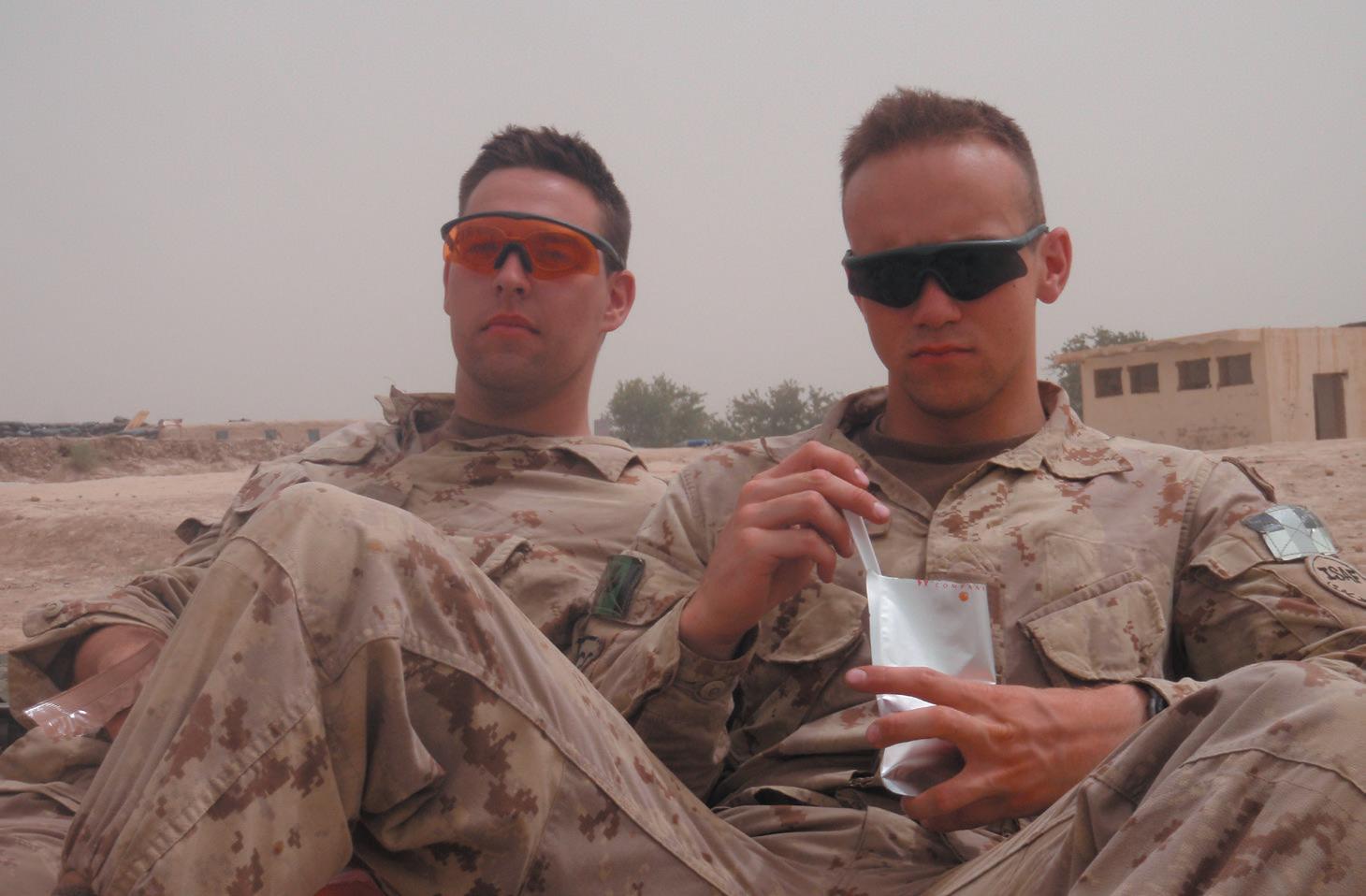
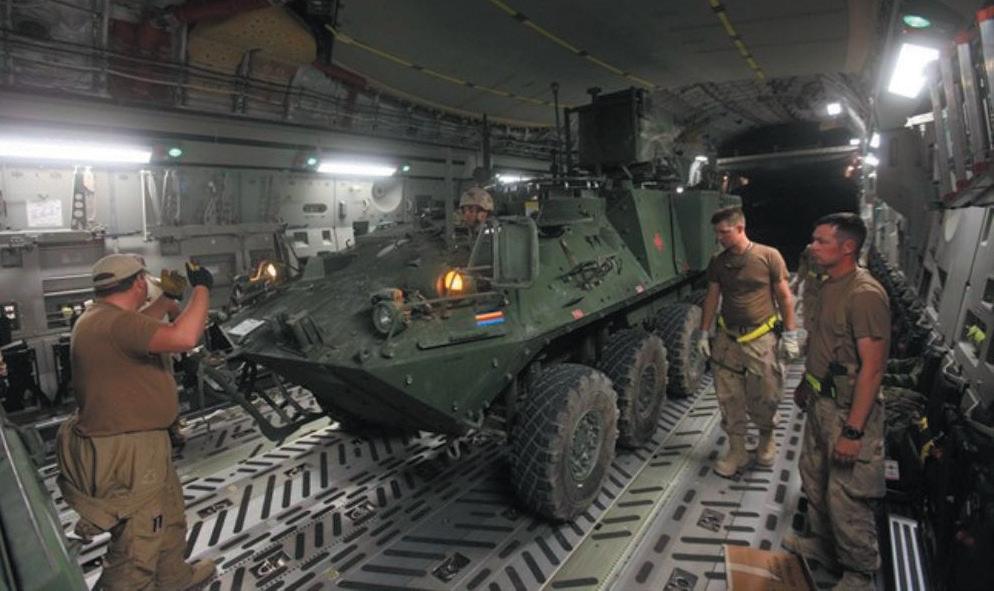
Canadians were in the thick of the fighting in Afghanistan in 2010 when Cpl. Justin Eddison and his New Brunswick-based unit were sent over to protect construction contractors.
He and members of the 2 Royal Canadian Regiment (RCR) arrived in the southeast Asian country in April 2010 — and left in December — after training with the Kandahar Provincial Reconstruction Team (KPRT). This infantry company pro vided security for governmental and non-governmental organizations at tempting to upgrade infrastructure in the city and outlying areas.
The idea was that if the Western allies could rebuild schools, roads, water infrastructure and electrical utilities, this would change the lo cals’ opinions of Western culture — capture their “hearts and minds” — and potentially reduce insurgen cy activity while leaving the country better off.
Eddison and his unit were only in the country for 1.5 months when the Canadian military sent them to a village called Nakhonay and attached them to the main battle group.
“From that point on, we were actively looking for the enemy, searching for weapons (and) IEDs (improvised explosive devices) and doing any operations that would hinder their capabilities, as well as securing basically the Panjwaii Val ley,” the Corner Brook, NFLD-born soldier recalled.
“(It was) pretty scary at first. When we found out we were go ing to the battle group, it was after a summer where we lost about 10plus Canadian soldiers.”
The Taliban insurgents had changed tactics from attacking the Western allies directly to using IEDs since they caused the most casual ties.
Eddison recalls that Nakhonay was experiencing a high volume of IED attacks then. Moreover, the night before his unit moved into the
By Jason G. Antonio
village, they heard machine guns in the area.
“It’s pretty scary at the time, but we were all pretty motivated and ex cited to contribute towards the mis sion,” he added.
Eddison and his unit spent two and a half months in the village be fore they were shipped to Masum Ghar, a dangerous frontier outpost constantly hit by insurgent mortar fire that became Canada’s largest forward operating base.
From cadets to infantry
Eddison was 17 when he joined the army in 2007. He had participat ed in cadets since he was a child — his older brother had done the same — so joining the military after grad uation was a natural progression.
He started in the reserves with the Royal Newfoundland Regiment, but a year later, he had the opportu nity to train and deploy to Afghani stan. Within 18 months, he was fasttracked for deployment with 2 RCR based out of Gagetown, N.B.
“I was super excited and super honoured to be able to do that … ,” he said.
“Obviously scary at the same time, given the situation, but that’s exactly what we were trained for and that was our job, and we were all motivated to do it.”
An explosive situation
Eddison was the point man whenever his unit was on patrol. He would be responsible for talking — through an interpreter — with the locals, searching people for weap ons, and helping hunt down IEDs.
One time while patrolling through the Panjwaii Valley, three Canadian infantry sections and one engineer unit responded to a buried IED. Eddison took up position be hind a wall watching for the enemy while the engineers defused the ex plosive.
After returning to camp, the Ca nadians sent up a giant balloon with cameras to watch the area where
they had been. They soon saw three insurgents go to where Eddison had been, dig up a 155-millimetre artil lery round, and place it at a different spot.
An air strike by the U.S. elimi nated the enemy targets.
“That’s the biggest part that would stand out for me, is the sheer luck that I hopped onto an IED and it didn’t go off,” said Eddison. “So yeah, it was a lucky day.”
Death of a friend
A main memory that sticks with Eddison from Nakhonay is the death of his friend, Cpl. Brian Pink sen. Both had joined the reserves at the same time in Corner Brook.
“He was a year younger than me. … I joined not knowing anyone (and) he joined not knowing any one. Both of us latched onto each other, went through our training to gether, and both volunteered to go to Afghanistan together,” Eddison said. “And both deployed together.”
Pinksen was injured in an IED attack on Aug. 22, 2010, and was transported to Kandahar before be ing taken to Dubai and then a hos pital in Germany, where he died on Aug. 30.
Eddison remembers hundreds of people lining Highway 401 in Ontario — the Highway of Heroes — as Pinksen’s body was taken from Trenton Air Base to Toronto before being flown to Halifax and home to Deer Lake, NFLD.
After attending his buddy’s fu neral, Eddison returned to Afghan istan.
Daily living
Eddison and 2 RCR were initial ly housed at Camp Nathan Smith in Kandahar, where there were three men to a room, air conditioning, a kitchen, and showers.
After moving to Nakhonay, Ed dison spent 47 days without show ering during a summer when the temperature reached 70 C. There was no running water, showers, air conditioning, or a fresh kitchen. In stead, they relied on bottled water and hard rations, a sharp contrast to
Kandahar.
After moving to Masum Ghar, 10 soldiers lived in bunks in a sea can, had a small shower, and, luck ily, hot meals.
“So it was a variety of experi ences and environments … . But yeah, very hot, very dry,” he said. “Unfortunately for the people of Af ghanistan, their septic systems are non-existent, so you go through the back alleys and you have raw sew age.”
Shave and a haircut
One day an Afghan barber was cutting Eddison’s hair at Camp Nathan Smith when an explosion rocked the base’s entrance. An in surgent had driven his IED-filled car into local workers to dissuade them from working with the Canadians.
Two were injured, while 26 vehi cles were destroyed.
Eddison — with his head half shaved — and a friend checked out the situation before returning to the barber. The man asked about the situation, and they told him the ex plosion had destroyed the vehicles — including the barber’s.
“We seen him the rest of the day wandering around with his licence plate in his hand that was burned. And then following that, he had a big tip jar in his shop that (said), ‘For a new car,’” Eddison chuckled. “So we all ended up tipping him money … .”
Remember us
Eddison now works as an air traffic controller at 15 Wing Air Base.
With Remembrance Day com ing, he says it’s important for veter ans — especially Afghan vets — to see the community’s support for them. With the Taliban’s takeover of Afghanistan in August 2021, many feel their efforts are forgotten.
“When the public goes out to these events (and) wear a poppy … it can help someone out greatly in terms of their own mental health,” he added. “I think it reflects well to us that the public is still in support of veterans and the military.”

MOOSEJAWEXPRESS.COM ✦ REMEMBRANCE DAY ✦ NOVEMBER 2022 • PAGE 11
A Canadian armoured vehicle is loaded into a C-17 military transport aircraft at Kan dahar airbase in Afghanistan, Saturday, July 16, 2011, as Canadian combat operations come to a close. Photo by Canadian Press
Cpl. Justin Eddison (left) and his buddy, Cpl. Brian Pinksen, take a break somewhere in Afghanistan in 2010. An improvised explosive device killed Pinksen during a patrol in August; Eddison finished his tour in December and returned home. Both men joined the reserves simultaneously and became good friends. Photo courtesy Justin Eddison
The Short, Adventurous Life of Regina Pilot Bobby Leavitt
Flight Lieutenant Robert Frederick Leavitt, # 42238, D.F.C., R.A.F. was born in Saskatoon on June 17, 1916 to Sherman E. and Clara B. Leavitt. Not long after, his parents moved to 2344 Broad Street, Regina, probably for the climate.
He died somewhere in the North Atlantic on September 21, 1941 while ferrying Lockheed Hudson AE545 to Prestwick, Scotland. He was 26-years of age.
 By Richard Dowson
By Richard Dowson
‘trades’. Sir Hugh Montague Trenchard, consid ered the father of the R.A.F., began programs to strengthen the RAF. The ‘higher-ups’ in the RAF and men like Winston Churchill, expected an other war with Germany. In their opinion ‘Ap peasement’ would not work. Herr Hitler would continue to take over Europe and the RAF and ‘Trenchard’s Brats’ intended to be ready for war.

Bob applied to the RAF in the fall of 1938. With a university degree and a private pilot’s li cence he was a shoe-in. He was accepted and paid his own way to England in the spring of 1939 to begin RAF training. On June 10, 1939 Bob was made an Acting Pilot Officer and continued his flying training.
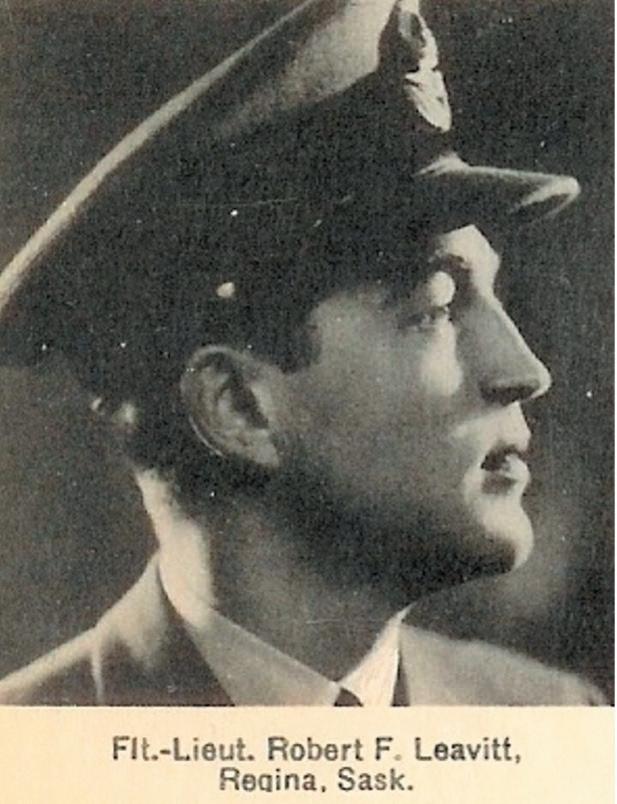
Rubbing Shoulders with Royalty
In early May 1940 French and British troops slowly retreated wester ward, seeking refuge at the Channel ports. On May 15, 1940 Churchill flew to Paris to view the situation and meet with French leaders. At about the same time Bob was assigned as Second Pilot on the Duke of Kent’s Hudson aircraft for one week. They became ac quainted on trips to France.
Meeting Prince George, Duke of Kent led to them meeting again in Regina.
The Fall of France
When the German Army Group ‘A’ burst through the Ardennes and into France they had little trouble over-running French and British troops and pushed them west to the coast.
Bob attended Central Collegiate, Regina and graduated in June 1934. The world was in the depths of the Great Depression. Grain prices and livestock prices had collapsed. There was little employment. Saskatchewan was in financial cri sis. People left the Prairies and so did Bob.
His Dad’s brother and aunt lived in Montreal. They invited him to stay with them and ride out the Depression by attending McGill University, where he studied Chemistry.
He loved aircraft and flying. Some details are fuzzy, but it seems he got his private pilot’s licence in Montreal and applied for the RCAF. The Air Force was ‘under-funded’ because of the Great Depression and years of austerity programs. They were not taking new recruits.
It was public knowledge that the Royal Air Force was always looking for recruits for all
The French wanted more air support. British Air Chief Marshal Hugh Dowling saw it as a los ing proposition. Except for the Hurricane fighters stationed in France, the British aircraft were no match for the Luftwaffe. Except for the Hurri canes, British air operational loses were as high as 75%. The Hurricane was the only aircraft of giving the Bf109 a run for its money.
Dowling had a vision of the inevitable. France would be over-run and the British would be alone on their Island. The only hope for survival as a Nation was a strong RAF Fighter Force. He would not commit any more Hurricane Squad rons to France and began pulling them back.

Fighter Command and their success in the Battle of Britain prevented a German invasion.

The fall of France was a catastrophe. The Army was evacuated at Dunkirk. The RAF Ad
Clipping from Charlottetown’s (PEI) The Guardian –‘Returning to (France) with other squadron members in Tiger Moths, which were destroyed and flew back … Spitfires and Fairey Battles.” From CVWM
vanced Air Striking Force (AASF), used to sup port the Army British, were west and south of Paris, France. They needed to be withdrawn.


Between mid-May and June 20, 1940, the RAF lost almost 1000 aircraft. About 350 Hurri canes were destroyed on the ground. RAF per sonnel retreated to Nantes south of Paris.
Bob Leavitt played a role in flying fighters out of France. A Charlottetown PEI newspaper

PAGE 12 • MOOSEJAWEXPRESS.COM ✦ REMEMBRANCE DAY ✦ NOVEMBER 2022
CVWM Photo
reported he and others flew older Tiger Moth training aircraft to RAF bases in France, torched them and flew Battles, Hurricanes or Blenheims back to Britain in June 1940. (CVWM)
Operation Aerial June 15 to 25, 1940 saw the evacuation of RAF Personnel from French ports south of Le Havre - St. Nazaire and Natnes.
Part Two
Photo Reconnaissance Unit, Heston

Reference: The RCAF Association Awards Section – Distinguished Flying Cross Citation
After flying the Duke of Kent and before help ing with the evacuation of aircraft from France, Bob was Posted to the Photo Development Unit at Heston on June 5, 1940 where he flew Blen heim and Hudson photo reconnaissance aircraft, presumably over France.
Blenheim Photo Reconnaissance Career

He first appeared in the records of the Photo Development Unit, Heston on 5 June 1940 (fly ing a Blenheim) and subsequently records many sorties to France and Norway on Blenheims and Hudsons.


Photo Reconnaissance Unit – Spitfire

The RCAF Records show Bob flying a Re connaissance Spitfire to Haugesund, Norway on January 26, 1941 followed by several similar flights. The British needed to know what the Ger mans were up to in Norway. F/L Spencer L. Ring, 36335, D.F.C., RAF, from Regina, also spent time with the same Unit.
Aircraft – D Type Spitfire
Bob probably flew a ‘D’ Type Photo-Recon naissance Spitfire like this one. The armament was removed and extra fuel storage was built into the leading edge, giving the wing a “D” shape. The fuel tanks were fitted with pressure release valves in case heat built up the pressure.
This particular Spitfire was given to the RACF on April 4, 1943 where it was assigned to No. 13 Photographic Squadron. It was eventually assigned to the RCN in 1947 and no one knows what became of it after that. (Photo probably tak
at Uplands, Ottawa)
Awarded the Distinguished Flying Cross From Official Records
“Flying Officer R.F. Leavitt was detailed to take the only ‘D’ type Spitfire to Wick with a view to carrying out a photographic reconnaissance as far north in Norway as possible.
“On the 26th April 1941 he took off from Wick (Northern Scotland) to carry out a recon naissance of Namsos and Trondheim. He suc ceeded in photographing Namsos and part of Folden Fiord, but returned over Stenkjaer and Vernes. When over the latter place anti-aircraft fire opened up and his aircraft was immediately put out of control.” (Vernes is on the Norwegian coast west of Trondheim, Norway and east of Faroe Island and Northeast of the Shetlands.)
The anti-aircraft explosion knocked Bob un conscious, fracturing his skull. He lost control of the Spitfire which dropped to 5,000. He regained consciousness and took control of the aircraft.
The jolt of the explosion had knocked the illuminous paint off the aircraft’s dials making reading them almost impossible. He was flying ‘blind’.
The explosion also damaged the engine. It would cut-out then re-start about every 30 sec onds. He was able to gain altitude. Bob turned west and “… carried out a visual reconnaissance of Trondheim.” He thought of continuing on to neutral Sweden but with height he decided he could make Shetland Island, which are due west of Bergin, Norway.
He made his way south along the Norwegian coast to Stadlandet and then swung west for Shet land, all the time the engine cutting in and out.
“He succeeded in improving the running of his engine by using very low boost and engine revolutions, and decided to save the films and aircraft by returning home.” Official Records
Flying above the clouds he missed Shetland but saw Foula Island, 20 miles west of Shetland. Realizing where he was he turned south and made it back to RAF Station, Wick.
Official Record Reads: “Subsequent investi gation showed that the engine had a valve and a number of ignition leads broken, while numer ous starting plugs were unserviceable. This was apparently caused when the aircraft was out of control and the engine over-revved. The aircraft had its flaps damaged by the anti-aircraft fire. Its instruments were shown to be out of action.”
One assumes, once on the ground, Bob was checked himself for ‘horseshoes’.
Flying Officer Leavitt of No.1 Photographic
Reconnaissance Unit received word on May 16, 1941 that he had been awarded the Distinguished Flying Cross.
His injuries meant he was sent back to Cana da to recuperate with his family in Regina.
On August 14, 1941 his old acquaintance, the Duke of Kent visited the Commonwealth Air Training facilities in Regina. Flying Officer Leavitt suited up and met with the Duke at the Regina airport.
Duke of Kent, on tour in Canada Summer 1941
Final Flight
Bob and his two crewmen picked up Lock heed Hudson III AE545 in Montreal and were to fly it to Prestwick, Scotland. Their first stop was an overnight in Gander, Newfoundland.
Bob and the crew took off from Gander on September 21, 1941 and were never heard from again. It is assumed they lost their way, ran out of fuel and crashed into the North Atlantic without a trace.
The crew of Ferry Command Lockheed Hud son III AE545 were: Pilot, Flight Lieutenant Rob ert F. Leavitt, Regina; Observer/Navigator Ser geant Elwood Wallace McFall, R/54117 (RCAF) of Ottawa and civilian Radio Operator, Mr. Robert Desmond Anderson from Benjamin Riv er, New Brunswick – all missing and presumed killed en-route from Gander, Canada to RAF Prestwick, Scotland.
Observer/Navigator Sergeant Elwood Wal lace McFall had played Outside Wing for the Ot tawa Rough Riders.
MOOSEJAWEXPRESS.COM ✦ REMEMBRANCE DAY ✦ NOVEMBER 2022 • PAGE 13 Lest We Forget
Fax:
MLA for Lumsden-Morse 306-692-5885 • www.mckarrsfurniture.com 88-2nd Avenue North West Moose Jaw, SK S6H 7W8
Phone: 306-693-3229
306-693-3251
en
The
Bill Waud and Moose Jaw Friends – World War Two

World War Two stories usually focus on military personnel involved in direct action. But people had to maintaining and drive the vehicles; cook the food; moving materials, nurse the injured, and kept the airplanes in the air. These men and women are often overlooked.

Moose Jaw Shop Teacher, now deceased, Bill Waud and friends, kept the airplanes flying.
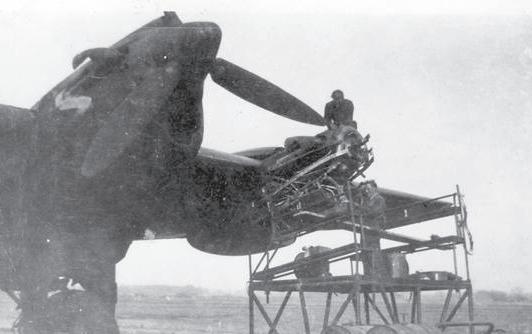
Many former students will remember Bill Waud. After the War he worked at Elliot Motors, then taught Autobody at SIAT and later at Pea cock High School. Bill was always a ‘car-guy’. Af ter retirement he haunted local body shops, vis iting and drinking coffee. He also rebuilt vehicles in his garage.
Background George William ‘Bill’ Waud, an only child, was born in Outlook, Saskatchewan and grew up during the Great Depression of the ‘Thirties’. Times were tough. His dad was Section Foreman for the C.P.R., his mom, a homemaker.

The Dominion-Provincial Youth Training Pro gram (DPYT)

In 1937 the Dominion-Provincial Youth Training Program (DPYT) was created. The pur pose was to provide apprenticeship training for men and boys age 16 to 30. In was also intend ed to keep the men off relief and out of trouble. Schools were scattered across the country.
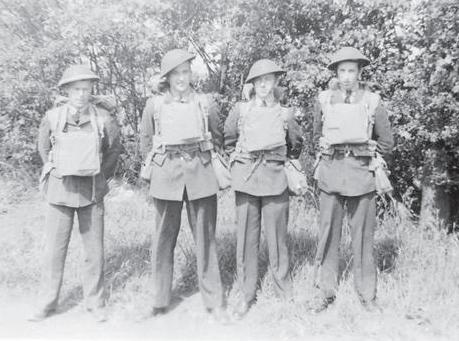

Some schools were established in Saskatch ewan communities including Moose Jaw, Saska toon, Lebret and Indian Head. Each school fo cused on several different subjects.
Students were given a small weekly income and expected to find their own accommodation. Many attending DPYT School in Moose Jaw rented rooms on High Street.
World War Two began in September 1939. In April 1940 the DPYT programs were changed and focused on training needs required in the war effort.
In Moose Jaw the Dominion-Provincial Youth Training School evolved into an Aeronau tical School. It was housed in the Douglas Block, a two story building where the Rexall Drug Store is now located. The school taught Aero-engine me chanics, Airframe and Radio Technology. School Superintendent A.E. Peacock was in charge of overall administration of the school.
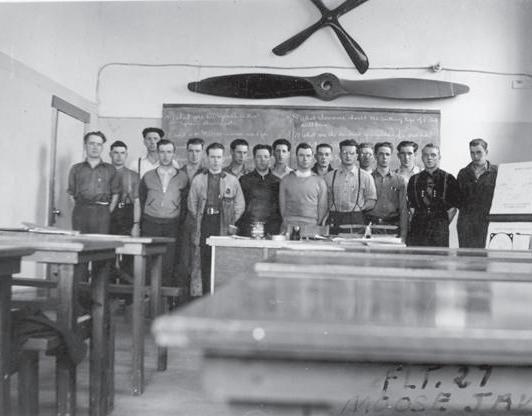 By Richard Dowson
By Richard Dowson
The Radio program was on the second floor. The teacher was disabled and unable to climb stairs. A hand operated ‘lift’ was installed for him so he could get up to the second floor.
In June 1940 Bill applied for the Aero-engine Mechanics program and was accepted. He began classes in September 1940. Upon graduation in June 1941 he and some buddies drove to Regina and enlisted in the RCAF.
and pulled the targets, the drogue, for target practice by future air-gunners. Bill maintained the Fairey Battle aircraft assigned to the Flight.
Posted to No. 5 Bombing and Gunnery School, Dafoe, Saskatchewan.

After basic training in Edmonton Bill was promoted to the rank of Leading Aircrafts Man (LAC) and posted to Number 5 Bombing and Gunnery School at Dafoe, Saskatchewan, a mere 150 kilometers from his Outlook home. Bill was assigned to the Drogue Flight.
The Drogue Flight was the division that flew
Posted Overseas
In May 1943 Bill and several of his friends were posted overseas to 1656 Heavy Conversion Unit at Topcliffe, Yorkshire, England. An HCU trained heavy bomber aircrew. The aircraft used for training at 1656 HCU were old, worn out Halifax Bombers. Bill and his buddies upgrad ed and maintained Halifax Bombers for the re mainder of the war.
Early versions of the Halifax Bomber had Rolls-Royce Merlin Engines. (One is on display at the WD Museum in Moose Jaw). Although good, the Merlin was under-powered. Bill and the lads were charged with replacing the four Halifax Merlin engines with new Bristol Hercu les radial engines. These new engines gave the aging fleet of Halifax Bombers a new lease on life and the ability to carry a heavier bomb load.
PAGE 14 • MOOSEJAWEXPRESS.COM ✦ REMEMBRANCE DAY ✦ NOVEMBER 2022 295 8TH AVE. N.W. MOOSE JAW ACOTTPLUMBINGANDHEATING.COM 306-690-67 18 We Will Remember Them... Thank You for Your Service We will always Remember You 38 High St. West Moose Jaw | 306-692-7888 | Hours: Monday - Saturday 9am - 5:30pm
Moose Jaw Dominion-Provincial Youth Training School, May 1941. Bill is in the front row in the smock, third from the left.
Bill in the cockpit of a Fairey Battle Drogue Tug doing a ‘run-up’. Spring, 1943
Bill Waud on the top of a Halifax Bomber removing a Merlin engine.
Basic Training, Edmonton 1941, Lt to Rt, Bill Waud, Andy Anderson, Joe Lange and L. Watson.
As the Bomber Command Museum in Nan ton writes, “The Hercules was first produced by the Bristol Engine Company in 1939. It is a 14 cylinder, two-row, supercharged, air-cooled, radial engine with a displacement of 38.7 litres. The Hercules I developed 1,375 hp.”
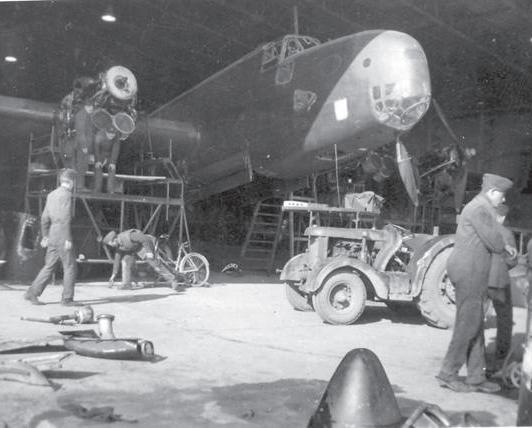
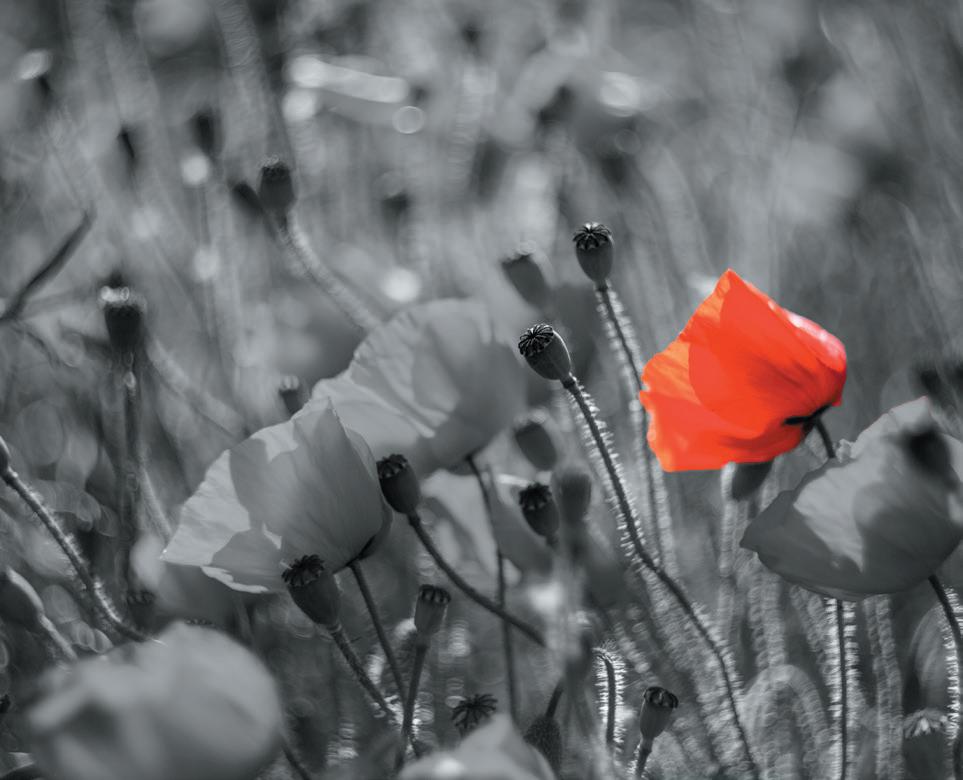
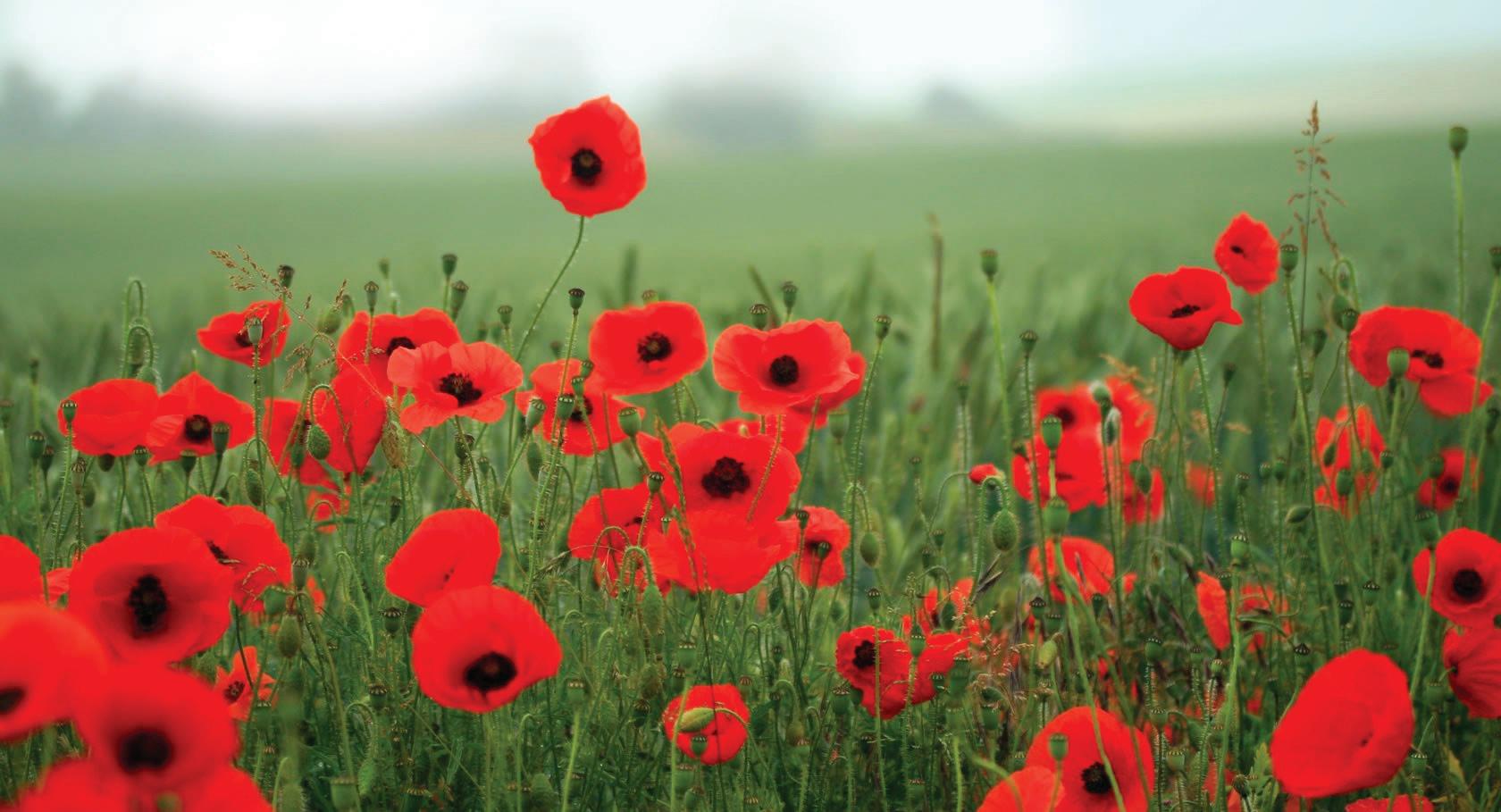





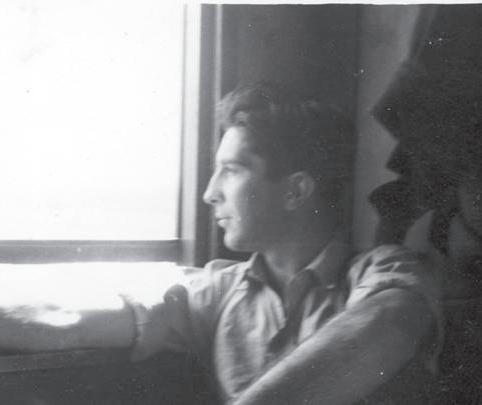



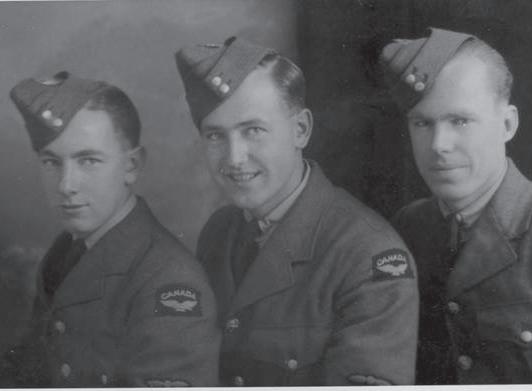
Ben Smart was from Parkbeg. He tried a few business ventures and eventually settled in Po noka Alberta where he ran a barber shop.
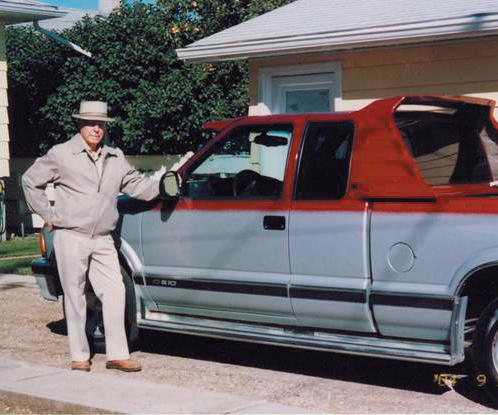
Chip Deyotte of Moose Jaw worked for the CPR.
Joe Lang moved to Saskatoon and worked for the city.
Andy Anderson ran a garage and farmed at Craik.
Bill Waud stayed in Moose Jaw where he was a Body-man and Shop Teacher at Peacock. All photos courtesy of the Bill Waud Collec tion.
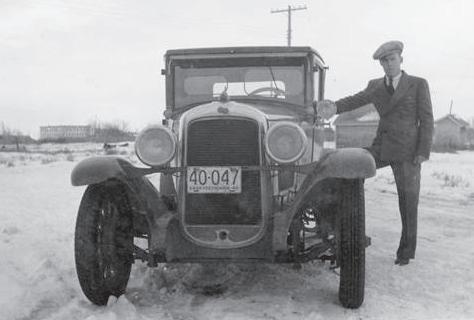
MOOSEJAWEXPRESS.COM ✦ REMEMBRANCE DAY ✦ NOVEMBER 2022 • PAGE 15
Posted Back to Canada
The War ended in May 1945 and in June 1945 Bill and his friend boarded the S.S. Louis
Pasture for the trip home. In Regina they were demobilized and, after four years, had to find a new way of life.
After the War – What Next?
Inside the Hanger at Topcliffe – Halifax Bomber in back ground.
Left to Right, Joe Lang, Andy Anderson and Bill Waud –on leave in London
Ben Smart (Parkbeg) of Chip Deyotte (Moose Jaw), in battle dress aboard the Louis Pasteur. The whistle was standard; in case you fell into the water. You blew it so rescuers could find you.
Ben Smart and Bill Waud aboard S.S. Louis Pasteur
Bill Waud – Car Guy – 2004 at Moose Jaw
Chip Deyotte, on the train home
Ben Smart and Bill Waud aboard the train to Regina
S
Bill Waud – Car Guy – 1939 at Outlook
We Thank a o
vice Men and Women f the Sa ifice
COMPANY
EXHIBITION E
SaskatchewanMOOSE JAW
LTD
Lance Bombardier DEXTER, STANLEY REGINALD
Information gathered by Raymond Bertram Richards
Editor’s Note:
Below is a submitted article from Ray Richards, regarding Lance Bombardier Dexter who lived in Moose Jaw. Richard says, “I was born in Moose Jaw on Oct. 9, 1929. My paternal grandparents lived at 1067 Fourth Ave. N. E. but I don’t remember the address of my maternal grandparents. I did not live in Moose Jaw but in a small hamlet, Bateman, where my parents had a country store. I remember quite a lot of the 1930s and 1940s. I have read some of the articles about various veterans that have appeared in Moose Jaw Today and thought that you might be interested in Stan’s history. He was sent overseas in 1939 and was killed by a mine on the south coast of England, October 1940.”
Stan was a younger brother of my Mother, Clara Dexter, thus was my Uncle.
Date of birth: 6th December 1911 En gland, Essex County, Barking
Father: William Daniel Dexter; Mother: Harriett Dexter Sisters: Violet May 30, Clara 34. Family moved to Moose Jaw, Saskatchewan, Canada.
September 1928, Stan joined the King’s Own Rifles of Canada, a militia unit then the 77th Field Battery, R.C.A. served until April 1, 1935 when he left for Toronto. In 1935, Saskatchewan was in the midst of a drought and an econom ic depression that started in 1929 and ended in 1939 and there was massive unemployment.
When war was declared, he went to Moose Jaw and enlisted in the 77th Field Battery 6th October 1939, attested and appointed Lance Bombardier
7th October 1939, detailed to attend C S T C Kingston, Ontario.
7th December 1939, rejoined unit en route overseas at Smith Falls, Ontario 20 December 1939, Aldershot, England -Taken On Strength 3rd Cdn Field Reg’t E Bat tery RCA
28 October 1940, 1310 hours Died Accident stepped on a mine, Shoreham Beach, Shore ham-by-Sea while laying a communication line. (Details in a Court of Inquiry below. A local
Constable John Henry Sopp was called to inves tigate).
Residence on Enlistment: 37 Beverly Street, Toronto (4 blocks west of University Ave. and one block north of Queen St.).
Wife Sylvia Carol Dexter, married Aug 6, 1938, no info on her maiden name See photo.
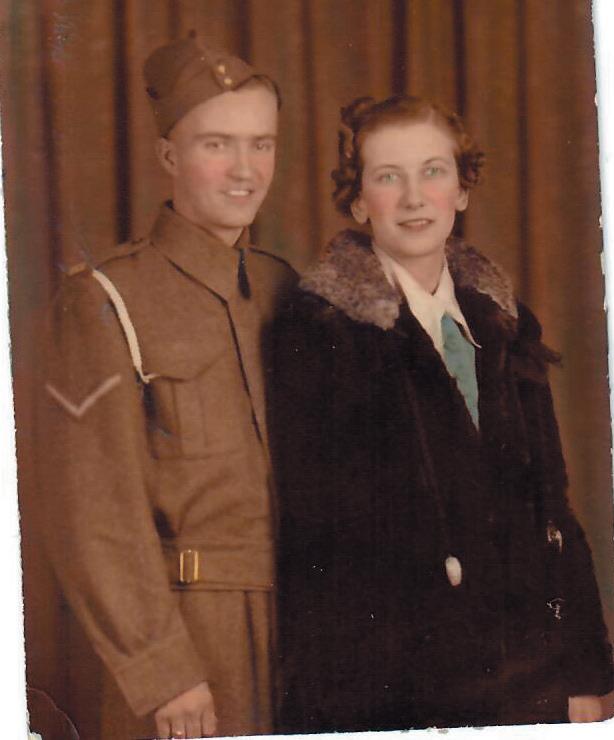
Residence date of death: 153 Beverly Street, Toronto. There is then 64 Triller Ave., Toronto and the Court of Inquiry report sent to Sylvia at 161 College St. Toronto and to his parents at 152 Hochelaga W., Moose Jaw and to my Moth er, his sister Clara, at Bateman, Sask. Notifica tion of medals sent to 975 Cadillac St. Windsor, Ont then changed on 22 March 1951 to 3251 Columbus Ave., Detroit 6, Michigan, U.S.A.
Death Report also shows: Uncle Mr. Bent ley lives at The Anchor, Liverpool Rd., Canning Town, London E16 England.
Buried at Brookwood Cemetery, Surrey, En gland Plot No.111A, Row P, Grave 2 , 29 October 1940.

War Service Gratuity $207.36: Calculated as 386 days service /30 = 12 completed months at $7.50 = $90.00; Overseas service 322 days -26 ineligible = 206 days at $0.25 = $74.00; Supplement pay, allowance and depen dent allowance $3.52 per day x 7 days =$24.64 x322/183 = $43.36 = Total $207.36 sent to his wife, Sylvia, at 64 Triller Ave.
Court of inquiry
By Order of Lt. Col. R.A.Wyman, Cmdg. 3 Canadian Field Regiment. CASF.,To Inquire into and report on the death of L156 L/Bdr. Dexter, S.R., of the 19/77 Field Battery, 3 Cdn. Fd.Regt, through contact with a land mine at 1310 hours 25 Oct.40.
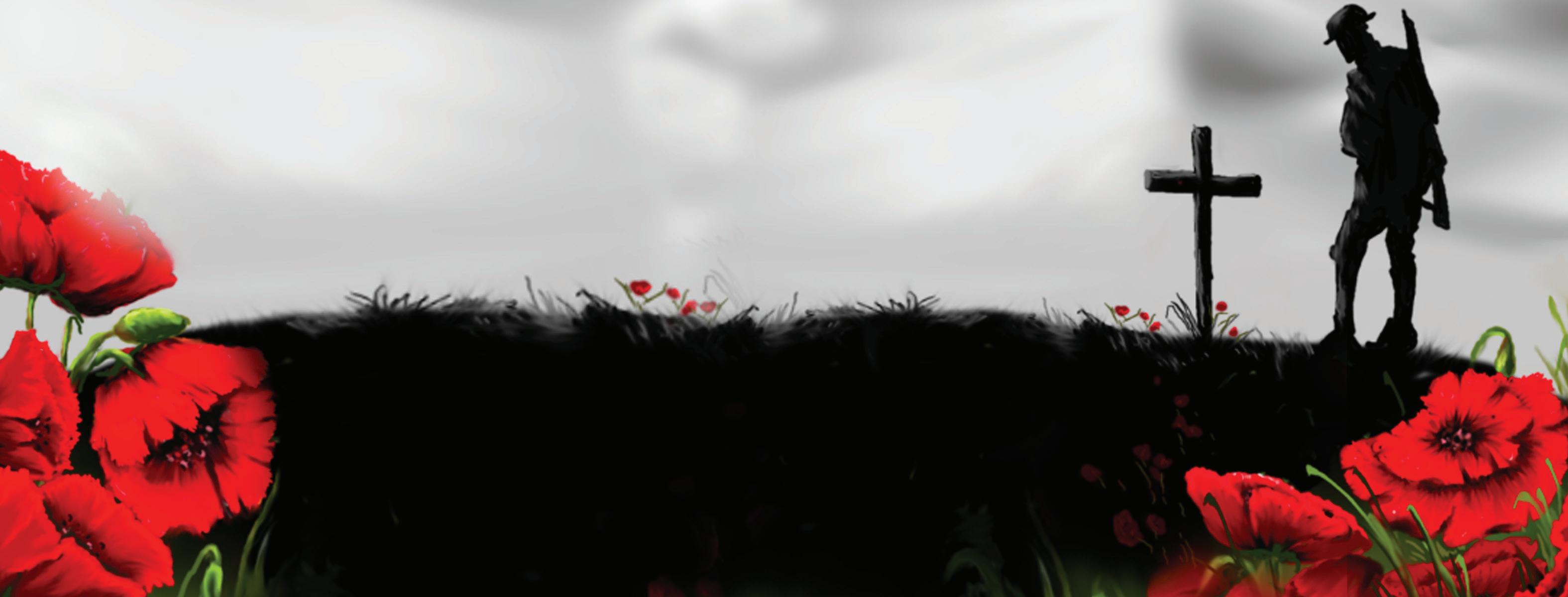
Remember Remember...
PAGE 16 • MOOSEJAWEXPRESS.COM ✦ REMEMBRANCE DAY ✦ NOVEMBER 2022 w w w.millteksur veys.com Moose Jaw, SK • 306-693-5835 PROFESSIONAL LAND SURVEYORS
Awards: Defence Medal; War Medal; Ca nadian Voluntary Service Medal & Clasp
At 1350 hours on 25 Oct 1940 Gnr. Wilford phoned me from “POST” O.P.( Observation Post ) and stated that L/Bdr. Dexter, while lay ing a DV telephone cable from POST O.P. to the billet occupied by the O.P. party had been blown up and killed by a land mine. Gnr. Wilford stat ed that he was about 10 feet from L/Bdr. Dexter when the accident occurred.
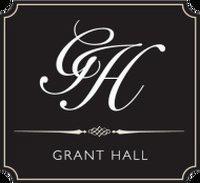






Major L.M.Jones, O.C. interviewed L/Sgt. Ingleby T.R. signals NCO, who had given L/ Bdr. Dexter permission to lay the cable, and told Dexter to reconnoitre a route. Major Jones vis ited the scene. There were many warning signs along the beach and also along the beach road. Those might be misleading to a person who wouldn’t know exactly where the mine fields were, because in some instances billets are on the seaward side of notices which read “Beware of Mines”. The billet occupied by the O.P. party is the house called “Selmer” and is wired in with barbed wire. The billeting house is about 500 yards from the O.P. The L/Sgt. Testified he had no previous instructions regarding the mined area and had visited the POST O.P. twice. He did not have the feeling that the whole area was dangerous and gathered that the paths that led to the sea were mined. Why was Dexter laying a wire? Some of the personnel were at the billet and some were at the O.P. all the time and they wanted communication between the specialists and signallers from the billets to the O.P. because it was too far to run every time they wanted to get in touch between the two.


R5117 Gnr. Wilford R. Signals Section testi
fied: At approx. 1255 hours L/Bdr Dexter stated he was going to lay the line from our billets on the beach to the Post O.P. about a half mile fur
machine gun post, then I caught up to him again and walked along side of him. As we came to a concrete terrace he walked on the gravel and I on the terrace. At the far end of the terrace was an obstruction, so I walked towards the tank blocks. At that moment the explosion occurred and two more followed as I crawled behind the concrete block. He had no idea of the actual lo cation of the mines As far as we were concerned they were straight under the wire that followed the waterfront and this mine was about 30 feet behind it and they walked behind the wire. Was the area safe? “Well, judging from the signs all over the place, the coiled wire going through the yards – Imperial soldiers were walking all over the place, between the wire. One was standing near where it happened and didn’t say anything when we passed him. After the explosion one Imperial soldier said “I was just talking to him. I didn’t think that would happen.” So in my opin ion we were following a safe route. Also inside the barbed wire section in which the mine was, was a canoe which, as far as I could see, had re cently been used. As a member of the O.P.Party, he had never received any instruc tions as to the exact location of the mines except that the site was mined.


ther up the beach. He started off with the reel in his hand. Five minutes later I followed and caught up to him, and I buried wire in front of a
The opinion of this Court is that L156 L/Bdr. Dexter S.R. was killed by a land mine exploding; that no negligence was shown on the part of L/ Bdr. Dexter, and the fact that the exact location of the mines in this area are not known by the personnel in this area contributed largely to the death of L/Bdr. Dexter.
MOOSEJAWEXPRESS.COM ✦ REMEMBRANCE DAY ✦ NOVEMBER 2022 • PAGE 17 Thank you to the Past and Present Veterans for your seRvice and sacrifice. REAL ESTATE • INSURANCE • APARTMENT RENTALS 324 Main St N | 306-694-4747 | moosejawrealestate.net McCauley Agencies 453 Main Street North 306-694-4848 www.mccauleyagencies.ca Home • Tenant • Agro • Commercial • Auto • Travel Insurance Lest We Forget Event Funding Available at www.visitmoosejaw.ca Ph: 306.631.0059 E: visitmoosejaw@gmail.com 24 Fairford St E Moose Jaw, SK S6H 0C7 (306) 694-5055 250 Thatcher Dr E Moose Jaw, SK S6J 1L7 (306) 692-2723 323 Diefenbaker Drive Moose Jaw, SK S6J 0C1 (306) 972-7829 401 Main St N Moose Jaw, SK S6H 0W5 (306) 691-2113 155 Thatcher Dr W Moose Jaw, SK S6J 1M1 (306) 692-2100 110 1st Ave NW Moose Jaw, SK S6H 0Y8 (306) 624-2040 Lest We Forget Event Funding Available
At the far end of the terrace was an obstruction, so I walked towards the tank blocks. At that moment the explosion occurred and two more followed as I crawled behind the concrete block.
Three-year military tour of Germany left indelible impression on air force mechanic
Ken Harder spent three years in West Germany maintaining Canada’s fighter planes during the Cold War, but that was enough time to make friends, learn the language and discover the cul ture.
By Jason G. Antonio
Harder’s sister, Ethel, was living in Germany because she had married a flight instructor. He regularly visited the couple and often enjoyed a home-cooked meal, a nice change from military grub.
The veteran also enjoyed other home-cooked meals whenever he visited his German friends. Harder recalled touring Western Europe once with a German friend who was also a cab driver. The friend was taking a vacation with his fami ly — including the mother-in-law — and invited the Canadian for the ride. The group visited other parts of Germany, the Netherlands and France.
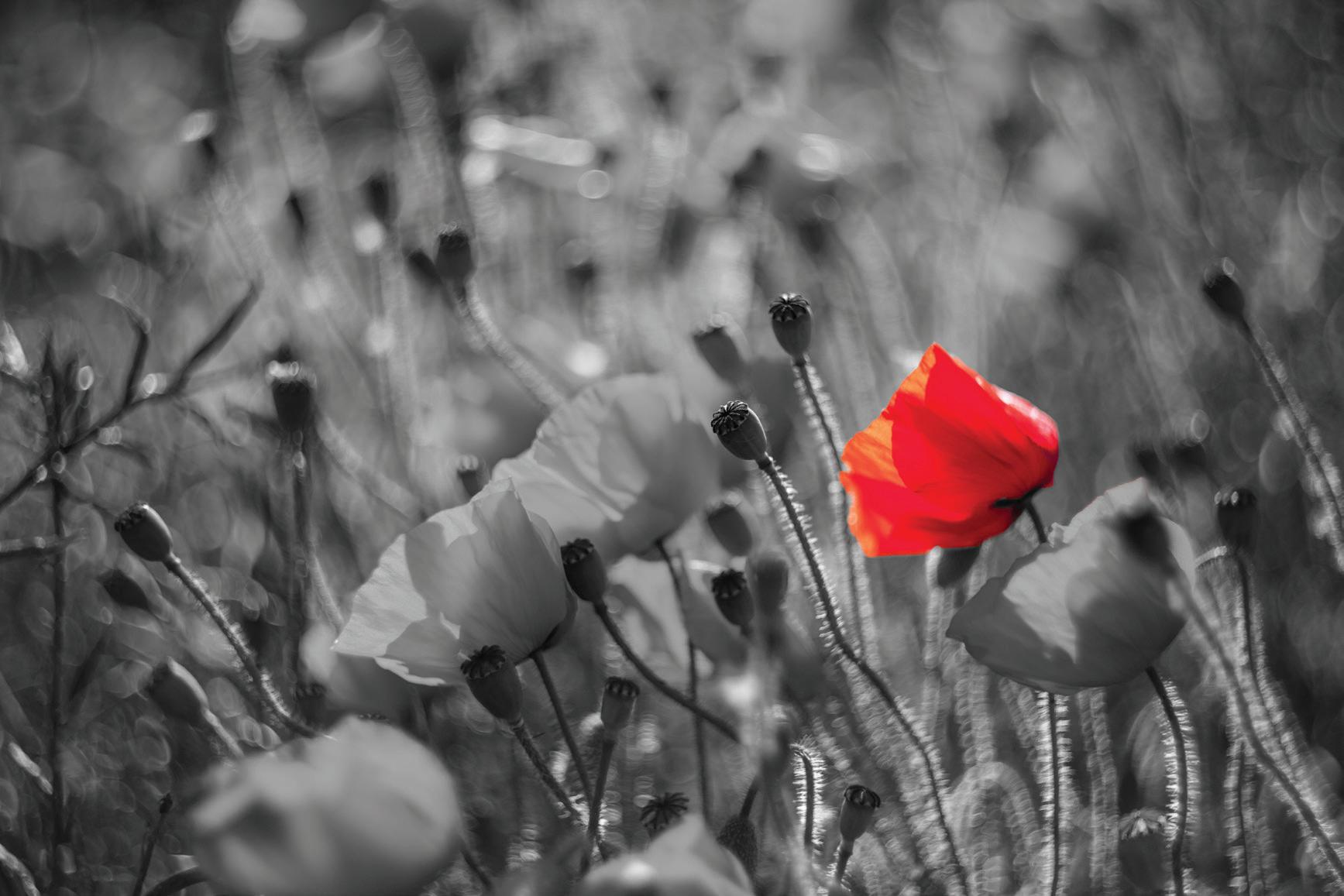
“He says, ‘I have to go France. Would you like to come along for the ride?’ He says, ‘I got all the paperwork and everything,’” said Harder. “I said sure.
“He knew everything about everywhere. He was just like a brother.”
Camp Shilo in Manitoba for further training.
The first planes he fixed were Harvards and other small aircraft the military used to train pi lots.
“When there were repairs to be done, you did ’em,” he remarked, adding his brother Hal was also an RCAF mechanic who maintained radar equipment.
The veteran eventually began working on the renowned North American F-86 Sabre jet, an iconic machine that made its name shooting down Russians during the Korean War.
“They were one of the best in the world,” he said.
After fixing the planes, Harder would suit up and ride with the pilot to ensure his repairs held up. The possibility of mechanical failure didn’t bother him; flying was flying.

“It’s exciting,” he said.
Harder’s career in the RCAF ran from 1953 to 1980. During that time, he served in Penhold, Alta., Saskatoon, Germany, Penhold and Moose Jaw, a community he has called home for more than 60 years.

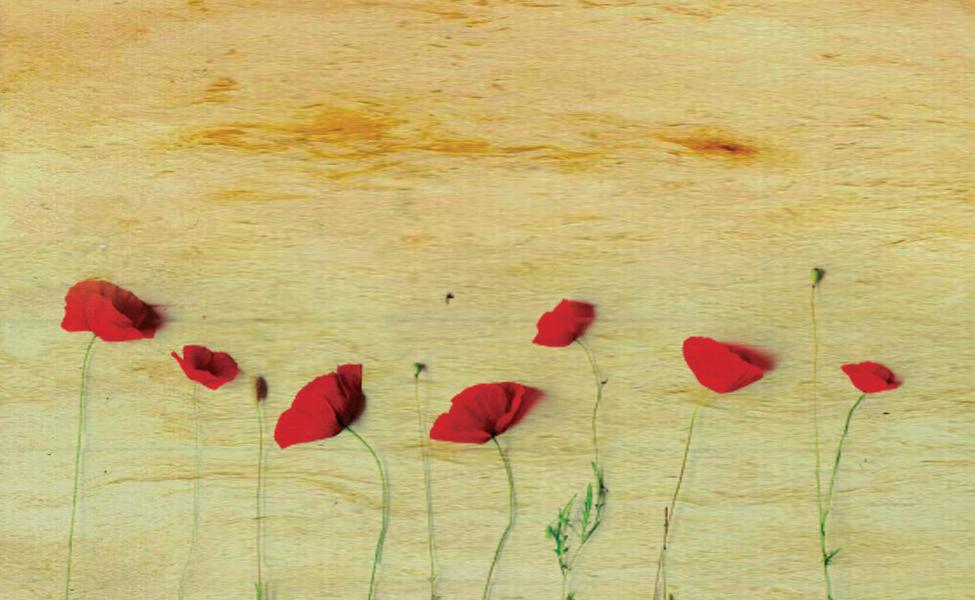

Harder spent time at several air bases during his 27-year career with the Royal Canadian Air Force. However, his time in West Germany left an indelible impression on him.
“It was good. I had lots of friends (in the air force) and knew lots of German people. My sister spoke German and I could understand German pretty good … ,” the 88-year-old said. “I didn’t have any trouble with (the) language; most Ger man I can understand. Not anymore, though.”
Harder was stationed in West Germany in the 1960s during his one overseas military tour. He saw only a few bombed-out buildings during his travels of the partitioned nation — the Allies mercilessly pummelled the country during the Second World War — because money from the United States had helped rebuild the infrastruc ture.
“Of course, wherever there’s a military instal lation, when the armed forces came in, they took that over (and also helped rebuild the infrastruc ture),” he said.
The love of flying
Harder’s love of airplanes began when he was a child during the Second World War. He lived in Rosthern, 65 kilometres northeast of Saskatoon, and the sights and sounds of Harvard training planes regularly flying near his community usu ally caught his attention.
“I used to draw aircraft on my scribbler (note book), so I guess I was always interested in them,” he said. “I just liked them. They flew across our yard all the time.”
Harder enlisted in the air force in 1953 and became a mechanic. He initially trained at Camp Borden in Ontario before he was shipped to
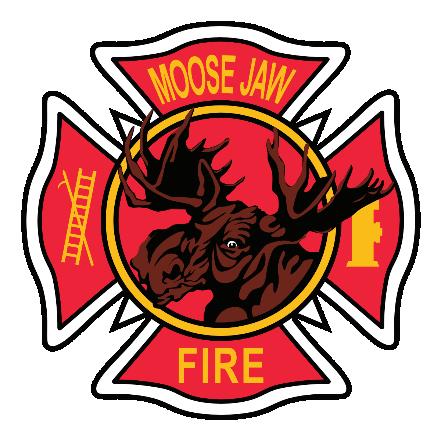
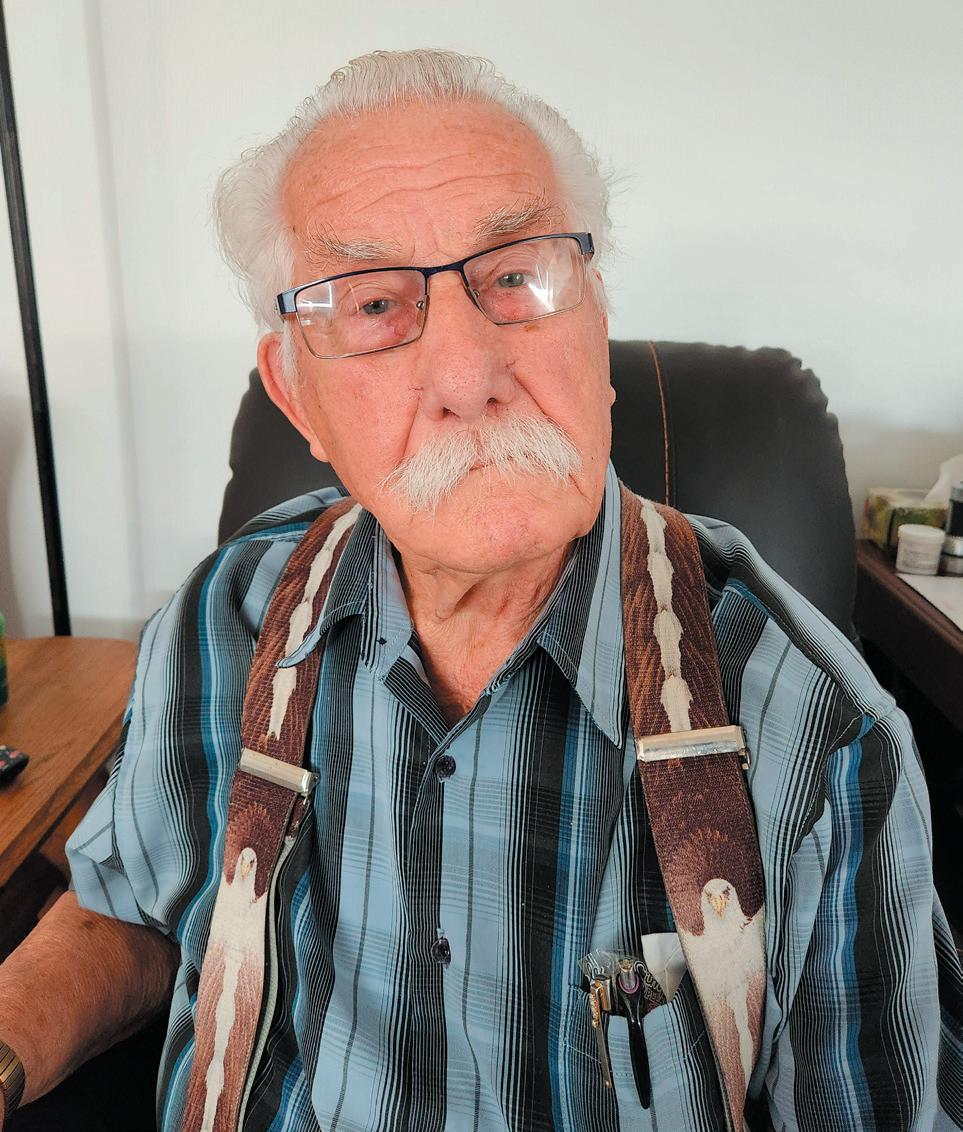
After retiring from the military, Harder worked for the City of Moose Jaw as a labourer who cut grass and dug cemetery plots. He lived in the same home for decades across from the Old Cemetery on Caribou Street East.
In his retirement, he rebuilt a 1928 Model A Ford, a vehicle his parents drove when he was a boy. With a chuckle, he added that he never owned a similar vehicle because he lacked mon ey, so he simply built one instead.
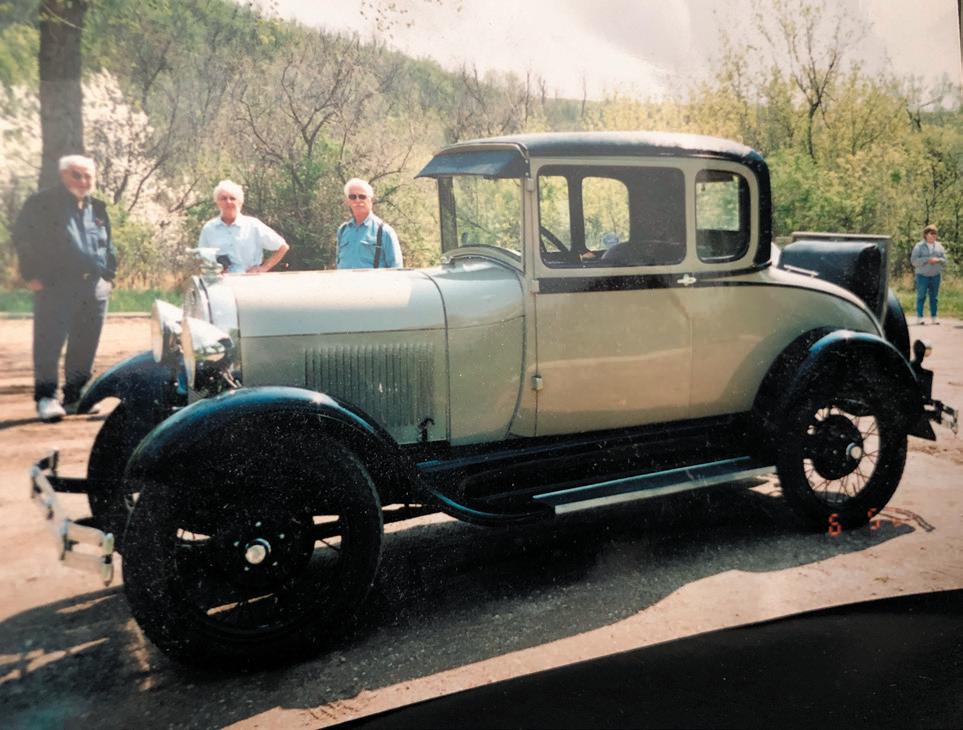
PAGE 18 • MOOSEJAWEXPRESS.COM ✦ REMEMBRANCE DAY ✦ NOVEMBER 2022 “Take Comfort in Quality Work” 48-5th Ave., N.E. Box 1330 mjcollision@sasktel.net (306) 693-Dent (3368) After Hours: (306) 631-6778 We will always remember We shall not forget
Ken Harder, 88, served as a mechanic in the Royal Cana dian Air Force from 1953 to 1980. Photo submitted
A 1928 Model A Ford that Ken Harder built in his retire ment. Photo by Jason G. Antonio
Ken Harder (right) during a Remembrance Day service at First Baptist Church. Photo by Jason G. Antonio
Barney McBride’s Stressful Day
“Sergeant McBride got Piece of Shrapnel in Shoulder”
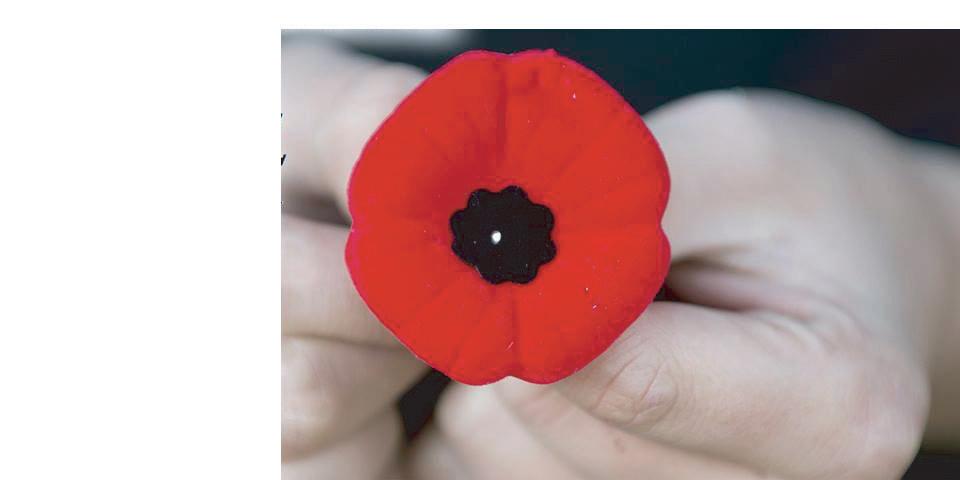
Next time you feel stressed remember Barney McBride.
Barney grew up on the East-side of Moose Jaw. I think he was the son of Mrs. Samuel Mc Bride, 1213, 3rd Avenue N.E. He would have at tended Ross School.
Barney joined the South Saskatchewan Reg iment in September 1939, at the outbreak of World War Two. Army life was good. Free food, clothes, health care and you got paid.
No stress until the morning of Wednesday, August 19, 1942 when he stepped off a Landing Craft and onto the stony beach at Dieppe and, what seemed like the entire German Army, was shooting at him and trying to kill him.
To make matters more stressful, after a few hours of shooting and being shot at, Barney and his S.S.R. buddies were told to go back to the beach, get on a Landing Craft (ALC) and go back to England. Again, the German Army tried to kill him.
Once onboard a ship and away from the Ger man Army, the Luftwaffe (German Air Force) took over and bombed his ship.
at age 87
 By Richard Dowson
By Richard Dowson
Barney’s letter of October 13, 1942 was repro duced in the Moose Jaw Times Herald.
“Dear Major
“Glad to get your air letter. I am just out of the hospital and feeling pretty shaky yet. Still have a bullet or piece of shrapnel in the shoulder blade.
“I feel lost, so many of the boys gone. Scores in the hospitals yet, but we left a lot in France. I was well inland when I got hit and it was tough enough getting down to the shore again.
“It wasn’t too bad till the evacuation start ed. Then, when the A.L.C. (small Landing Craft) came in and we had evacuated the buildings etc., Jerry took them over and swept the beach. It was like hail. Some of the boats were sunk with men left swimming all around. Other boats got over crowded, and men were hit in the water and in boats. One man was killed right beside me; others just alongside the boat. Seems you get calloused. We all figured, ‘your turn next, why worry.’
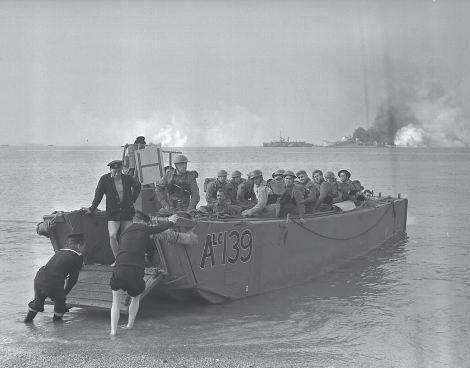
“Just as we thought our A.L.C. would sink we got transferred to a M.L.C and from there to a destroyer. It seems that particular destroyer was covering the rear, and Jerry bombed us all the way back, while our guns put up a terrific fire.
“Anyhow, we made it safe at last and landed, all soaking wet. All I had left was one boot, a pair of pants badly torn from barbed wire, and a P.T. shirt.
“The navy sure did a great job and we have to thank the R.A.F. They were very good too, al though on the return trip they were further out to sea covering the mother ships.
“It was sure hell. We lost a lot of good men and I think a guy was lucky to get back. Next time we go we hope to stay. No one wants any more evacuations.
the Major Loney information. I encourage any one interesting in Moose Jaw Births, Marriages and Death posted in the Moose Jaw Times Herald – and other sources, to visit their Blog. SEARCH: Births, Marriages & Deaths 1889-1969: Mc Bride Tom 1910 (moosejawobits.blogspot.com)
We know about Barney because he wrote a letter to Moose Jaw Recruiting Officer Major Richard Loney at the Hammond Building.

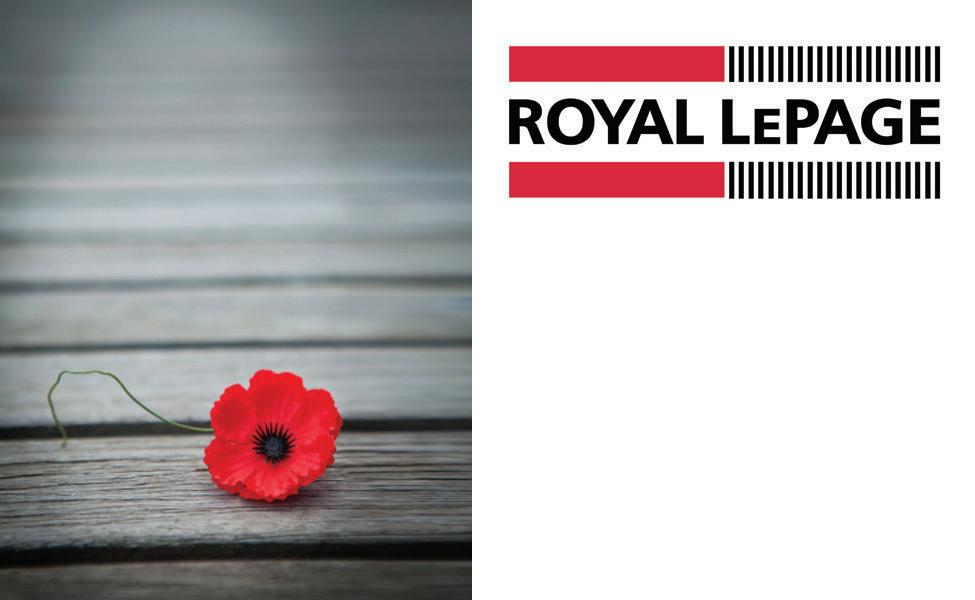
Major Richard Loney was a Veteran of the South African War and became involved in the lives of many Moose Jaw and District recruits. The Major wrote to many enlisted men and wom en while they were overseas. He lived at 790 Sta dacona Street West, Moose Jaw and died in 1965
“The officers and men were wonderful. Our Colonel was a superman (Lieutenant-Colonel Cecil Merritt). He should have a dozen V.C.s.” (Victoria Cross)
Editor:
Lieutenant-Colonel Cecil Merritt, VC, South Saskatchewan Regiment was born in Vancouver in November 1908 and died there in July 2000. Merritt was taken prisoner at Dieppe and spent the rest of the war as a POW.

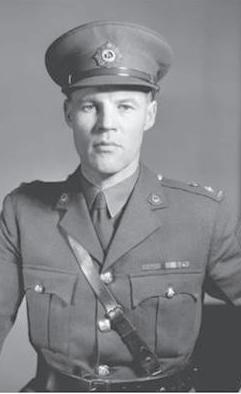

Special Note
Please credit to Tom and Wendy for posting
May we never FORGET
MOOSEJAWEXPRESS.COM ✦ REMEMBRANCE DAY ✦ NOVEMBER 2022 • PAGE 19 those who serve and have served. www.remco-memorials.ca MEMORIALS LTD EMCO 721 Caribou St W • 306-692-4666 email: c.richardson@remco-memorials.ca
This is a photo of men training to load and unload from an Army Landing Craft. Photo: Library and Archives Canada 4341223
Charles Cecil Ingersoll Merritt, VC, barrister, soldier, Member of Parliament, Credit Radio Canada
Female postal clerk enjoyed reading servicemen’s romantic — and corny — letters to lovers during WWII
By Jason G. Antonio
Sending and receiving mail was a big morale booster for servicemen during the Second World War since they could regularly stay connected with their mothers, girlfriends and wives wher ever they were stationed.
For Florence (Flo) Huttala, working in the post office allowed her to open those letters and read what the men were receiving — and some of the humorous things they were sending to their significant others.
“The (corny) line the guy gave his girlfriend. We always discussed it, (us) two girls at the post office,” she chuckled. “I liked the post office. There was so much mail.”
She was probably able to read personal in coming mail because of censorship during the war.
Huttala served in the Royal Canadian Air Force (RCAF) Women’s Division during the war. She was stationed in Patricia (Pat) Bay, British Columbia — near Victoria — for the duration of the war, while she spent most of her time working at the post office.
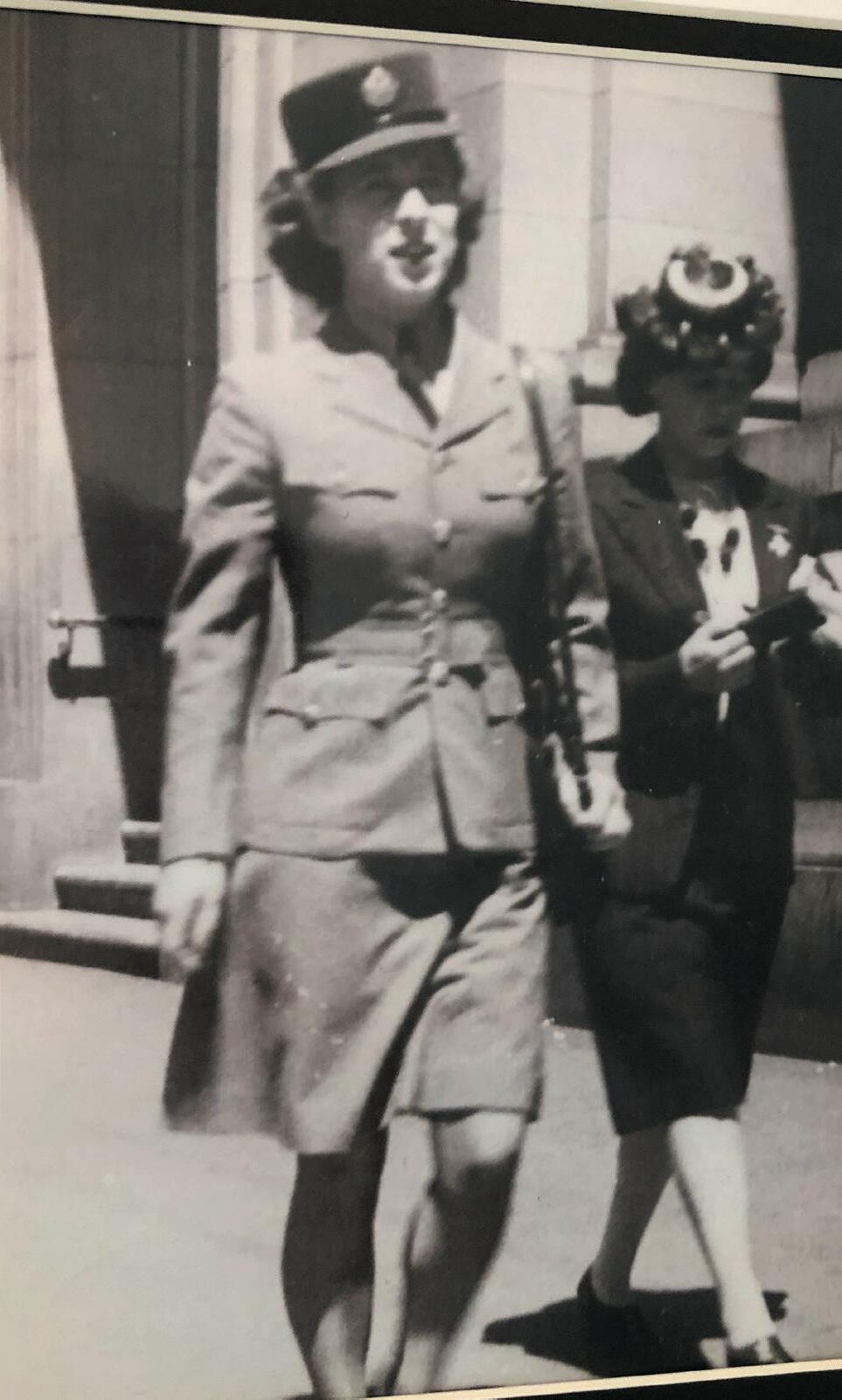
“We had an army sergeant in charge of the post. He was a good, nice friendly person,” said the 99-year-old. “We had to go get the mail from the delivery service. And if it was bad weather, he always went instead of sending us.”
At one point, Huttala’s father and sister were both stationed at the same base as her. They were able to take a picture together before the other two were eventually shipped elsewhere.
Air force facts
The military created the Royal Canadian Air Force (RCAF) Women’s Division on Feb. 3, 1942, although it was originally founded as the Canadi an Women’s Auxiliary Air Force on July 2, 1941.
There were 17,038 women who served in the


RCAFWD, with 30 dying on active service. Per sonnel served in Canada and overseas, including the headquarters of the RCAF Overseas and No. 6 (RCAF) Group of RAF Bomber Command in Britain. Women served in 69 of 102 trades in the RCAF, including aircraft maintenance and air traffic control.
The military eventually disbanded the group on Dec. 11, 1946.
From the prairies to the mountains
Huttala was born in 1923 in Scotland before her family moved to Moose Jaw when she was six.

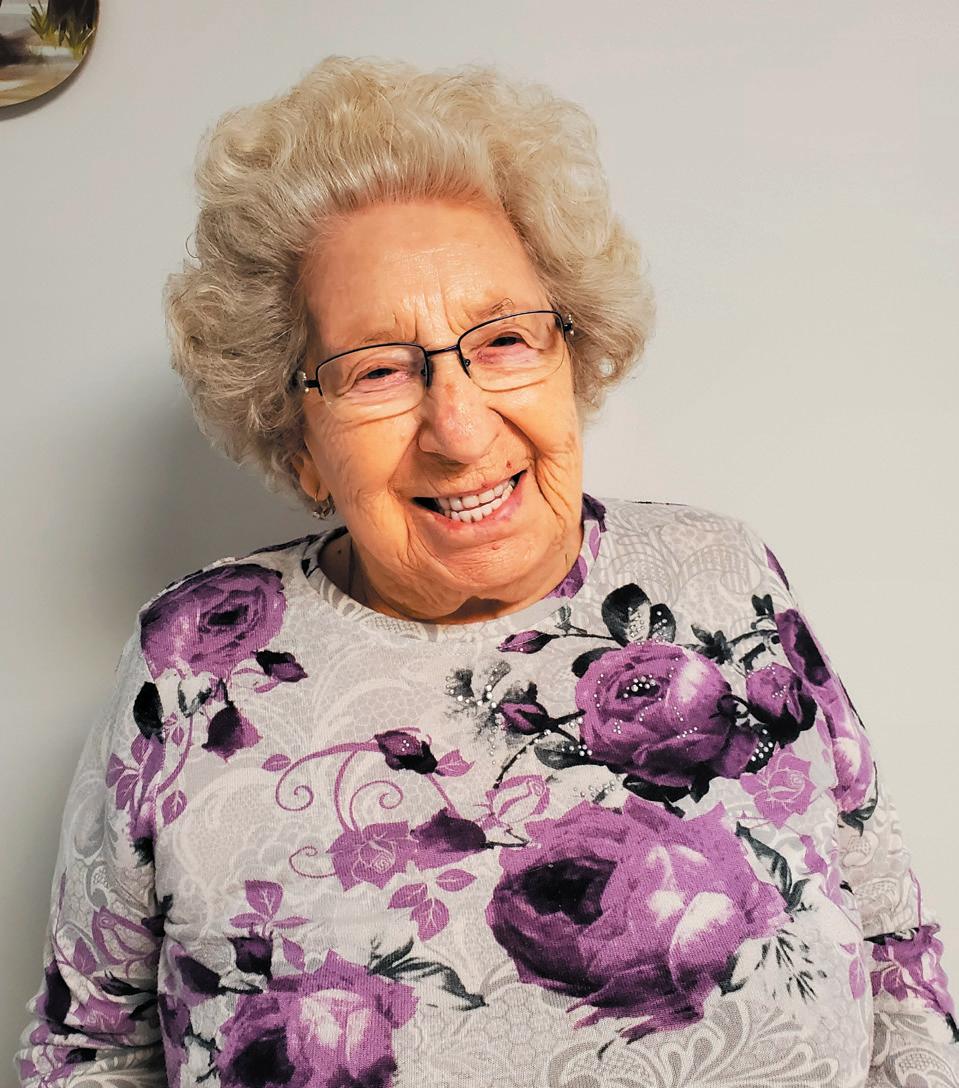
The Second World War was in its third year when she enlisted in Regina in 1942 at age 19. She and other young women were shipped by train to Rockliffe, Ont., for training, which proved quite tough for the Prairie girl.
The military did not provide the women with uniforms at first. Instead, they were forced to wear coveralls.
“We had to march down the street; we did a lot of marching and drills,” Huttala recalled.
After training finished, Huttala and the oth er women were shipped back west to the West Coast. They travelled through the mountains during their train journey, a new and thrilling ex perience for the Moose Javian.
“I was tired of living on the Prairies,” she said.
“I was glad when they posted me to B.C.”
Along that rail journey, Huttala happened to see her brother while passing through a train sta tion in a small town on the Prairies.
“It was night when we went through this town. And here I saw him. And he just happened to turn — and I was waving,” she said. “And I couldn’t believe that I saw my brother there. It was such a nice (sight).”
One of the main activities at the air base in Pat Bay was dancing, which everyone seemed to enjoy.
“I loved dancing,” Huttala recalled wistfully.
Dancing was what everyone did when the war in Europe ended on May 7, 1945, with the air base throwing a big party to celebrate. The base personnel had a great time “cutting a rug,” as did Huttala, who enjoyed every minute of it.
PAGE 20 • MOOSEJAWEXPRESS.COM ✦ REMEMBRANCE DAY ✦ NOVEMBER 2022
306-694-1355
SalvationArmy.ca
Florence Huttala wears her air force uniform while out for a walk in Victoria, B.C., during the Second World War. Photo by Jason G. Antonio
Florence Huttala, 99, is an air force veteran from the Second World War. She served as a postal clerk in British Columbia. Photo courtesy Chateau St. Michael
Corporal Clarence Howard Foster Shaw of Moose Jaw
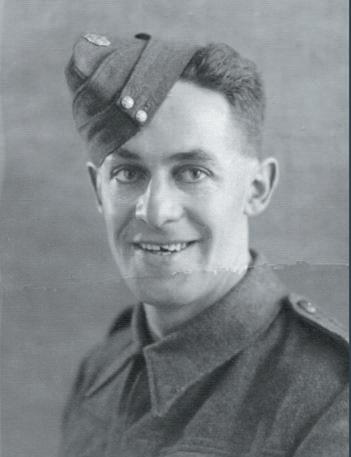
Killed on Active Duty in England, May 28, 1942
Memories of those killed during WW 2 are of ten well documented. Such is the case for Corpo ral Clarence Howard Foster Shaw of Moose Jaw (#L7675, Royal Canadian Army Service Corps).
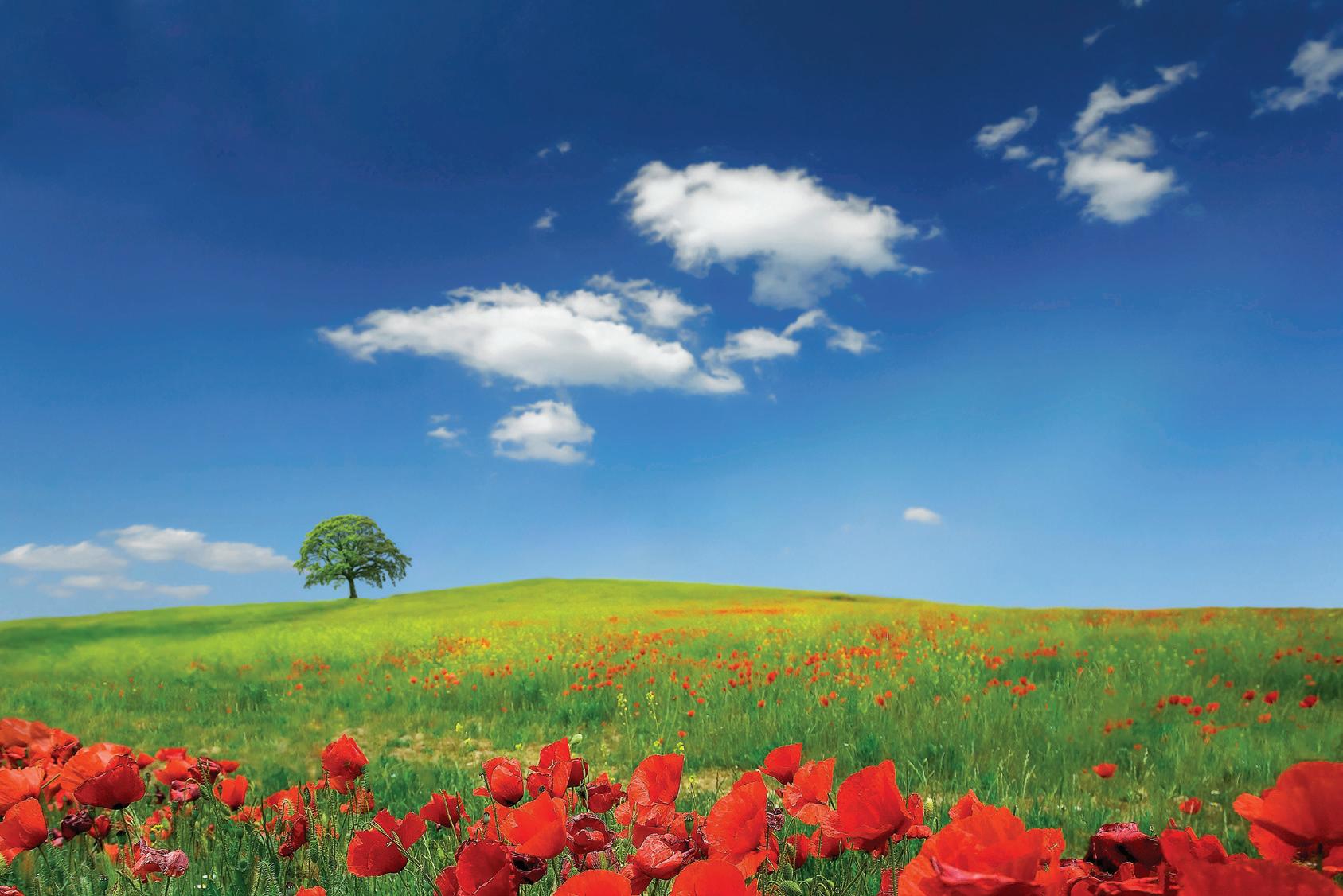
The Saskatchewan Virtual War Memorial and the Canadian Virtual War Memorial contain in formation, as does the old Moose Jaw Times Her ald.
This story that ran in the Moose Jaw Times Herald, on Monday June 1, 1942
By Richard Dowson

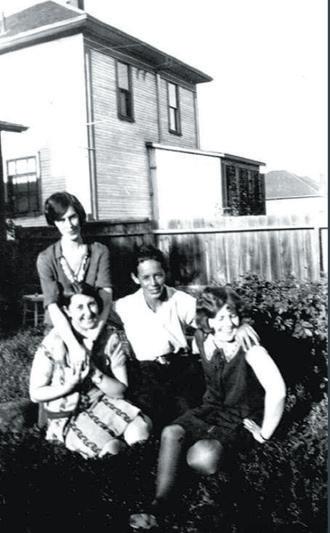
Shaw), two small daughters, the Misses Reta Mae Shaw and Clarice Betty Shaw; his mother, Mrs. Minnie Shaw, and one sister, Mrs. Evelyn Jones.”
He was living at 469 Stadacona Street East when he enlisted. At the time of his death the family was living at 428 Athabasca Street East, Moose Jaw. The reason is not known but families often ‘doubled-up’ during the war to save money and ‘make ends meet.’
The SVWM adds that he had been a member of the “King’s Own Rifles” in Moose Jaw and was killed when struck by a machine gun bullet(s) while on exercise at Old Mill House, Bolney, Sus sex, England. Although the death was consid ered accidental, “Sergeant R. W. Armstrong was charged in the case”.
They add, Clarence “… was working as a welder and machinist when he enlisted.”




atres around the world also used Triumphs, En fields, BSAs, Indians, Clynos, Ariels, Welbikes, and even the odd captured BMW.”
Within his file at CVWM is a reference to Lieutenant Aimers Stirling Bertram, who died of his wounds on July 10, 1917 and is buried in the same Brookwood cemetery in Surrey. He was the son of Henry and Jennie Bertram of Dundas, Ontario.
One assumes he was a relative of the Shaw family.
“Corporal C.H.F. Shaw Died of Injuries Re ceived in England
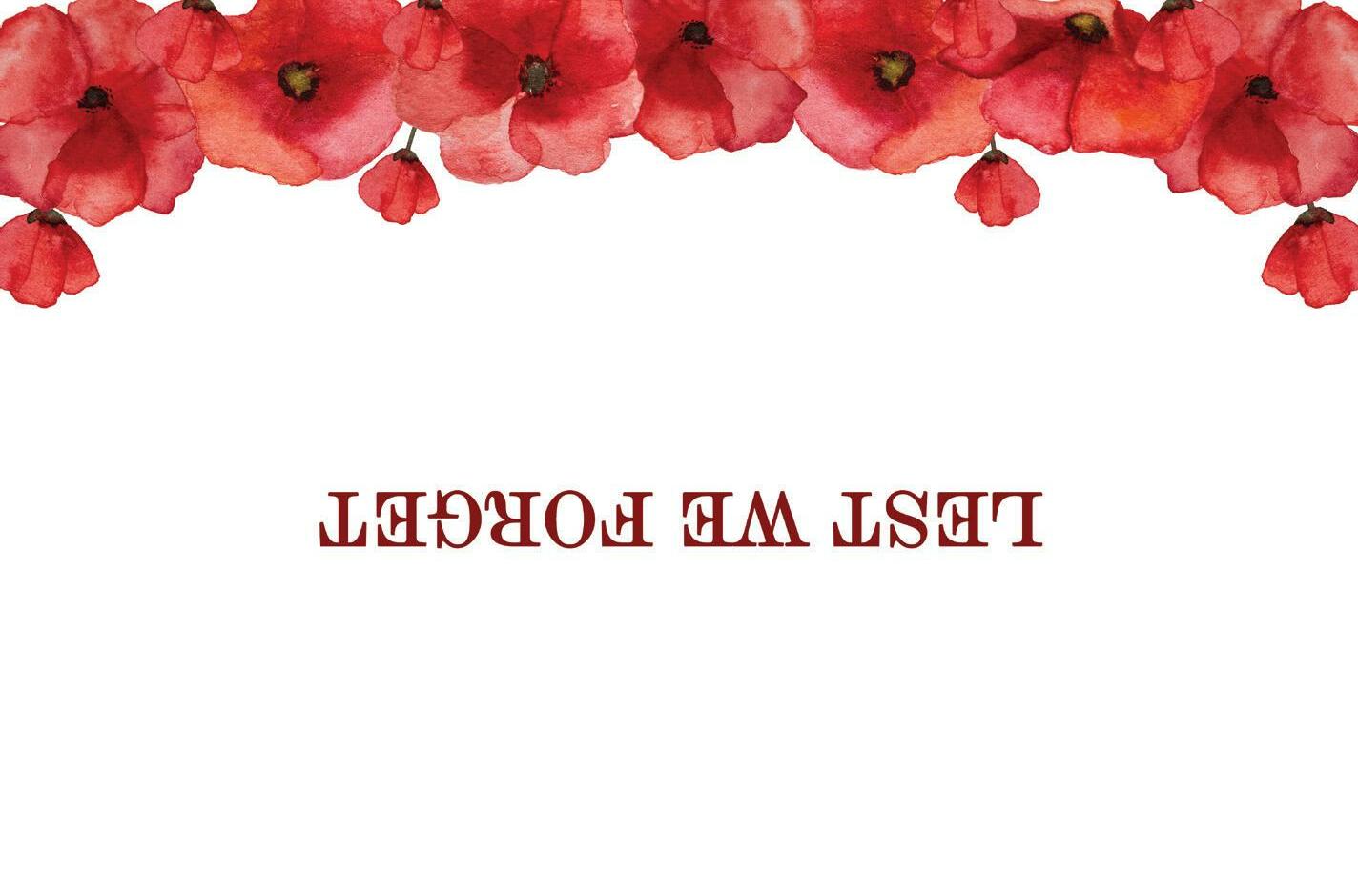
“Advice has reached the city (Moose Jaw) of the death of Corporal Clarence H. F. Shaw in En gland, from injuries received in the performance of his duties in the motor cycle corps of the Royal Canadian Army Service Corps, in which he had served overseas since February 1940.
“The deceased, who was educated at Prince Arthur School and the Technical High School, spent the whole of his life in Moose Jaw up un til the time that he enlisted for active service. He was formerly a life guard at the Natatorium and was 27 years of age at his passing.
“He is survived by his widow (Mrs. Jean Ruth
Clarence on his Motorcycle in England, about 1941. The motorcycle is not a Harley. It may be a BSA M20? Or it could be a Norton? Any ideas? Clarence was assigned to the Roy al Canadian Army Service Corps, 64 General Transport Company.
As Sharon Adams wrote in the December 8, 2018 issue of the Legion Magazine, “Although Norton and Harley-Davidson motorcycles were the customary ride, Canadians serving in the
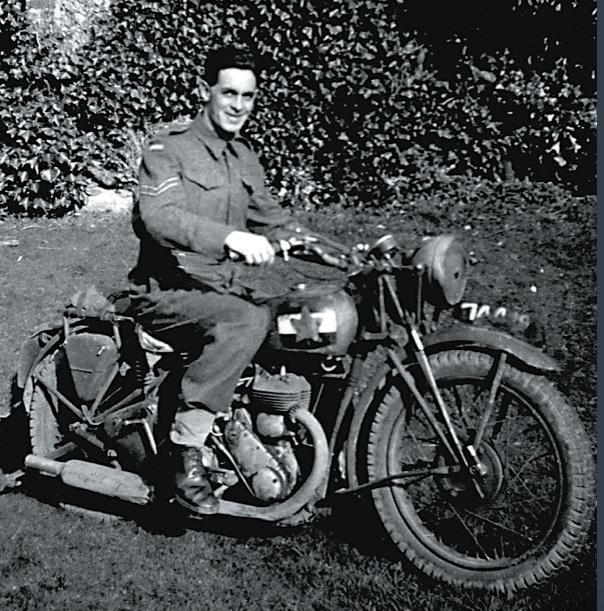
MOOSEJAWEXPRESS.COM ✦ REMEMBRANCE DAY ✦ NOVEMBER 2022 • PAGE 21 CUBIAK CENTER The Growing Tree 844 Grandview St. W MOOSE JAW, SK OPENINGS AVAILABLE AGES 3 TO 5 ANGELA STANGELAND 306.630.9334 PATSY ACOTT 306.690.7212 Tim McLeod MLA for Moose Jaw North 306-692-8884 • mjnorthmla@sasktel.net Remembering those who fought for our freedom
SEE Clarence Howard Foster Shaw - The Canadian Virtual War Memorial - Veterans Af fairs Canada
Photo of CLARENCE HOWARD FOSTER SHAW – Sub mitted for the project, Operation Picture Me – From the CVWM
Photo of CLARENCE HOWARD FOSTER SHAW – Sub mitted for the project, Operation Picture Me – From CVWM
Photo of CLARENCE HOWARD FOSTER SHAW – Sub mitted for the project, Operation Picture Me – From CVWM Clarence the kid growing up in Moose Jaw.
Juno Beach Centre acquires artifacts for exhibit about Dieppe Raid’s 80th anniversary
The Juno Beach Centre has launched a temporary exhibit called From Dieppe to Juno: The 80th Anniversary of the Dieppe Raid, produced in partnership with the War Heritage Institute and sponsored by Seaspan Shipyards.

The War Heritage Institute is based in Brus sels, Belgium, while Seaspan Shipyards is located in Vancouver, British Columbia.
By Jason G. Antonio
the partnership.
“As part of this exciting exhibition and com memorative project in France, we have shared a number of high-profile artifacts from our mu seum’s extensive Second World War collection,” Goldsworthy. “These exceptional artifacts, which include an original ‘most secret’ 1942 Dieppe Raid map and a one-of-a-kind prisoner of war flag presented to the Canadian liberators in 1944, will help to shape and illuminate the historical narrative.”
“It is our shared hope and vision,” he added, “that many thousands of Canadians and Europe an residents will visit and participate in this up coming exhibition!”


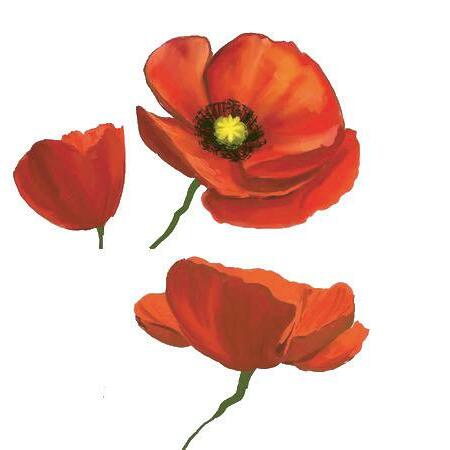
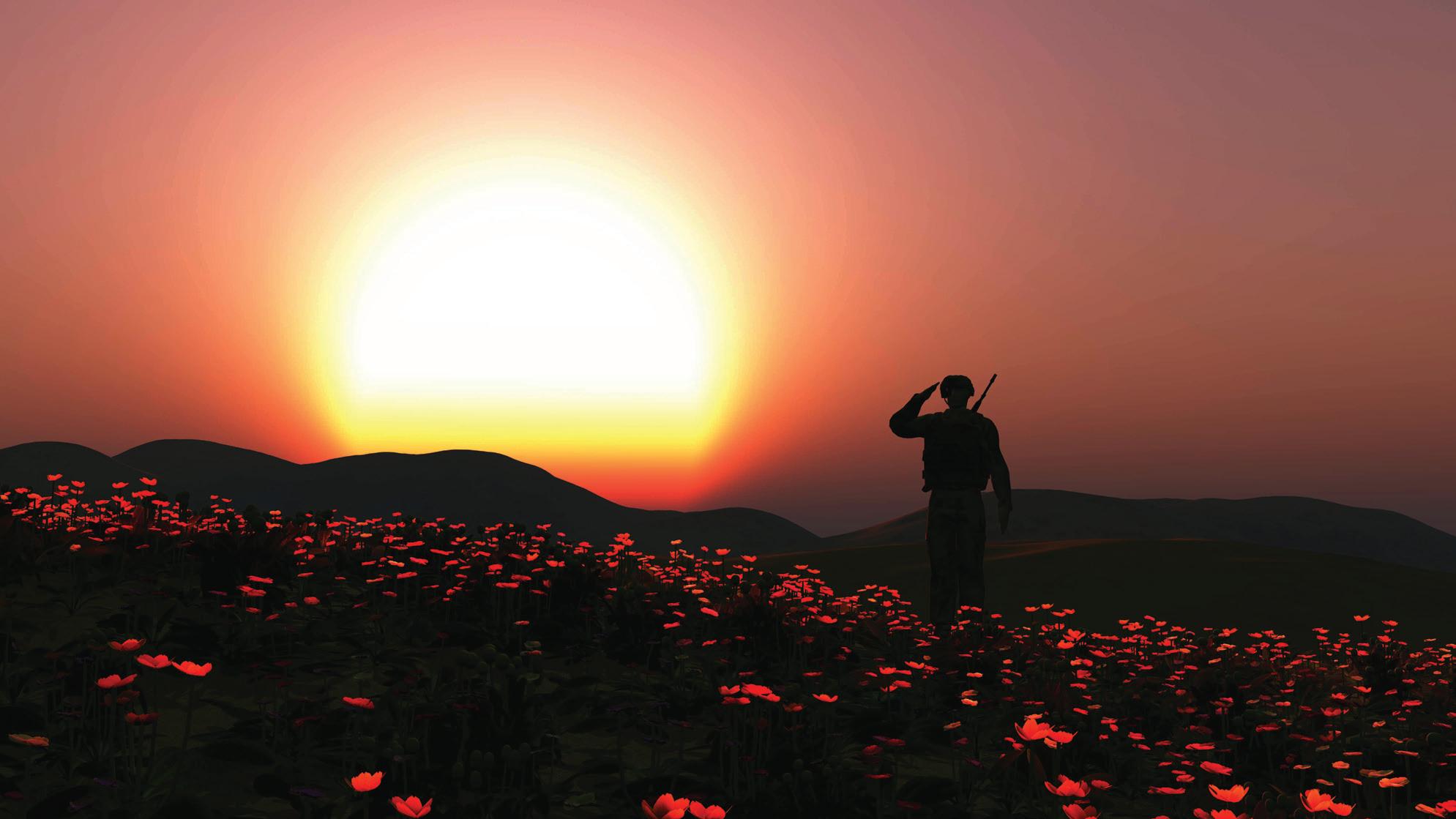
The museum of the Royal Regiment of Can ada, the Toronto-based infantry battalion that suffered some of the operation’s worst casualties, also stepped up.

ed, captured or killed. More than 900 Canadian soldiers were killed in action or died of wounds, almost 600 of whom remain buried in the Dieppe Canadian War Cemetery in Hautot-sur-Mer, France.
The legacy of the Dieppe Raid extends be yond borders and time. In re-telling the story, From Dieppe to Juno explores the effects of that legacy through various experiences of witnesses from all walks of life.
The exhibit runs until Saturday, Dec. 31, 2023, in Courseulles-sur-Mer, France.
From Dieppe to Juno features 72 different ar tifacts and personal testimonies from men who participated in or were affected by the raid. Visi tors will be thrust into the tense context of 1942, the height of the Nazi regime’s powerful grip over Europe.
Casualties were so high during the Dieppe Raid on Aug. 19, 1942, that artifacts were difficult to secure.
“The objects we did find are quite powerful and reveal the significance of the raid,” said Marie Eve Vaillancourt, the Juno Beach Centre’s direc tor of exhibitions.
“Each of them is a true treasure. They will help the JBC tell the story of the Dieppe Raid through the individuals who experienced the raid and whose artifacts we will be showcasing. Their presence in France will help visitors under stand the legacy of the Dieppe Raid and keep its memory alive for future generations.”
Eighteen artifacts came from Canadian lend ers, museums or family collections. Ryan Gold sworthy, museum director and curator of the Royal Canadian Military Institute (RCMI) Muse um in Toronto, one of Canada’s oldest and largest military museums, says the RCMI is delighted by
tor, says, “The Dieppe raid was one of the first steps that Canada undertook to return freedom to France and the rest of Europe. These artifacts, especially the rare set of shackles, illustrate the harsh conditions suffered by Canadian soldiers who endured 32 months of captivity as prisoners of war.”


The Dieppe Raid was the Canadian Army’s first major combat against Germany during the Second World War. It was planned as a one-day operation conducted primarily by Canadian troops, with land, air and naval support from British and American troops. Its official objective remains shrouded in mystery and is the subject of widespread mythology and controversy.
Within fewer than 10 hours of fighting, twothirds of a force of 4,963 Canadians were wound
The Dieppe Raid remains one of the most identifiable events in Canadian Second World War history. For many decades, it occupied a greater place in the collective memory of Cana dians than the Normandy landings of D-Day in 1944.
It was not until recent years that the events at Juno Beach have caught up with Dieppe in Ca nadian memory. This new exhibition explores how the mythology linking the horror at Dieppe to the success of the Canadians on D-Day has evolved over time.
Long remembered as a tragic failure, the sto ry of Dieppe is as complex as it is nuanced. His torians have intensely studied it over the decades, while scholars and hobbyists continue to debate it.
For visitors learning about the topic for the first time, From Dieppe to Juno provides an ac cessible, factual overview of the planning, the raid, and its aftermath. For more knowledgeable visitors, the exhibition will also delve into facets of the raid not often explored.
Visit www.junobeach.org for more informa tion.
PAGE 22 • MOOSEJAWEXPRESS.COM ✦ REMEMBRANCE DAY ✦ NOVEMBER 2022 Moose Jaw’s Oldest & Most Trusted Towing Service WALKERS TOWING 306-692-2040 Moose Jaw’s Oldest & Mose Trusted Taxi Firm 24 HOUR SERVICE AMILS DIAMOND TAXI 306-692-4040 | 306-693-4000 anspor ting Seniors For O ver 90 Yea
Richard Towey, museum director and cura
The Juno Beach Centre is now offering an exhibition that honours the 80th anniversary of the Dieppe Raid. Photo courtesy Juno Beach Centre
Seaman watched landing craft head toward the beaches of Dieppe during Operation Jubilee on Aug. 19, 1942. Photo courtesy Juno Beach Centre
A group of soldiers poses in a cemetery where hundreds of Canadians who fought and died during the Dieppe Raid are buried. Photo courtesy Juno Beach Centre
Ordinary Canadians achieved extraordinary things during Battle of Vimy Ridge 105 years ago
 By Jason G. Antonio
By Jason G. Antonio
Vimy Ridge was considered one of the more im pregnable defensive networks on the Western Front during the First World War, a position that the French and British failed to capture despite many repeated attempts.
The Germans transformed Vimy Ridge into a heavily fortified system of tunnels and trenches in October 1914, defended with an arsenal of ma chine guns and artillery pieces. After three years of unsuccessful assaults, hundreds of thousands of British and French troops had died and failed to capture the ridge.
At about seven kilometres in length and cul minating at an elevation of 145 metres (476 feet), Vimy Ridge provides a natural unobstructed view — great for defenders — for tens of kilometres in all directions.
The Allies gave the upstart — but effective — Canadians the mission of liberating the ridge from the Germans. After much preparation and rehearsal on a mock ridge, the Canucks were ready to take it to the enemy with a new strategy and newfound drive.
Making history

On a cold Easter morning at 5:30 a.m. on April 9, 1917, in northern France, all four divi sions of the newly formed Canadian Corps — composed of 100,000 men fighting together for the first time — jumped out of their trenches and made their way — under the umbrella of a 1,000gun creeping artillery barrage — uphill through sleet, mud and machine-gun fire.
The Canadians captured most of the ridge that day, but it took until April 12 to overcome the final hurdle: capturing Hill 120, also known as “the pimple.”
The cost for the small army was considerable: 3,598 soldiers died and 7,004 were injured.
Moose Jaw connections
Research shows at least 39 soldiers who died at Vimy Ridge were from Moose Jaw and area or enlisted here.
Other soldiers such as Edmon Francis Mit telholtz survived the battle and returned home afterward. Mittelholtz was born on May 10, 1896, in West McGillivray, Ont., and later moved west to Saskatchewan to work as a farmer,

He enlisted in Saskatoon on Dec. 18, 1915, and was attached to the 96th Battalion (Cana dian Highlanders). The 92nd Battalion (48th Highlanders) later absorbed the 96th Battalion in 1916. The 92nd was known for its soldiers wear ing kilts in the trenches.
“He never talked to us about war, but if a First World War veteran came over, we would lay in bed and listen to the stories he would talk about with the other veteran,” son Vern recalled. “Our bedroom was right next to the living room, so we heard everything that went on.”
While Vern couldn’t recall a specific story his dad told about fighting at Vimy Ridge, he does re member his father talking about the August 1917 Battle of Hill 70.
“He (Edmon) said after the slaughter at Hill 70, after the Newfoundlanders were slaughtered and he had to crawl through the corpses, the only reason his unit got up the hill was because the Germans ran out of ammunition. That was his story,” added Vern.
Letters from the battlefield
Meanwhile, Lance Cpl. Harry Alexander Chalmers was born in Ontario but enlisted in Saskatchewan. He wrote several letters to a Sas katchewan woman about his war experiences, in cluding preparing for Vimy.
On March 18, 1917, he said he witnessed “great preparations” leading up to the battle. “There are miles of transport wagons and mo tor trucks on the roads all the time. The work is mostly done at night. It’s wonderful how a man gets around in the dark.”
In a letter written on April 11, 1917, Chalm ers described the scene from the front line.
“Well it’s some sight to see a battlefield af ter the thing is over,” Chalmers wrote. “There is not a square inch of ground (that has not) been touched by shell fire. It’s just a mess of shell holes, barb wire and torn trenches. The most awful mess I ever seen. You can’t realize what it’s like.
“The front line and supports and third line of the Germans was pounded into a pulp. Such a noise I never imagined in my life. Bedlam was sure let loose … . The sights around the field are terrible looking. I hope I don’t witness anything
like it again.”
Up close with the enemy
Chalmers also wrote that he’d “never seen such tickled men as some of (the German sol diers) were to be taken prisoner.”
“The (Canadians) began to collect souvenirs and even cut the buttons off (the German pris oners’) clothes. They were quite willing to give up anything,” he reported. “After they got back of our lines some of them made themselves quite useful, helped with the wounded and carried wa ter. They are a motley looking bunch.”
“It takes a few lessons like this one to show him who’s who but when a fellow sees sights like this one it seems funny that humanity can’t get along without war,” Chalmers added. “There’s room for us all on this globe yet without this slaughter.”
Of the battalions that fought at Vimy Ridge, four were from Saskatchewan: the 1st Canadian Mounted Rifles, the 5th Battalion, the 28th Bat talion and the 46th Battalion. Over subsequent years, the first two have evolved into the North Saskatchewan Regiment (based in Saskatoon); the 28th into the Royal Regina Rifles; and the 46th into the Saskatchewan Dragoons (based in Moose Jaw).

MOOSEJAWEXPRESS.COM ✦ REMEMBRANCE DAY ✦ NOVEMBER 2022 • PAGE 23
An up-close view of the Vimy Ridge monument. Photo courtesy Martin Anderson/Getty Images
Joy-filled Canadian soldiers celebrate after capturing Vimy Ridge. Photo courtesy CBC
Canadian soldiers go over the top of their trench and into the Battle of Vimy Ridge. Photo courtesy Vimy Founda tion
First World War pilots had a life ex pectancy of 11 days because of how primitive and deadly aerial combat was, but that didn’t stop Basil Ward Binkley from jumping into a bi plane.


 By Jason G. Antonio
By Jason G. Antonio
pilots received about 17 hours of instruction, which was expanded to 50 hours later in the war.
Binkley was on patrol in north ern France on July 12, 1917, when he was shot down and killed, just one of roughly 8,000 RFC airmen to die in combat. He was later buried at Bailleul Communal Cemetery in Nord, France.
Carpenter was born on Sept. 8, 1885, in Ontario before he moved to Moose Jaw, where he married E. Pearl Carpenter — no maiden name is known — and they lived at 344 Lillooet Street West.
He enlisted on Sept. 14, 1915, and was assigned to the 46th Bat talion. His attestation papers say he was 29 years old, stood 5-6, had a sallow complexion, blue eyes and light brown hair.
Carpenter was serving with the 16th Infantry Battalion (Manitoba Regiment) when he died on March 5, 1918, at age 32. He is buried at the Barlin Communal Cemetery in northern France.
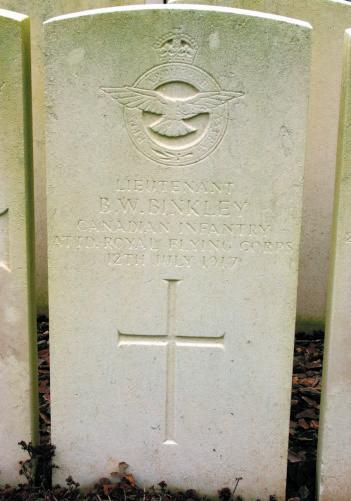


Street East.








He was 26 years old when he enlisted on Sept. 28, 1915. He stood 5-5, had a light complexion, blue eyes and brown hair.








Urton was posted to the 46th Battalion (Saskatchewan Infantry Regiment) and, two years later, died at age 28 on Aug. 22, 1917. He was buried in a cemetery near the Pas de Calais, France.
Waddington was born on Jan. 13, 1894, to John and Mary Wad dington of Portage la Prairie, Man. He later moved to Moose Jaw, lived at 1116 Fourth Avenue Northeast, and became a carpenter.

Binkley, a lieutenant in the Roy al Flying Corps (RFC), was born in Moose Jaw on May 13, 1892, to John Whitfield and Alice (née Gun by) Binkley, and was the brother of Glen, Manswell, Hope and Melvin.
The Moose Javian was 18 when he enlisted on Oct. 28, 1914, nearly two months after the war’s outbreak. He initially served with the 15th Battalion but eventually transferred to Britain’s fledgling RFC.
It’s unknown how much flight training Binkley received, but most
Binkley is one of 200 local men who died during the First World War, something that Royal Canadi an Legion Branch No. 59 and Moose Jaw Express/MooseJawToday.com are continuing to highlight through a multi-part series.
This article looks at Pte. Edward Bruce Carpenter, Pte. Clarence Henry Chrismas, Ptr. Eric Hockin, Pte. Richard Southwell Urton and Pte. Martin Edward Waddington.
Chrismas was born on June 23, 1897, in Battle, East Sussex, En gland, before his family moved to Moose Jaw and lived at 1346 Con naught Avenue. He later became a mechanic.
The young man was 18 when he enlisted on Jan. 15, 1916. He stood 5-6, had a dark complexion and brown hair and eyes.
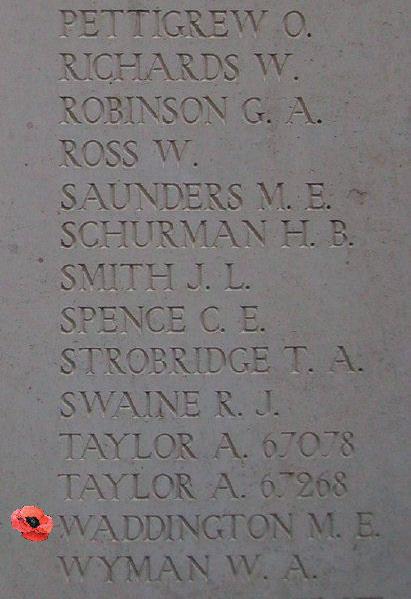
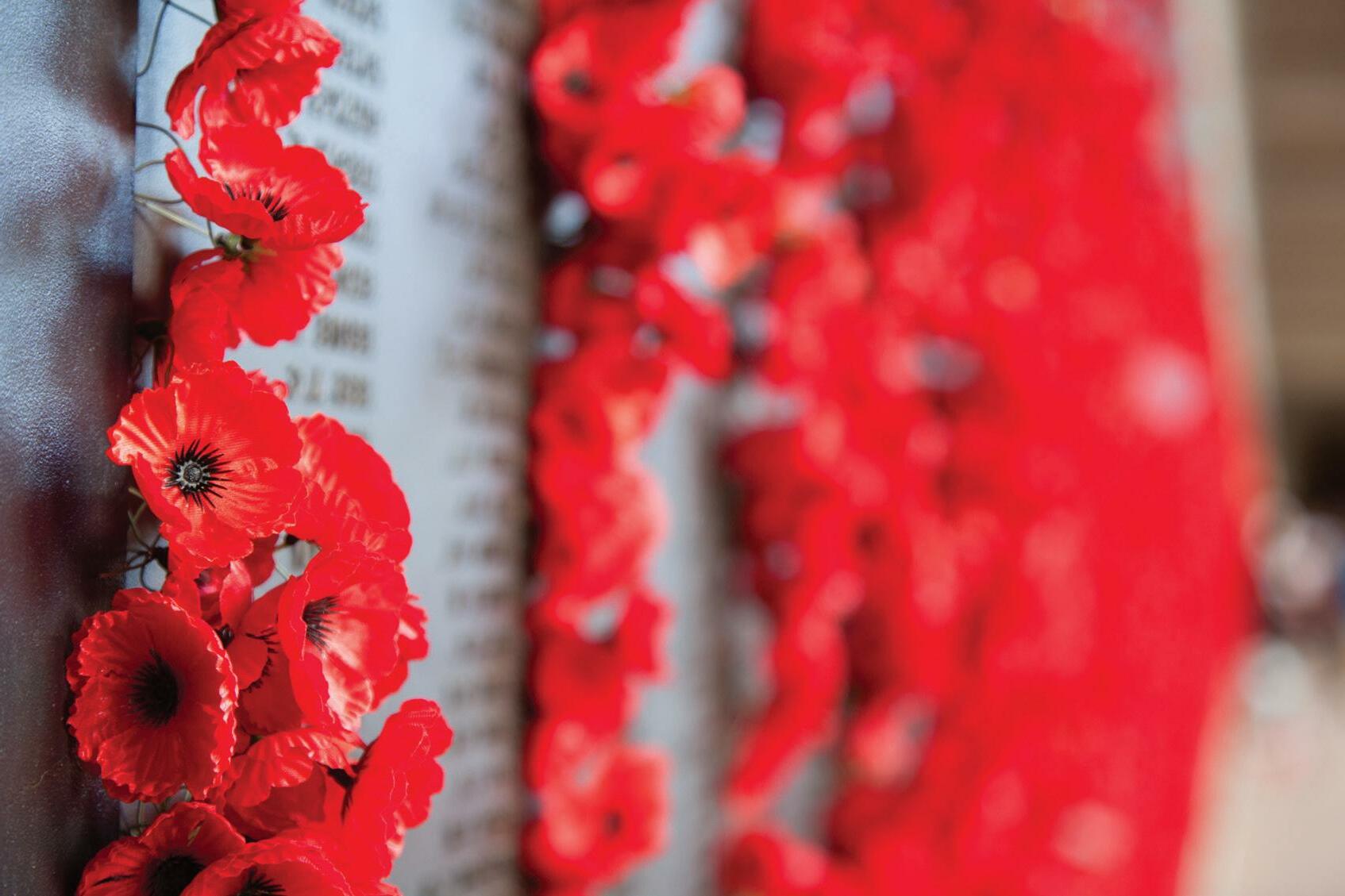
Chrismas was serving with the 28th Battalion (Saskatchewan Infan try Regiment) when he was killed on Aug. 9, 1918 — likely during Canada’s major Hundred Days of fensive — at age 21. He was buried in a cemetery near Somme, France.
Hockin was born on May 21, 1897, in Wolseley, Sask., before his family moved to Moose Jaw and he became a farmer. His mother, Mrs. M. F. Hockin, lived at 359 Fairford Street West.
He enlisted at age 18 on Dec. 14, 1915, and served with the 28th Bat talion. He was 21 when he was killed on July 18, 1918, and was buried at Wanquetin Communal Cemetery in northern France.
Urton was born in Moose Jaw on Aug. 5, 1889, to William and Mary Jane (nee Golding) Urton at 417 Fairford Street West. He became a civil servant, married Annie Mary Lemke, and lived at 725 Ominica
He was 21 years old when he en listed on July 6, 1915, and was posted overseas to the 25th Battalion (Nova Scotia Regiment). Unfortunately, he was killed in battle on June 17, 1916.
Since his body was never re covered, his name is inscribed on the famed Menin Gate Memorial in Ypres, Belgium.
PAGE 24 • MOOSEJAWEXPRESS.COM ✦ REMEMBRANCE DAY ✦ NOVEMBER 2022
Fraternal Order of Eagles 561 Home St. Moose Jaw • 306-693-1496 Shane & Bev Hart 405 Lillooet St. W | Moose Jaw, SK. | 306.694.0088 We will get to the ‘HART’ of the problem NORTHERN AIR & AUTO
by land or air, local
sacrificed all
the
Whether
men
during
First World War
A photo of Lt. Basil Ward Binkley, who served in the Royal Flying Corps. Photo courtesy Veterans Affairs Canada A replica of a First World War biplane, in this case, a British fighter RE 5 plane.
Photo by Getty Images
The headstone of Basil Binkley at Bailleul Communal Cemetery in Nord, France.
Photo courtesy Veterans Affairs Canada
The headstone of Pte. Edward Bruce Carpenter, who is buried at the Barlin Communal Cemetery in northern France. Photo courtesy Veterans Affairs Canada
Pte. Martin Edward Waddington’s name is inscribed on the Menin Gate Memorial in Ypres, Belgium, because his body was nev er recovered during the First World War. Photo courtesy Veterans Affairs Canada
Veteran wants feds to give comrade highest military medal for actions in Afghanistan
It’s been 77 years since Canada awarded any mili tary servicemember the Victoria Cross, the high est military medal available, but a local veteran is working with his colleagues to change that.
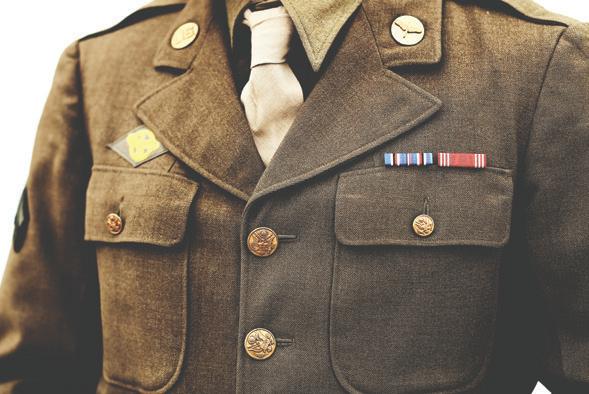
John Thomson appeared during city council’s Feb. 28 regular meeting and spoke about how na tional veterans group Valour in the Presence of the Enemy is working to convince the Canadian government and military to upgrade Pte. Jesse Larochelle’s Star of Military Valour — the sec ond-highest military award — to the Canadian Victoria Cross.
Larochelle fought in Afghanistan in 2006, and during one engagement, defended his posi tion against enemy attack and saved many lives while demonstrating an unparalleled sense of duty and commitment. The military gave him the Star of Military Valour for his role in that battle.
Valour in the Presence of the Enemy began advocating for Larochelle online in December 2020 and created a petition on Sept. 15, 2021 to have Larochelle considered for the Victoria Cross.
During the meeting, council voted unani mously to endorse Thomson’s request — on be half of Valour in the Presence of the Enemy — to have Larochelle awarded the Victoria Cross. Council also agreed to send a copy of the motion to Governor General Mary Simon, the area MP, Defence Minister Anita Anand and the Valour organization.
From 1867 to 1993, Canadian military per sonnel received the Victoria Cross under the British Empire and Commonwealth. The feder al government created a Canadian version of the medal in 1993.
By Jason G. Antonio
Ninety-nine Canadians have received the Victoria Cross; the last one was issued during the Second World War.
Presentation
Thomson — who grew up in west-central Saskatchewan — served for 20 years in the Royal Canadian Medical Services and deployed three times to Afghanistan and once to Sri Lanka, he explained. After retiring, he began a blog dedi cated to telling veterans’ stories and advocating for their interests.


While writing, he came across Valour in the Presence of the Enemy, a group composed of for mer soldiers and filmmakers.

“Their goal is to assist Canadian soldiers to gain the proper recognition of their heroic acts serving their country, and specifically, to enable the awarding of the Canadian Victoria Cross for gallant service in Afghanistan,” he said.
The group wrote to the Governor General and asked that her awards committee investigate and review new evidence around Larochelle’s he roic actions on Oct. 14, 2006, and consider him for the Victoria Cross, Thomson continued.
Larochelle, then 20, was manning an observa tion post in Afghanistan with others when more than 20 Taliban insurgents overwhelmed them. The insurgents fired on the position from three sides while the soldiers defended themselves with their machine guns until a rocket-propelled gre nade hit the post and knocked them unconscious.
When he awoke, Larochelle found that two comrades were dead and four were injured. La rochelle dragged himself to the machine gun to
ensure the position was not overrun. However, the explosion had destroyed the gun but did not destroy 15 new rocket launchers beside him.
“Disregarding his own safety and exposing himself to accurate enemy fire, Pte. Larochelle launched all the rockets at his disposal, driving off the enemy and forcing them to retreat,” said Thomson. “His actions saved the lives of the re mainder of his section.”
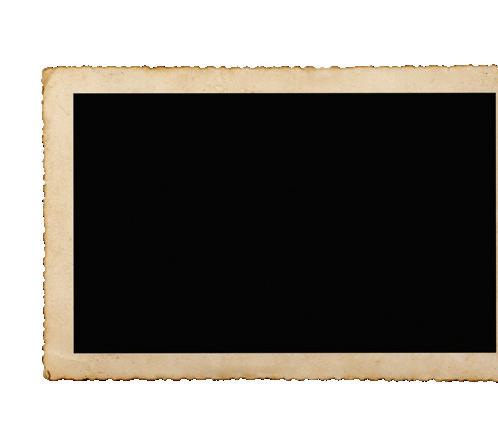
Larochelle later helped carry the caskets of his buddies onto a plane. Afterward, he sought medical attention; doctors determined the explo sion fractured his back while firing the rockets further contributed to his injuries.



The soldier was later sent home, given the Star of Military Valour, and then discharged from the military.
After Valour began advocating for Larochelle, a squadmate came forward and said the gun tur rets on nearby armoured vehicles had malfunc tioned at the time. This meant the soldier’s actions prevented the squad’s flank from being overrun.
Legion Magazine later published this new in formation and Larochelle’s story became widely known.
Coun. Jamey Logan thanked Thomson for his presentation.
“The story, I’m blown away by how amazing these people are and what they do for our coun try. It’s unbelievable,” he said. “It puts everything in perspective, especially with what’s going on in the world right now.”
Proud to ser ve those who served our country
MOOSEJAWEXPRESS.COM ✦ REMEMBRANCE DAY ✦ NOVEMBER 2022 • PAGE 25
Talk to us about making the Chateau your new place to call home. 306-693-2323 | ChateauStMichaels.com
November 1939, The Fracas on Main Street; The Fracas Five at Dieppe Raid, August 19, 1942

The name, ‘Private S-C’ represents a real person. The name has been removed to protect family pri vacy. In this researcher’s opinion, Private S-C had poor legal Counsel.

On the night of Saturday, November 4, 1939 there was a major Fracas in Moose Jaw between Moose Jaw soldiers from the South Saskatchewan Regiment, posted in Weyburn; soldiers of the 77th Field Battery and City of Moose Jaw Police.
The Fracas grew out of animosity between a few 77th Field Battery, 3rd Field Regiment, Roy al Canadian Artillery solders from the West-Side of Moose Jaw and “East-Side” Moose Jaw men who had enlisted in the South Saskatchewan Regiment. Based on their sequential Regimental Numbers, the SSR soldiers in question, were all buddies and had joined together at the same time.
The ‘East-Siders’ had once attended Prince Arthur School. Before the Fracas Prince Arthur School had honoured them for joining the Army.
Main Street was the ‘Line of Demarcation’ be tween East and West, Moose Jaw.
The 77th Field Battery mobilized in 1939 and included many local men from the King’s Own Rifles of Canada (MG) Militia. They had finished early training in Moose Jaw and were on leave. The South Saskatchewan Regiment soldiers were based at Weyburn. They were home on their first leave after extensive training.
Animosity, lots of beer and an ‘ignition source’ could result in trouble – and it did.
Regular drinking age was twenty-one but anyone in uniform could drink at age 18. One as sumes beer was consumed.
The animosity overflowed in the vicinity of Main Street, Manitoba Street and River Street.
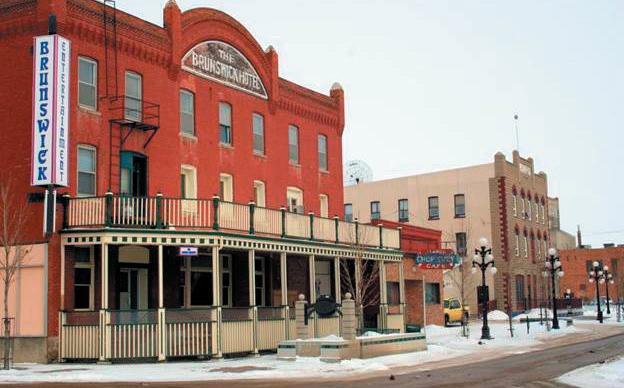
The ‘ignition source’ was probably Gun ner Earl K. Treadwell, of the 77th Field Battery, R.C.A. He was acting in the capacity of ‘Service Police’ (Military Police) and responded to a com plaint.

The Fracas Began
It was a wild and crazy event at Main and Manitoba Street. When the dust settle the EastSide SSR solders were arrested.
The Moose Jaw Times Herald reported: “Private S-C was one of five soldiers taken into custody as the result of a brawl that occurred on the corner of Main Street and Manitoba Street on the night of Saturday, November 4, 1939. The others involved were Joseph Yaschuk, John McAlpine, Clarence Ashworth, Reginald Pollard and Donald Hill. They were alleged to have ob structed police officers in the execution of their duty.”
Of this group, and as the Court Case shows, Private S-C seems to have been singled out to take the punishment. In an odd twist of fate, he
Compiled by Richard Dowson
faired the best of the SSR soldiers involved.
The City Police told the South Saskatchewan Regiment Commanding Officer he could take the men back to Weyburn. He declined, saying he had no place to keep them. They remained in jail until the court case was heard on November 15, 1939.
Fracas on Main Street – In Court
The 77th Field Battery Go to England
While the Fracas was being sorted out the solders of the 77th Field Battery, 3rd Field Regi ment, Royal Canadian Artillery were quietly, and under the cover of darkness, marched down to the CPR Station, put on the train and sent to Hal ifax where they boarded a ship to the UK. Out of sight, out of mind.
Yaschuk, John McAlpine, Clarence Ashworth, Reginald Pollard and Donald Hill. He actually listed six men and other testimony showed Pri vate S-C was not there.
Gunner Earl K. Treadwell continued to testi fy and described the November 15, 1940 ‘Fight’. “They approached him and started to shout and swear at him. Gunner Treadwell declared. Then he stated they apparently picked out one of their number to “knock the can off me.” The witness asserted that he did not know if the man picked out had struck him first or not he just re membered lashing out and the fight had started.”
It seems convenient that Gunner Treadwell didn’t remember who threw the first punch. This could be interpreted as him throwing the first punch.
The report continues: “After a short time his opponent had suggested they stop fighting and he dropped his hands and started to walk away. With that, according to Treadwell, someone had dropped on his back and knocked him to the ground and he was dazed. The City Police ar rived on the scene at that point.”
The Moose Jaw Times Herald continues.
Courthouse, November 15, 1939 Court was convened on November 15, 1939 to resolve the problem of who did what to whom during the Fracas on Main Street. The Magis trate was local lawyer Guy Richard Trethewey. Magistrate Trethewey and his wife Annie lived their entire adult life in Moose Jaw. Many Moose Jaw residents got to meet the Magistrate.
Trial
The Moose Jaw Times Herald reported from Court and recorded Gunner Earl K. Treadwell testimony:
“… on the evening of Saturday November 4, 1939 as a military policeman. He had received a complaint at 9:30 PM of a disturbance being created by members of the South Saskatchewan Regiment in a downtown café. He had entered the café to warn the members of the S.S.R. to be quiet and recognized ‘Private S-C’ and Reginald “Stub” Pollard (East-Side Moose Jaw boys) in the group supposed to have been creating the dis turbance. He had warned them to be quiet.”
First Clue to the Ignition Source for the Fracas – Gunner Treadwell
Gunner Treadwell recognized ‘Private S-C’ and Reginald “Snub” Pollard because he knew them from growing up in Moose Jaw. Gunner Treadwell was probably a ‘West-Side’ boy.
The Moose Jaw Times Herald report contin ued:
“Later in the evening Gunner Treadwell tes tified he was talking with some friends on the corner of Main Street and Manitoba Street East when he was accosted by the same group of five men who he had seen earlier in the café.”
The ‘five men’ were: Privates S-C, Joseph
“According to the witness there was a crowd of between 40 and 50 persons attracted to the brawl. He (Gunner Treadwell) declared that he could not be sure that Private S-C had taken part in the fight.”
This is important. There seems to have been a desire to single out Private S-C who was de scribed as a ‘Youth’, so a young guy. Seems they were out to get Private S-C. At some point he may have been the most ‘vocal’ of the group.
The report continues:
“Conducting the defence, Don Morrison called as his first witness Reginald “Stubby” Pol lard. He testified that he had been among the five soldiers in the café when they were warned to be quiet by Gunner Treadwell. He stated defi nitely that Private S-C was not among the band of soldiers from the S.S.R. that was in the café at the time. Pollard added that Treadwell had approached the S.S.R. soldiers in the café and without any warning had hit Yaschuk across the mouth, ordering him to be quiet. The group of S.S.R. soldiers had met Private S-C later in the evening, Pollard declared, but he could not say whether Private S-C had taken any part in the
PAGE 26 • MOOSEJAWEXPRESS.COM ✦ REMEMBRANCE DAY ✦ NOVEMBER 2022
Beer from the Brunswick may have played a role.
This old Post Card illustrates the location of the Fracas.
Taken Prisoner by Germans at Dieppe, August 19, 2022. Soldiers Unknown. Maybe Clarence Ashworth? (Credit the Saskatchewan Military Museum)
brawl. It was not a fight, according to Pollard, ‘just a lot of pushing around’.”
At this point in the Court Proceedings, Pri vate S-C should have been released from custo dy and sent back to his Unit. He wasn’t.
More testimony:
“A second witness for the prosecution was Mrs. William Hogarth. She testified that the ac cused Private S-C had been in the company of herself, her husband and several other persons for the greater part of the evening from 8:30 to 10:40 o’clock, Saturday night.”
This was confirmation of what Pollard had stated. Private S-C should have been released. He wasn’t.
Conclusion of Fracas on Main Street
The Fracas Five and the Hell of Dieppe, Au gust 19, 1942
Private S-C was just a kid; a ‘Youth’, at the time.
The Moose Jaw Times Herald was an after noon paper so they went to press before the trial was concluded on November 15, 1939.
The next day, Thursday, November 16, 1939 the Times ran these headlines:
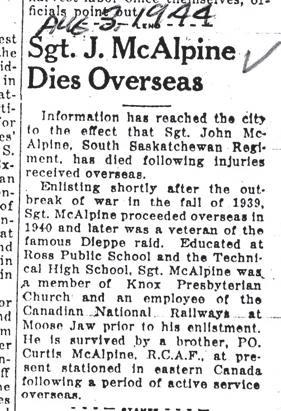
“Private C-S Was Given Fine and Jail Term on Wednesday”
“Local Youth Admitted He Escaped from Police and Got Two Months”
All things considered, it seems to have been a very harsh sentence for a ‘Youth’. His exact age is not known, but in those days an Adult was age sixteen and older and a Juvenile was under age 16. He was probably only 18-years-of-age.
The Times Herald reported:
“Convicted in City Police Court Wednesday on a charge of causing a disturbance on Main Street and pleading guilty to a second charge of escaping lawful custody, Private S-C, local youth who has enlisted in the South Saskatch ewan Regiment at Weyburn, was fined $15.00 and costs with the alternative of 20 days, in jail on the first count and an additional two months in jail on the second charge. Magistrate G. R. Trethewey refused defence counsel Don Morri son’s appeal to make the sentences concurrent.”
Magistrate G. R. Trethewey was a tough old buzzard. None of the evidence pointed to Pri vate S-C. I think he just pleaded guilty to finish the event and get the other SSR solders off of any charges. And, in fact, Private S-C told his coun sel he wanted a speedy trial and entered guilty pleas to the charge of escaping custody.
Private S-C pleaded not guilty to the charge of causing a disturbance but Magistrate G. R.
Trethewey found him guilty of the charge, even though the evidence showed he was not there.
The crown Prosecutor was LeRoy Johnson, KC.
The Fracas lasted a long time and, as one would expect, attracted many onlookers. The City of Moose Jaw Police Force suffered the most injuries. Someone smacked Sub-Inspector J. Hendry over the head with an object and he was confined to hospital.
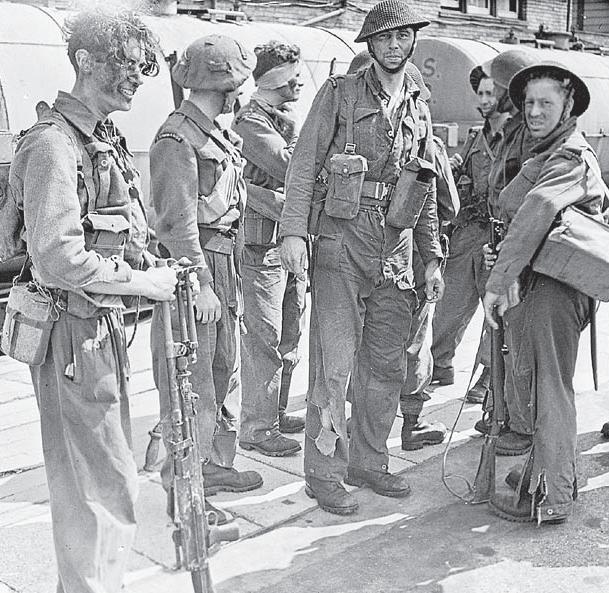
The Fracas Five – The Times Reported “Other five soldiers of the S.S.R. involved in the fracas and who are alleged to have obstruct ed police officers in the execution of their duty were: Joseph Yaschuk, John McAlpine, Clarence Ashworth, Reginald Pollard and Donald Hill. They have been remanded for eight days until Wednesday, November 22, 1939.”
Charges?
After the remand expired the men returned to their Unit.
What Became of the Fracas Five?

Private S-C, Reg. #12376
Private S-C did the best of the group. He left the army in early 1940 – just when the econo my was opening up – an economy that had been dead for ten years. While the NAZIs were trying to kill the other lads overseas he was able to find work and did quite well.
The Fracas Five Joseph Yaschuk, John McAlpine, Clarence Ashworth, Reginald Pollard
and Donald Hill went overseas. They all partic ipated in Operation Jubilee, the Raid on Dieppe on August 19, 1942.
Dieppe
A/L/Cpl. Clarence Ashworth, L12368 was capture on the Dieppe Raid and became a Pris oner of War. He was released on April 28, 1945 after 3 years as a POW.
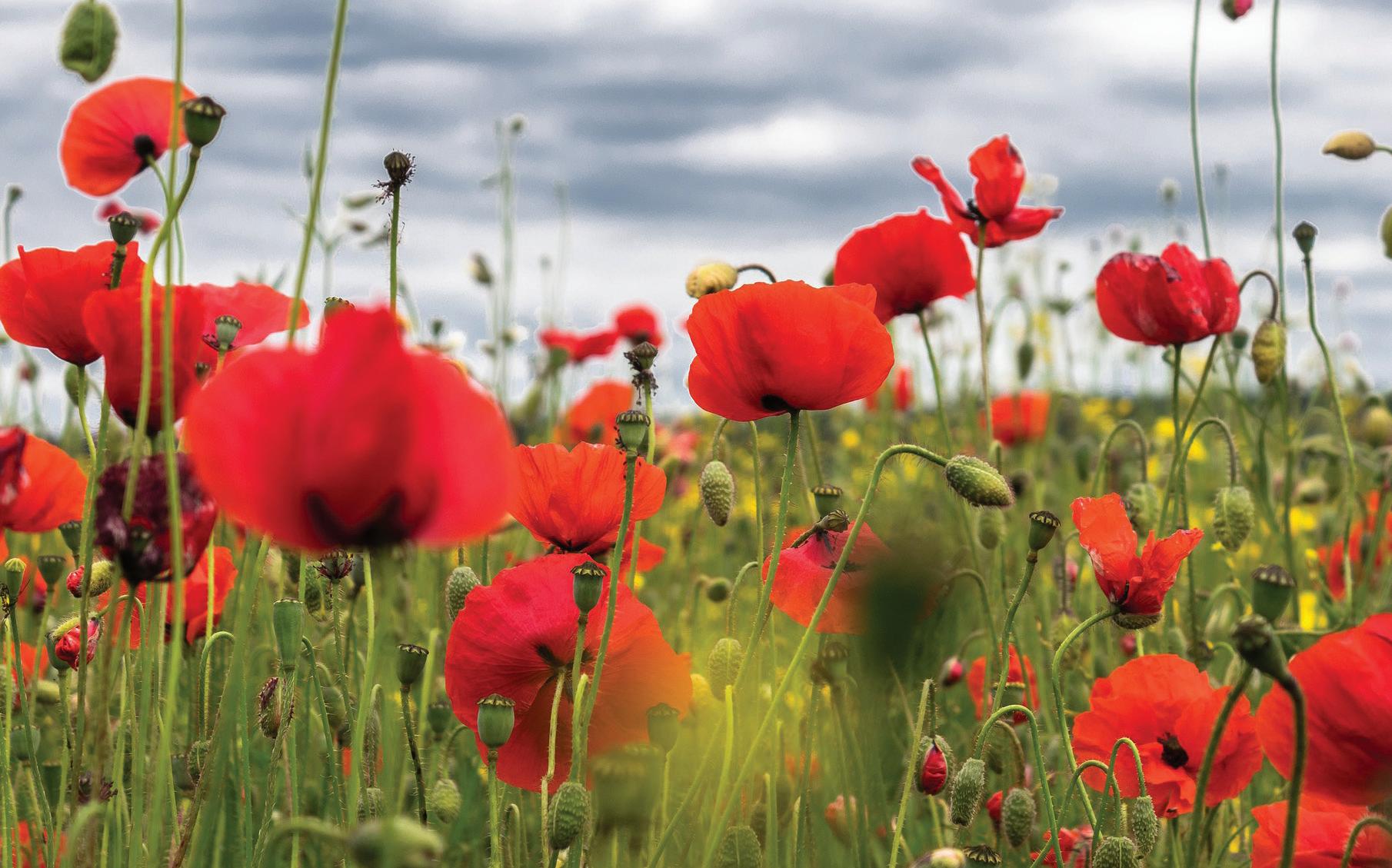

Private Don Hill, L12357, was on the Dieppe Raid. Was unhurt and returned to his Unit. It is assumed Don Hill came back to Moose Jaw after the War.
A/Cpl. John B. McAlpine, L12366, was not injured in Dieppe and made it back to his Unit. Unfortunately, the experience got the better of him and he began to have trouble with his legs. He was transferred to the Canadian Army Postal Service.
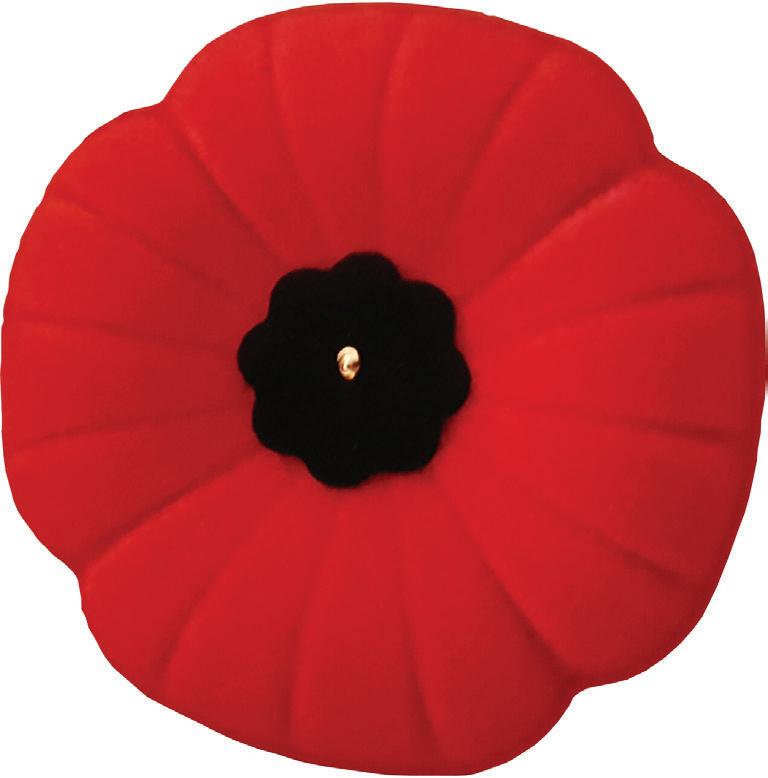
McAlpine died July 28, 1944. He was liv ing in London and was leaning on the balcony railing when it gave way and he plunged to his death.
Sergeant Reginald Pollard, L12367 was on the Dieppe Raid. He survived and returned to his Unit. He was with the SSRs for the remainder of the war and returned home.
A/L/Cpl (later Sergeant) Joseph Yaschuck, L12369, was wounded in the Dieppe Raid. He made it back to England and eventually returned to his Unit. He went with the SSRs to France in July 1944 and fought, without injury, until the end of the war.
Gunner Earl K. Treadwell – Seems to have survived the War. There is no other information. The following are Photos of men returning to England after the Dieppe Raid.
Stepping off an Landing Craft onto the stony beach of Dieppe and having NAZIs try to kill you makes the Fracas on Main Street insignif icant. More than 900 Canadians were killed at Dieppe, 80-years-ago.
MOOSEJAWEXPRESS.COM ✦ REMEMBRANCE DAY ✦ NOVEMBER 2022 • PAGE 27
We will Remember Them... we fix everything 22 lancaster rd, moose jaw, Sk | 306-694-4644 | moosejawtruckshop@sasktel.net Heritage Insurance We Take the Hassle Out of Buying Insurance...Guaranteed. 306-693-7640 The bravest are surely those who had the clearest vision of what was before them, glory and death alike, and yet went out to meet it. WE REMEMBER
Grandpa Parker and World War One
By Richard Dowson


Sunday, April 17, 2022 marks the 105th anniver sary of the Battle of Vimy Ridge. My Grandfather, Walter J. Parker was there. He shouldn’t have been, but he was there.

In fact, none of them should have been there. World War One should have never happened. It was a war among ruling cousins and relatives –wealthy Kings, Czars and Hanger-on.





They should have put the Royalty of Europe a big gymnasium somewhere in Hungary and told to fight among themselves.
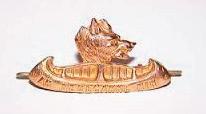

Instead, Canadians, British and Common wealth soldiers and volunteers went to their death doing their duty for King and Country. They left their homes on the Prairies, in small towns and lumber camps and went off to a long, meaning less, forgotten war.
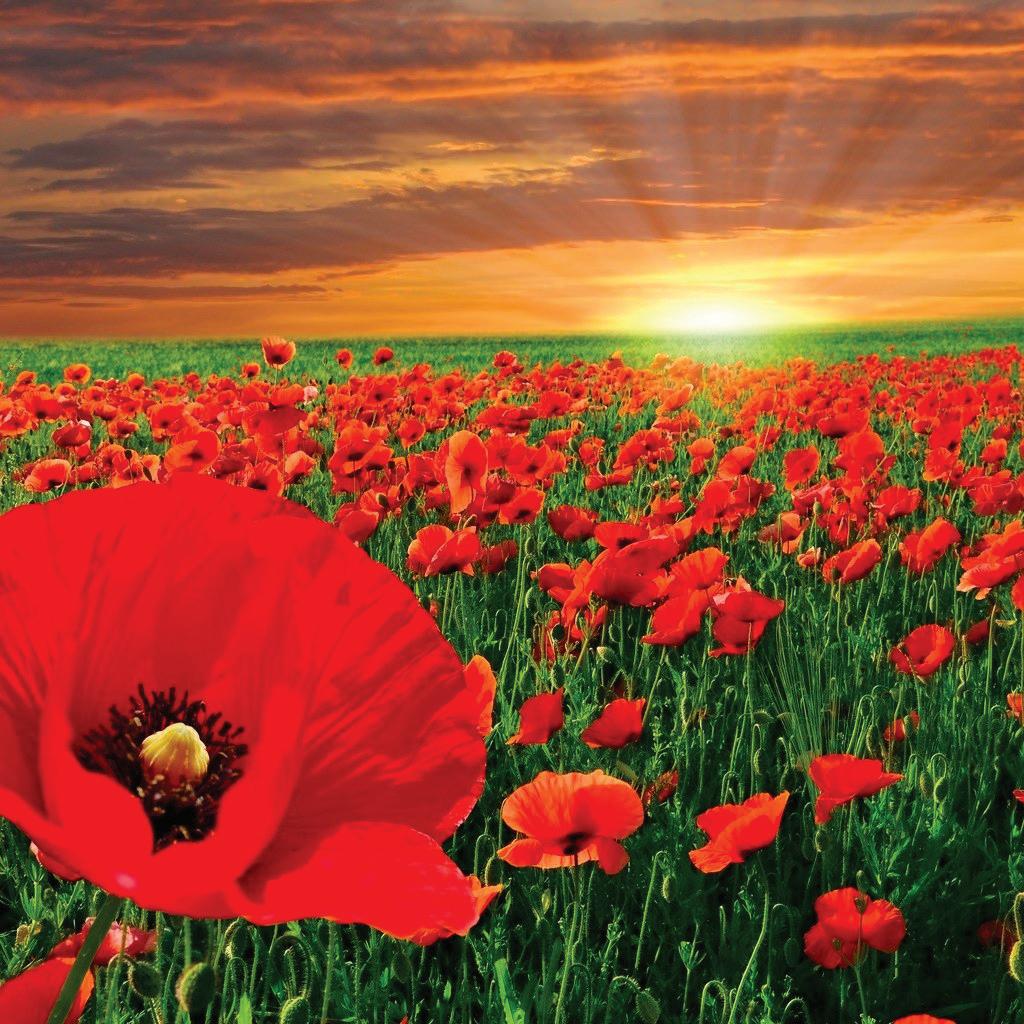
My Grandfather was a proud member to the 23rd Regiment, Northern Fusiliers Militia in Parry Sound. He’d gone to Niagara-on-the-Lake many times for summer drills. He even put his wedding on hold in 1910 to complete summer training.
My Grandparents were living in Burks Falls, Ontario when he signed up for regular service in January 1916. Lt. Col. Arthur from Powassan was putting together a Battalion. They were the 162 Battalion, all proud to be “Northern Timber Wolves”.
By May they were camped in a field at Sun
dridge, Ontario practicing to be soldiers. By June 1916 they were in Niagara-on-the-Lake practic ing while his wife and four children struggled to make ends meet, living with a brother in Grims by.
In November 1916 Grandpa sailed for En gland and once there the Battalion was split up and became reinforcements for the thousands who had already been killed. They never knew that.
Because of his age, Grandpa Parker was as signed to the No. 3 Pioneer Battalion as a team ster. He went to France in February 1917 and was at Vimy Ridge on April 17, 1917 – building roads, hauling ammunition, digging trenches, getting shelled, hauling bodies – hating every minute.
By August 1917 he was at Hill 70 near Lens.

PAGE 28 • MOOSEJAWEXPRESS.COM ✦ REMEMBRANCE DAY ✦ NOVEMBER 2022
The 23rd Regiment badge was a wolf in a canoe.
270 Caribou St. W. • 306.693.0606.www.culligan.com “For All Your Tire, Battery & Automotive Needs” Mon - Fri. 8:00 a.m. - 5:30 p.m. - Sat. 8:00 a.m. - 2:00 p.m. AFTER HOURS 306-631-5899
the freedom that they fought for, and the country grand they wrought for, is their
today, and for aye."
Canadian soldiers resting near the German lines during
"But
monument
Thomas Dunn English
From there it was to a rehabil itation hospital in Kent, England. He was back in Canada the follow ing summer.
Life never got easy for Grandpa Parker. He never had a steady job and was sick and often in the Chris tie Street Veterans’ Hospital in To ronto, where he died in 1937.





War is a terrible thing and the bastards that start them rarely pay the price. My mother was his oldest child. She was 8 and wrote him reg ularly. He wrote her. The following
is a letter he wrote my Mom on De cember 14, 1917 from his English hospital.




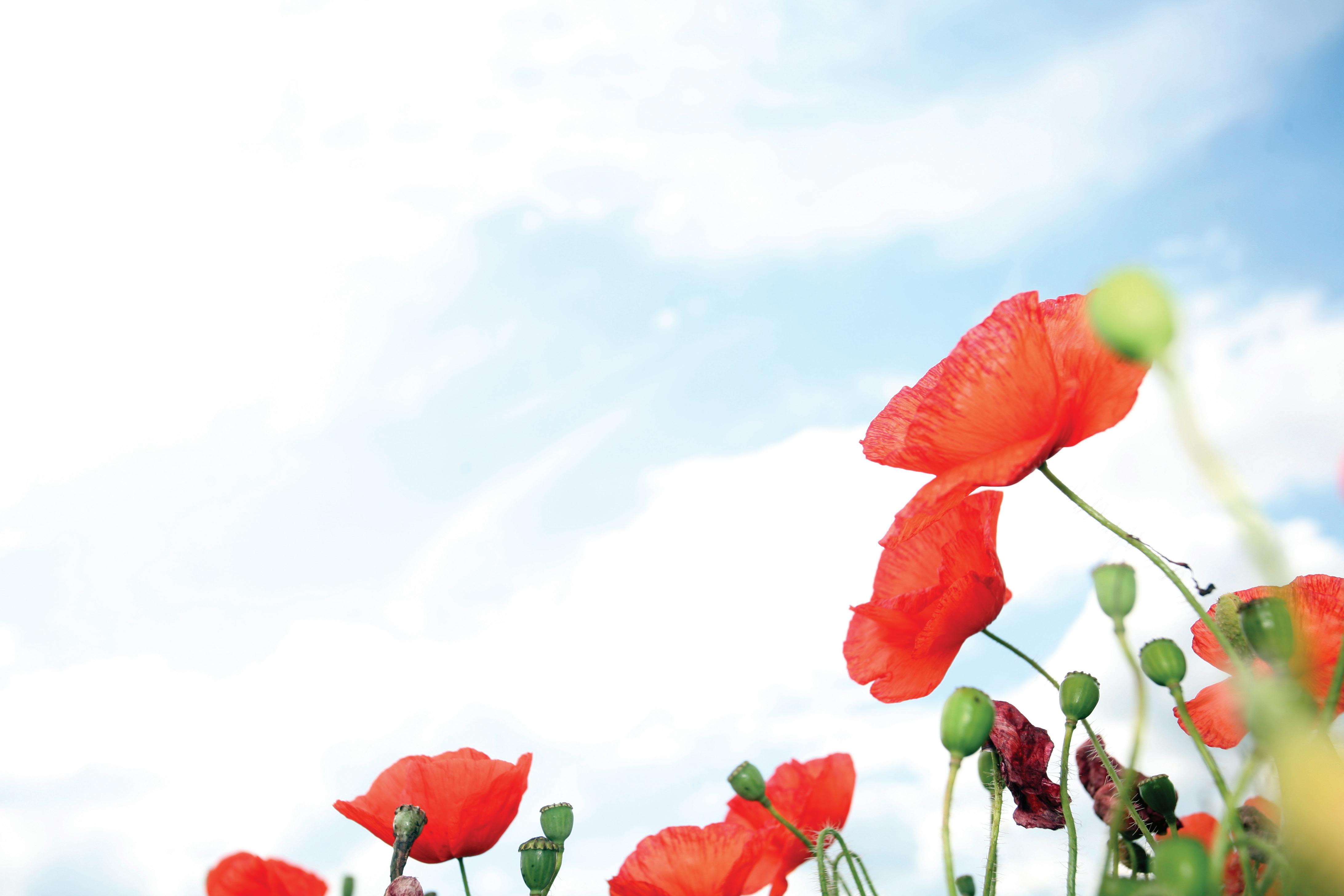

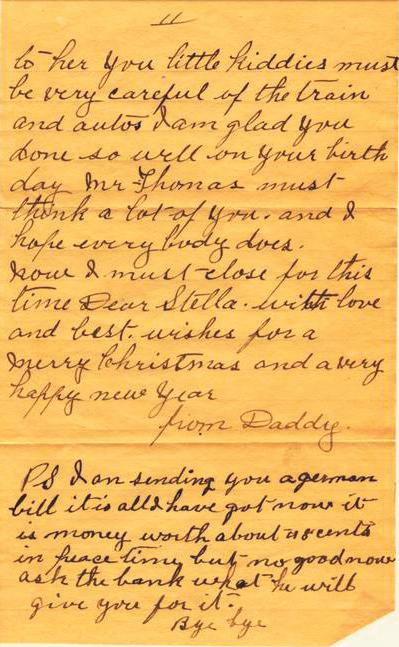
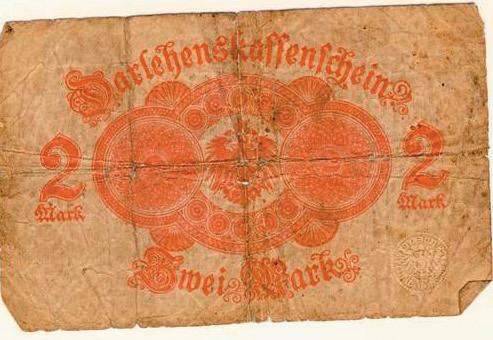
Gallipoli – Australia’s Experience – ANZAC Day April 25th
The following is the song, “The Band Played Waltzing Manila”, written by Eric Bogle, a Scot who relocated to Australia. Gallipoli was Australia’s “Vimy Ridge”. The expe rience was not unlike what ‘they’ all went through. My favorite anti-war song.
‘Daddy’
My mother was born in No vember 1910. She learned to read and write at a very young age.
My mother never spent the 2 Marks note. She gave me the letter and note in the
MOOSEJAWEXPRESS.COM ✦ REMEMBRANCE DAY ✦ NOVEMBER 2022 • PAGE 29
Photo taken at Grimsby, Ontario, fall 1916. My mother is standing closest to her Dad or
as her and her sisters called him.
4 Highland Road, Moose Jaw 306-692-7255 Brad & Brennen Duncan, Owner Operators PO Box 1024, 1224 Ominica St E Moose Jaw, SK S6H 4P8 Phone: (306) 692-5151 | Fax: (306) 691-0818
Logistics officer ensured military functioned at sea and on the ground
A military wouldn’t function if it didn’t have af ter logistics officers like Sue Knox, whose work during a 29-year career ensured that sailors pos sessed enough supplies and soldiers had a base of operations for war.
One of the first deployments for the navy lieutenant-commander was to Winnipeg in 1997 to support the military’s response to “The Flood of the Century.”

“That was busy. I never slept for three-andhalf days, and then my boss put me to ground in his bunk because I wouldn’t go back to the bar racks,” Knox laughed.
The Canadian Forces put 80 boats and rough ly 300 sailors into the water within 72 hours of being called to Winnipeg. They were there for three weeks, removing families from inundated homes, helping farmers recover livestock and re building the dykes in Winnipeg.
Knox and others worked behind the scenes to support those boats and sailors.

A maintenance base was created to repair boats, re-fuel them and provide supplies. There was also an operations group overseeing the co-ordination of air, water and land activities.






















Even reservists and cadets lent a hand.












“It was huge,” she recalled. “Ours was only a small part of it.”
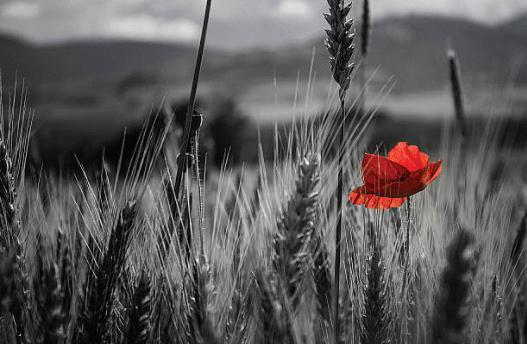
 By Jason G. Antonio
By Jason G. Antonio
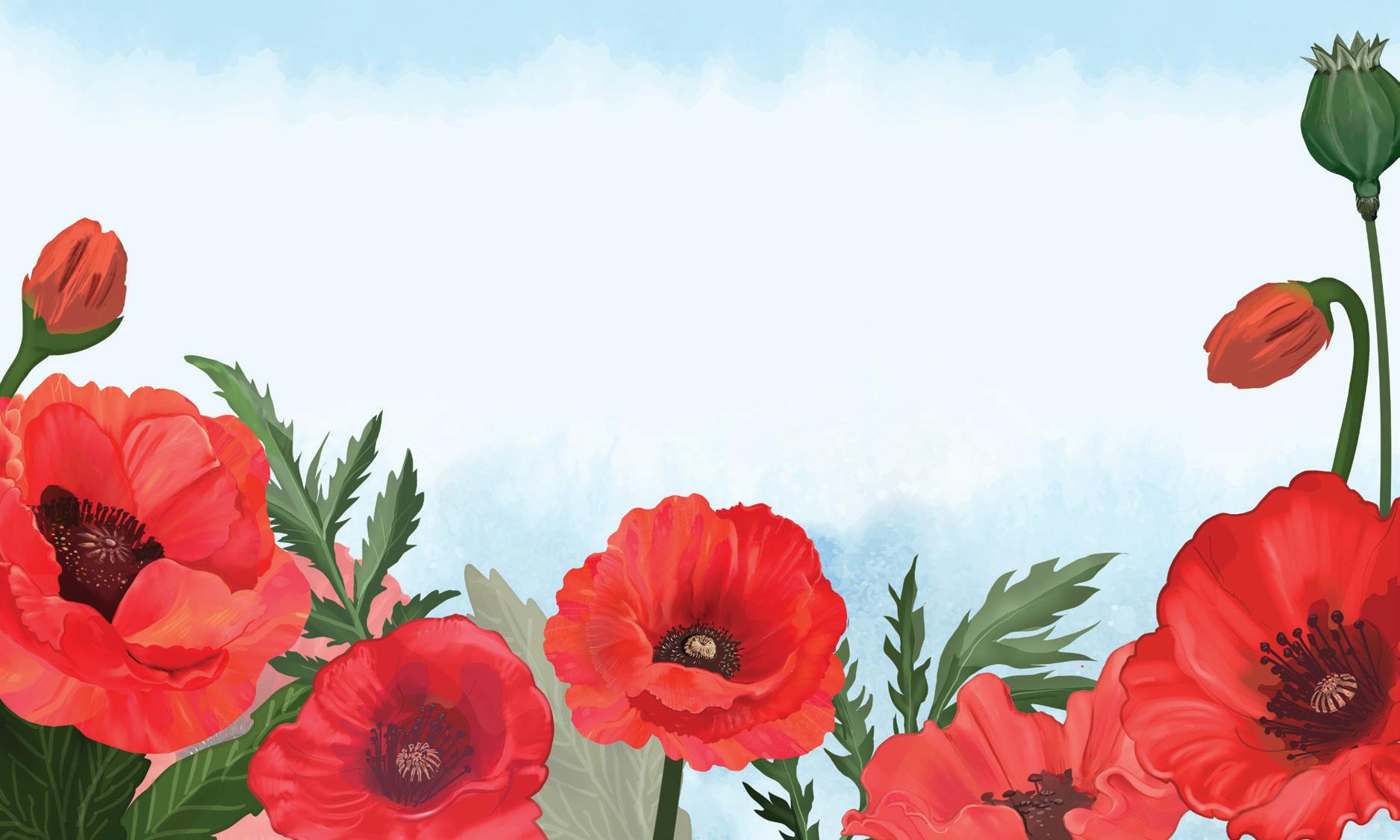




A start in Moose Jaw

Knox started her military career as a sum mer student in 1974 before joining as a civilian in 1979. She handled ground maintenance, main taining flight records of Tutor aircraft — includ ing the Snowbirds — and finishing as a clerk at 15 Wing in Moose Jaw.
She joined the military in December 1988, underwent training, and served on several bases and ships during the next decade.
Knox was posted to CFB Esquimalt for base supply in 1998. She later supported the RCMP in 1999 when they dealt with Chinese refugees arriving in British Columbia, while she provided logistics help to the supply ship HMCS Protec teur during a United Nations operation in East Timor.

Touring the Middle East
After asking for an out-of-country tour, Knox was shipped to Israel in July 2000 for a year to support UN operations in the Golan Heights.
PAGE 30 • MOOSEJAWEXPRESS.COM ✦ REMEMBRANCE DAY ✦ NOVEMBER 2022 1205 Athabasca Street East • Phone 306.692.1242 Evan’s Florist 306-692-1881 | 17 High St W | Moose Jaw, SK We Remember To those who fought valiantly for our freedom we extend our sincere gratitude and respect. 1801 Meier Dr. | Moose Jaw | 306-694-4744 of moose jaw 140 Main Street North 306.694.5766 May We Never Forget
The Canadians’ headquarters was in Syria, while Knox’s team was stationed on the Israeli
Sue Knox stands in front of a LAV III light armoured vehicle in Afghanistan in 2002. Photo courtesy Sue Knox
Lt.-Cdr. Sue Knox poses in her uniform as the executive officer for Maritime Forces Pacific Headquarters in Esqui malt, B.C., around 2008. Photo courtesy Sue Knox
side
“I loved it. It was great,” she said. “(It was a) super opportunity to meet the locals and gain a great deal of historical knowledge, both from the Israeli side as well as the Syrian side.”
The group took historical tours of Israel — learning extensively about the Holocaust — along with several off-duty tours of Jordan, Syria, and Egypt.
Knox considered those places to be oncein-a-lifetime opportunities that she would likely never experience as a civilian tourist.
“It was all just amazing. Every weekend we had off, we went somewhere,” she added.

War on Terror
Knox returned to Kingston, Ont., in 2001, and several months later, 9/11 happened. She was attending a terrorist briefing that morning when the planes struck New York and Washington.
Within six weeks, she deployed to an air base in Tampa Bay, Florida, to provide logistics and financial support for the Canadians preparing to enter Afghanistan. The NATO-led operation would be run from the United States until the al lies set up bases in the southeast Asian country.
Knox’s role was to pay people and create contracts for Canadians working in Tampa Bay. About 13 Canucks were there to establish oper ations, while three to five people trickled south regularly afterward and took on more responsi bilities as required.
From Tampa Bay — a six-month tour — the logistics team supported the first battalion of Ca nadian soldiers in Afghanistan and ensured they

were fed, paid, housed and equipped.
In-theatre support
Knox then travelled to Afghanistan in April 2002 for a four-month tour to establish two Ca nadian camps in Kabul. She also provided trans portation, contracting and logistics support for the theatre activation team (TAT) commander.
“Hectic. It was all hectic,” she laughed.

A group of 12 people started the logistics contracting, determined who was who in the city, and performed the necessary engineering to cre ate the base — including disposing of bombs be fore construction began.
Other supports included handling food, wa ter, sewage disposal, and installing a gravel foun dation for the base in a field.


“And because the Russians had been there be fore, they just packed up and left their stuff there,” Knox continued. “So, there was mine clearing to be done (and) there was removal of old mil itary and armoured vehicle pieces that had been bombed out.”
Knox always felt on edge — and always on guard — because she never knew who was friend ly or who was Taliban, considering no one wore uniforms.

The 13 TAT members always travelled to gether because of security issues and the lack of infantry protection. However, security forces began providing cover once they established the first camp.

“It was very hot. The average temperature was 60 C. We had no air conditioning and no refriger ation when we got there, so it was a little tough,” she chuckled.
A rewarding career
Knox returned to Canada around September 2002 and was eventually posted back to the West Coast. She finished her career as executive officer for Maritime Forces Pacific Headquarters.
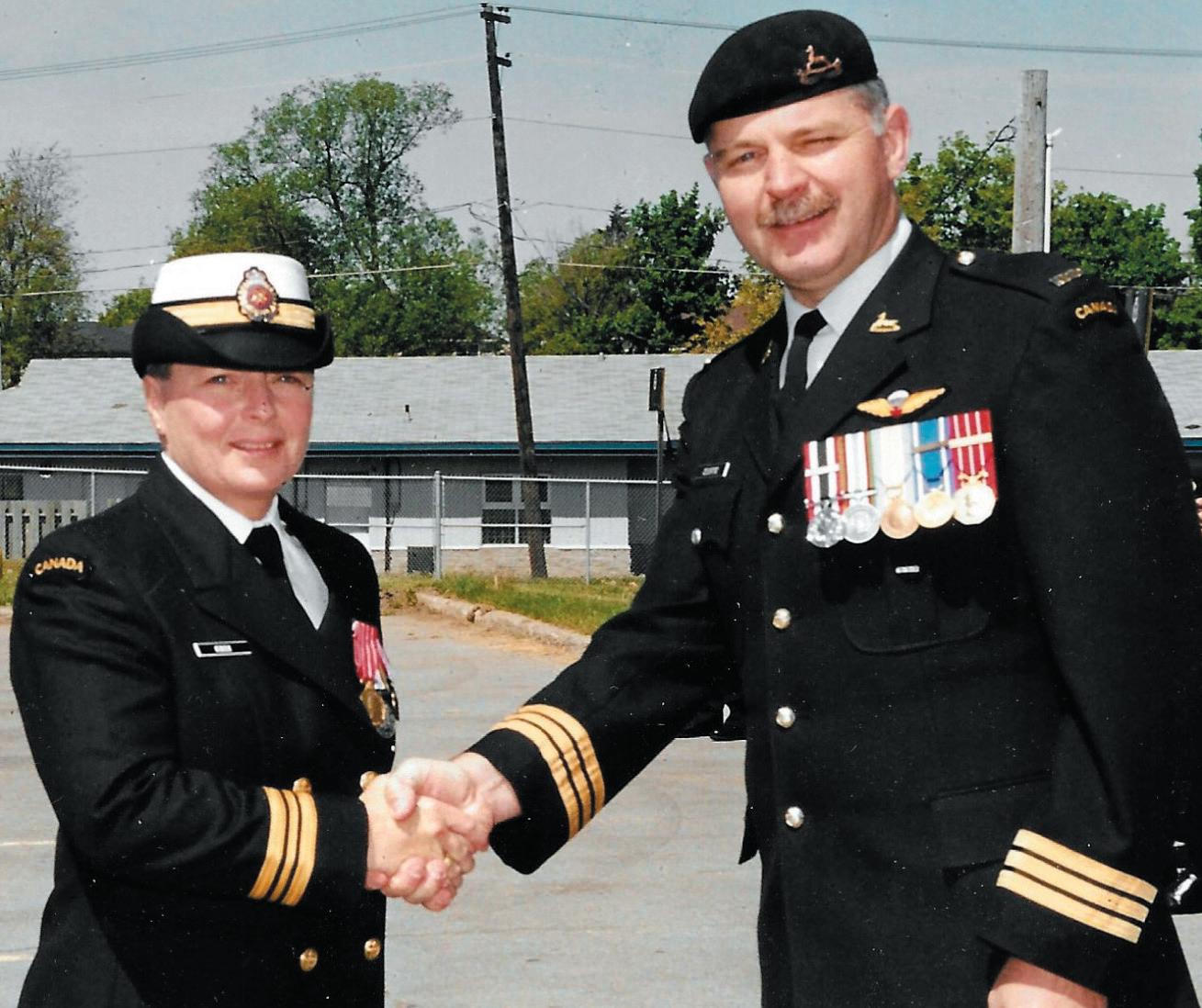
“It was all very rewarding. I would not trade the time I spent in the military to go back and do anything else,” she said, noting she enjoyed mak ing friends with people worldwide. “It gave me a great opportunity to get out of Moose Jaw and do something that was physically, mentally and financially rewarding.
“And now is my opportunity to give back through my service through the legion.”
MOOSEJAWEXPRESS.COM ✦ REMEMBRANCE DAY ✦ NOVEMBER 2022 • PAGE 31 AND AWAY GOTROUBLES DOWN THE DRAIN 306-694-1688 RESIDENTIAL • COMMERCIAL • AGRICULTURAL O ce: 306.693.3751 Fax: 306.693.6880 Box 891, 961 High St W Moose Jaw, SK S6H 4P5 May we never Forget Moose Jaw’s Complete Auto Repair and Tire Source! 102 Manitoba St E | Moose Jaw, SK S6H 0A3 | 306-692-5717 #6-75 Highland Rd, Moose Jaw SK | 306-692-5588 | jerry.breti@svmrestore-moosejaw.ca Lest We Forget
of the border.
An officer presents Sue Knox with a medal in 2002 to recognize her work in Tampa Bay, Florida to support the Allied coalition as it entered Afghanistan after the terror ist attacks on Sept. 1, 2001. Photo courtesy Sue Knox
Dieppe, Verrières Ridge and the South Saskatchewan Regiment
Preamble: This research would not be possible without the Moose Jaw Library Archives, the Li brary and Archives Canada; the SSR Museum, the CVWM; the SVWM; projects begun by the late Bill Barry of Regina, and the posting of reference ma terial by ‘Picture Me’ on CVWM and the contribu tion of information by families of the fallen.
Dieppe Raid
August 19, 2022 will mark 80 years since Canadian soldiers participated in the Raid on Dieppe. I have previously written about my Un cle, Sergeant Alec Sinclair of the Royal Regiment of Canada, captured at Dieppe.
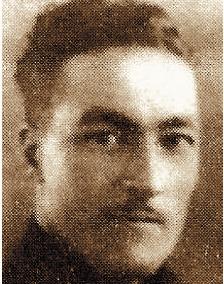
The South Saskatchewan Regiment was also played a major role in the Dieppe Raid. They suf fered many casualties.
The South Saskatchewan Regiment suffered significant casualties.


523 SSR men embarked on the Raid. 78 were killed, 3 died of their wounds, and 3 died as Pris oners of War for a total of 84 dead, which is 16% of the men who embarked.

Of those taken Prisoner, 24 were wounded and 65 were not wounded.
166 men were wounded. Total Fatal and Non-Fatal Casualties were 446.
268 men, wounded and not wounded re turned to the UK (51%) which means 49% of those who embarked for the Dieppe Raid did not return.
These figures are available at the SSR Muse um Website.
One of the lucky ones on the Dieppe Raid was Lance Corporal Norman Brinsdon, whose moth er lived at 1038 Athabasca Street East, Moose Jaw. The March 1942 Nominal Role shows Brinsdon, L/12717, was in A Company. His immediate of ficers were Captain J.R. Mather (Survived War) and Captain F.H. McDougall (Survived War).
In the following letter to his mother, part of which was reproduced in the Moose Jaw Times Herald, he tells of his experience on the Dieppe Raid.

Moose Jaw Times Herald
Friday, September, 25, 1942
Lance Corporal Brinsdon Writes of Dieppe “Lance Corporal Norman Brinsdon, South
By Richard Dowson
Saskatchewan Regiment writes to his mother, Mrs. Frank Brinsdon, 1038 Athabasca Street East, and records his reaction to the raid on Dieppe, August 19, 1942, in which he took part. In part the letter reads as follows:
“Our Division of the South Saskatchewan Regiment was the first to land and from that time until we were well on our way home it was like all hell let loose, but although we lost a lot of men we really gave Jerry the time of his life. I was quite jittery while the raid was on but kept a fairly cool head and got back without a scratch. We learned a lot on the raid and the next time we meet those rats we’ll give them a little extra for our pals who aren’t with us now. They were the bravest bunch I ever expect to see, and we sure won’t let them down. We were well taken care of when we got back and I am cooling down a bit although still shaken up a bit. That is only to be expected, being the first taste of battle I don’t think any of us were really scared, because we kept up a pretty cheerful conversation when there was a lull in the firing. The only thing that got us was seeing our men fall and that made us damn mad, but we know we can lick the Hun.”
Norm was born in England. He was the son of Frank and Elsie Brinsdon who moved to Canada after he was born. Like so many others, Norm bounced around near the end of the Great Depression. He was working at a gas station in Weyburn when he enlisted in 1940, hoping for a better life.


He was posted to the South Saskatchewan Regiment and trained in Weyburn and the Unit went overseas early in the war. Norman married Ivy Violet of Camberwell, Greater London, En gland, probably after 1942 and before June 1944.
(Credit SVWM)
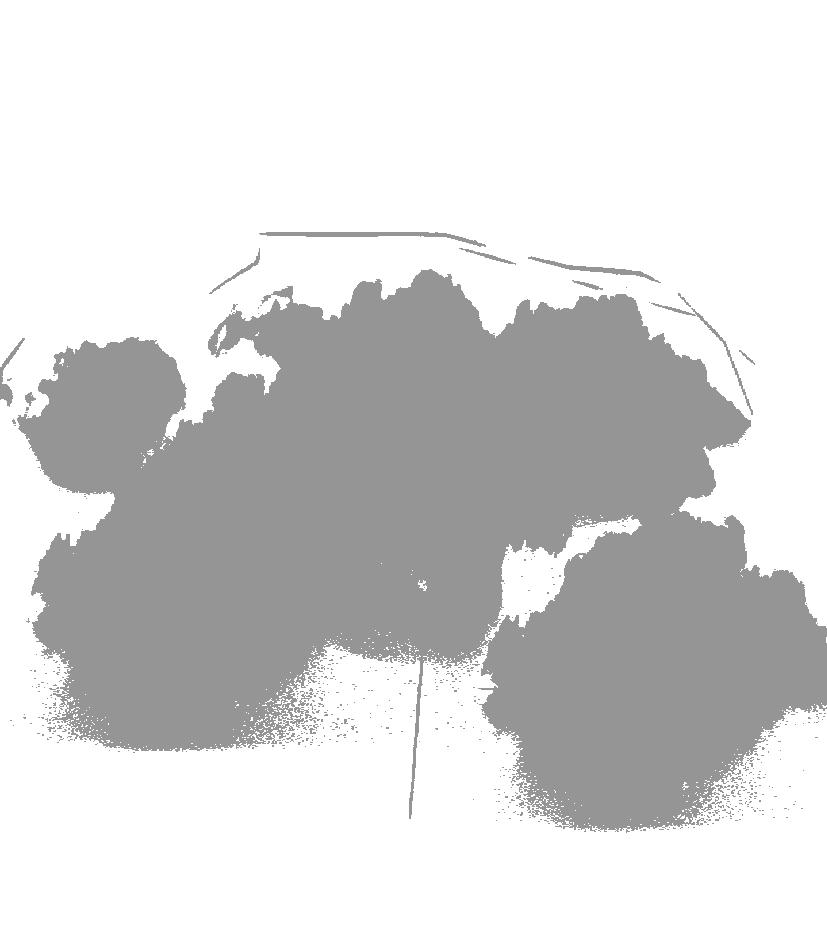
The SSR embarked for England on December 13, 1940.
There is more to Lance Corporal Norman Brin sdon’s story
Lance Corporal Norman Brindson and the SSRs remained in the UK for almost two years. They were a ‘back-up’ group. They landed in Nor mandy on July 8, 1944 as part of the 6th Brigade, 2nd Canadian Infantry Division.
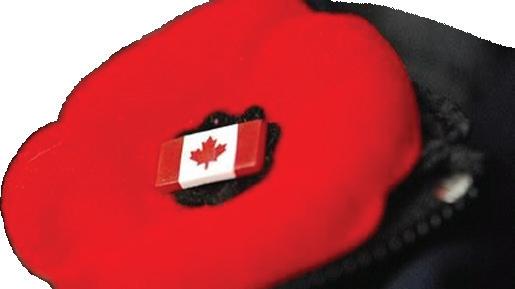
Their first major battle was at Verrières Ridge on July 20, 1944, the SSRs own Vimy Ridge.
The advance of the Canadian, British and Americans was slow through Normandy. Ger man troops tried to push them back. They were stuck near Caen and the Allies had to push the Germans back and advance onward to Germa ny. Verrières Ridge was part of that advance and would become the SSR’s bloodiest battle.
Verrières Ridge, about 8 m from Caen, is a long, open, unprotected, sloping grain field. The Germans were dug-in at the top. Part of the group of defenders were the The 12th SS Panzer Division, Hitlerjugend (Hitler Youth), Waffen SS Armoured Division. They were commanded by SS-Standartenführer Kurt Meyer, age 33, who had been an SS Member for 10 years. He was later convicted as a War Criminal after it was proven his men killed Canadian Prisoners of War.
There are arguments about the battle and preparations. It was a slaughter. Like the Dieppe Raid, Verrières Ridge was a disaster for the South Saskatchewan Regiment. Four Moose Jaw boys were among the 66 killed that day.
The SSRs were driven back. At night it was said that SS Tanks drove over the top area of the open Ridge preventing the rescue of wounded,
PAGE 32 • MOOSEJAWEXPRESS.COM ✦ REMEMBRANCE DAY ✦ NOVEMBER 2022 917 Bradley Street, Moose Jaw | (306) 693-3777 WE WILL NEVER FORGET WWW.BROWNSWRESTAURANTGROUP.COM
Lance Corporal Norman Brinsdon, 1038 Athabasca Street East, Moose Jaw
killing them.
Bill Barry (deceased), Regina Historian sum marizes it best on the Saskatchewan Virtual War Memorial website: Verrières Ridge – Saskatche wan Virtual War Memorial (svwm.ca)






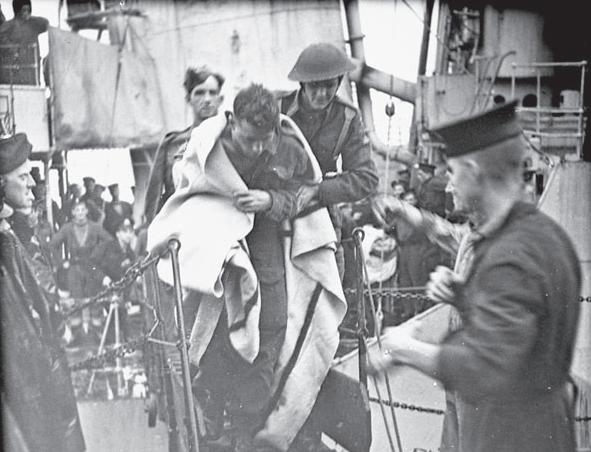
“The South Saskatchewan Regiment led the charge up the gentle slopes of the ridge between Caen and Falaise, but were forced to withdraw in disarray after a fierce enemy counterattack. It was the second bloodiest day of the war (after Dieppe) for the regiment which suffered 66 fatal casualties, 116 wounded and lost 26 prisoners.”

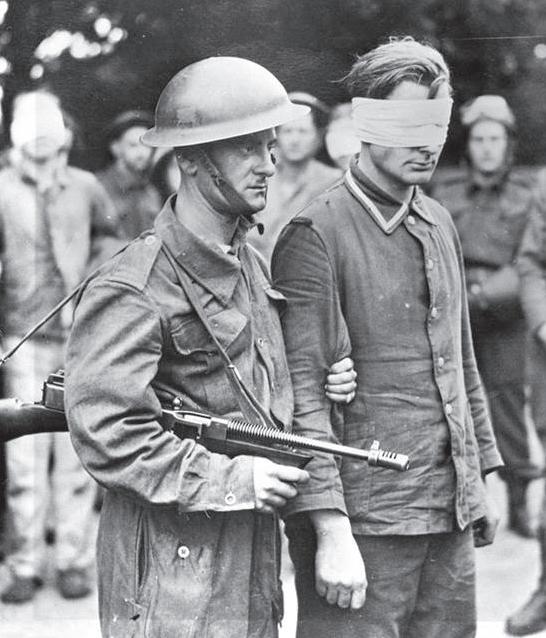 Bill Barry
Bill Barry

Moose Jaw Boys Who Died at Verrières Ridge Lance Corporal Norman Brinsdon, SSR, 1038 Athabasca Street East, Moose Jaw.
Private Clarence Ovilla Bourassa, L/12541, Age 30, Son of Tobaldo and Clara Bourassa; hus band of Hazel Grace Bourassa, of Moose Jaw, Sas katchewan.
Lieutenant Charles Douglas Grayson, Age 24, son of Charles Douglas, a barrister, and Ruth Mary (Humphries) Grayson of Moose Jaw. Charles had joined the RCAF and transferred to the Army.

Private Theodore
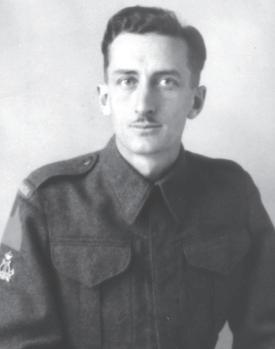
MOOSEJAWEXPRESS.COM ✦ REMEMBRANCE DAY ✦ NOVEMBER 2022 • PAGE 33 Greg Lawrence P vincial Milit y Li ison Let us remember the ser vice, courage and Lest We Forget Locally Owned and Operated268 Mulberry Lane • 306-693-4550
our
Remembering those who fought for
freedom and driving over wounded,
Dieppe Raid Photo Display
Ralph Mortenson, L/100513, age 20, son of Clifford F. and Alice Mortenson, of Moose Jaw, Saskatchewan.
(Credit SVWM Site)
(Credit SVWM Site)
Landing craft en route to Dieppe, France, during Op eration Jubilee, 19 August 1942. Library and Archives Canada # 3192395
Soldiers who took part in Operation JUBILEE, the raid on Dieppe, disembarking from a Royal Navy destroyer in England, 19 August 1942. Library and Archives Canada # 3378727
An unidentified Canadian soldier, who is armed with a Thompson machine gun, escorting a German prisoner who was captured during Operation JUBILEE, the Dieppe raid. England, 19 August 1942. Photo taken in England. Library and Archives Canada #3592340
Moose Jaw Times Herald
Verrières Ridge Memorial, MJ Story Verrières Ridge July 1944 20220614 03 file
The Old Harvard Trainer and #32 SFTS (RAF)
By Richard Dowson

As you drive onto the 15 Wing Base, Moose Jaw, you will see this T-6 Har vard Mk. IV, serial number RCAF 20456, gleefully resting on a plinth. Built by Canadian Car and Foundry in 1952, it was put on display after an illus trious career in the RCAF.

The North American Harvard Trainer, known as the Texan to Ameri cans, was a common sight in Moose Jaw when the Royal Air Force operated #32 Service Flying Training School during WW II. The Harvard provided ‘intermediate’ pilot training.
New Pilots got their wings after qualifying on the single engine Harvard or multi-engine trainers like the Cessna Crane and Avro Anson. Examples of all these aircraft are on display at the Moose Jaw Western Development Museum. The Museum’s Crane was used in Brandon.
Qualifying as a pilot on a single engine Harvard usually meant the pilot went on to advanced ‘Fighter’ training in the UK. Getting your Wings on a multi-engine aircraft usually meant you went on to the UK for advanced training and the to a Heavy Conversion Unit where they became a Heavy Bomber pilot.

(The British had a thing about naming aircraft after education insti tutes. Like the ‘Yale’, the predecessor of the ‘Harvard’. There was also the Airspeed Oxford.)


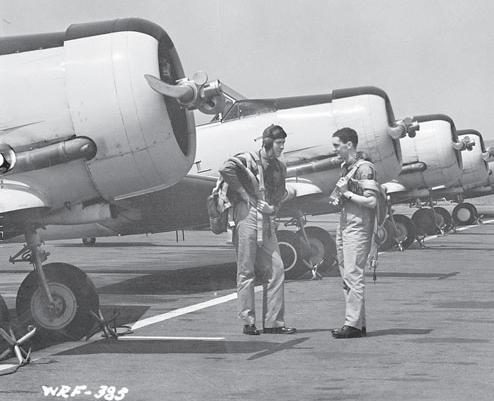
Three Steps for Wartime Pilot Training in Canada
The steps were, Initial Training, which was ‘sort of like’ high school all over again. If you qualitied for Pilot Training you were posted to an Elementary Flying Training School like the ones in Regina (RCAF), High River (RCAF), Assiniboia (RAF), Caronport (RAF) or one of many more.
Elementary Flying Training School Aircraft
EFTS was centered around the de Havilland Tiger Moth, a single en gine bi-plane. Training was usually ten hours of dual control, then the fledgling pilot soloed. That was followed by another forty hours of Tiger Moth training. Upon graduation the ‘fledgling’ went on to a Service Flying Training School.
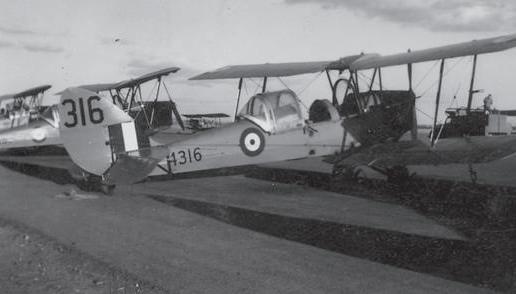
PAGE 34 • MOOSEJAWEXPRESS.COM ✦ REMEMBRANCE DAY ✦ NOVEMBER 2022 Please take time to remember the men & women who fought for our Freedom. LEST WE FORGET SUCCESS OFFICE SYSTEMS Moose Jaw : 693–9444 Toll Free: 1 800-667 8173 tkennedy@successos com • www successos com
KENNEDY Sales Manager
TED
Instructor and student with North American Harvard II aircraft of No.2 Service Flying Training School (S.F.T.S.) (Royal Canadian Airforce Schools and Training Units), R.C.A.F., Uplands, Ontario, Canada. July 1941. LAC Photo 3521068
Credit the Al Seward Collection
Unidentified pilots, with a North American Harvard II aircraft in the background, who took part in a Single Engine Bombing Competition at No.31 Service Flying Training School (S.F.T.S.) (Royal Canadian Airforce Schools and Training Units), Royal Canadian Air Force, Kingston, Ontario, Canada, 13 July 1943. LAC # 3589661
This particular Tiger Moth I, Model D.H.82C, # 4316 was taken on strength 7 December 1940 at No. 5 Elementary Flying Training School, High River, Alberta. It was Stuck off Strength on 25 August 1943 and was scrapped. Credit the ‘Walker’ records (rwwlaker.ca)
Al Seward flew this Tiger Moth in the course of his pilot training. The ‘hard top’ was added specifically for prairie flying. It was normally an open cockpit aircraft but that didn’t work in minus thirty prairie weather.
Pilot Training in Canada was under the British Commonwealth Air Training Plan. Pilots came from the Commonwealth and all over the world to learn to fly. Many Americans joined the RCAF and RAF because the United States did not enter World War One until December 1941, al most 2 years after the War started.
The United States Army Air Force, as it was known in WW II, re quired all pilots to be College graduates. The RCAF, RAF and other Com monwealth Air Forces did not have this qualification. Their system of ‘3 Stages’ produced wonderful pilots who, for the most part, were not Col lege graduates.
Before it Was 15 Wing
The Air Base south of Moose Jaw was opened by the British RAF in November 1940 as #32 Service Flying Training School. The school re mained open until November 1944 and graduated 1207 students.
In 1952 it was re-opened at No. 2 Flying Training School.
Several other old Air Training Schools were reactivated in 1952 be cause of the War in Korea, the advancement of the Cold War and requests from NATO.
the United Kingdom.
“Support is lent to the theory by the fact that large regular deliveries of the British made Miles Master training monoplane are being made to R.A.F. training schools.
“Experts here favor the Master because, with a top speed of 270 miles an hour, it is 50 miles an hour faster that the Harvard.
“Local
Development
“New York, November 9, 1939 – (CP) – A report form London that Canada may receive the North American Harvard training airplanes or dered in the Unites States by the Royal Air Force was described in aviation circles here today as a “logical development.”
“One aviation official, who declined use of his name, said, ‘As Canada is to be the Empire base for advance training of British air fighters. It is logical that the Harvard should be shipped to Canada.’
“While North American Aviation Company officials declined to dis cuss the matter, it was learned that 500 or more of the low-wing mono planes are on order by Britain.
“The Harvards were standard training equipment in England before the war and the original British order was for 400 of them. Of these, 325 have been delivered across the Atlantic. The remaining 75 have been com pleted and may be the first consignment sent to Canada. In addition, there is ready for delivery sufficient spare and repair parts to compromise an other 50 planes.
“Since the original order the British government placed another, and this was described here as being for ‘several hundred machines.’ The ex act number of Harvard trainers covered by this order has not been an nounced, but authoritative circles say it is larger than the first order for 400 planes.
“Stopped by Embargo
“Some time ago the Canadian government bought 15 of the Harvard trainers and these were delivered before the war. Another Canadian order for 15 could not be filled because of the United States neutrality act and its embargo on implements of war but the planes were completed. Now that the arms embargo has been revoked, they may be delivered at an early date.
“The Harvard trainer has a service or cruising speed of from 225 to 250 miles an hour. It is powered by a 550 horsepower Pratt and Whitney Wasp motor, has a wing span of 42 feet and is 24 feet long. The monoplane has an all metal wing but the fuselage is fabric. The landing gear is non-re tractable, while the propeller has a double pitch – flat for take off and high pitch for cruising. The wings are equipped with split, trailing edge flaps for air braking to reduce the landing speed.”
No. 1 SFTS Camp Borden

Who Supplied the Training Aircraft?
The Tiger Moths initially came from the UK but were soon being manufactured in Canada.
The Harvard, based on its forerunner the fixed undercarriage Yale, was a different story. Initially they were built in the North American fac tory in California and ‘snuck’ into Canada by way of the “Lend-Lease Act”. United States was a neutral country. They were prohibited from sell ing Harvard aircraft to the RCAF or the RAF. The way around this was the same was what countries are doing today for Ukraine. Material was ‘loaned’.
Americans agreed to sell aircraft to the RAF, which sent them on to the RCAF. Hence, the Cessna Crane. This was done by trading some Brit ish Bases and agreeing to pay for the aircraft with gold or paying for the aircraft later.
Republicans supported Neutrality. But, they liked the money that could be made, selling to the RAF.
Tada! The arrival of aircraft.
The following Canadian Press story that appeared in the Moose Jaw Times Herald on Thursday, November 9, 1939 gives the ‘meat’ of the story and the specifications for the Harvard.
Moose Jaw Times Herald
Thursday, November 9, 1939
“U.S. Planes Likely Be Used In Empire Air Scheme

“London, November 9, 1939 – (CP) –
“Aviation circles today suggested North American Harvard trainer airplanes ordered for the Royal Air Force and held up in the United States pending lifting of the arms embargo may now be delivered to Canada for use in connection with the Empire air scheme instead of being shipped to
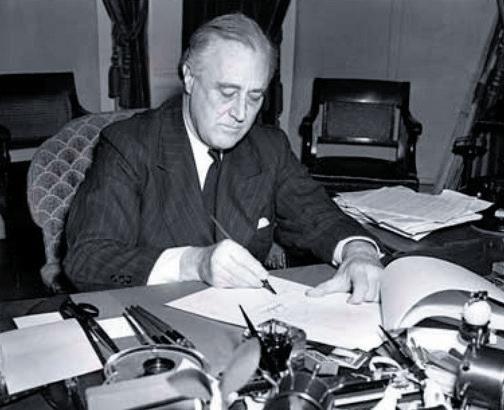
MOOSEJAWEXPRESS.COM ✦ REMEMBRANCE DAY ✦ NOVEMBER 2022 • PAGE 35
Roosevelt sighing the Lend-Lease Act
Personnel with a firetruck, No.1 Service Flying Training School (Royal Canadian Air force Schools and Training Units), Royal Canadian Air Force (R.C.A.F.), Camp Borden, Ontario, Canada, October 1944. LAC Photo #3643567




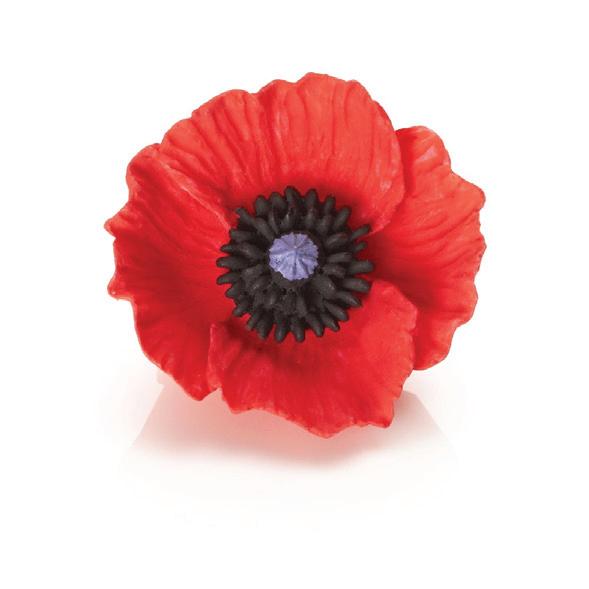


PAGE 36 • MOOSEJAWEXPRESS.COM ✦ REMEMBRANCE DAY ✦ NOVEMBER 2022 They shall grow not old, as we that are left grow old: Age shall not weary them, nor the years condemn. At the going down of the sun and in the morning, We will remember them. Laurence Binyon, For The Fallen Army, Navy and Airforce Veterans MOOSE JAW No. 252 279 High Street West For Membership Information Please call: 306-692-4412 Remember All Our Fallen Heroes Today Tomorrow and Always


















 By Jason G. Antonio
By Jason G. Antonio






 By Richard Dowson
By Richard Dowson





















































 By Richard Dowson
By Richard Dowson



























































 By Jason G. Antonio
By Jason G. Antonio




 By Jason G. Antonio
By Jason G. Antonio













































































 Bill Barry
Bill Barry




















